Must-see attractions in Poland
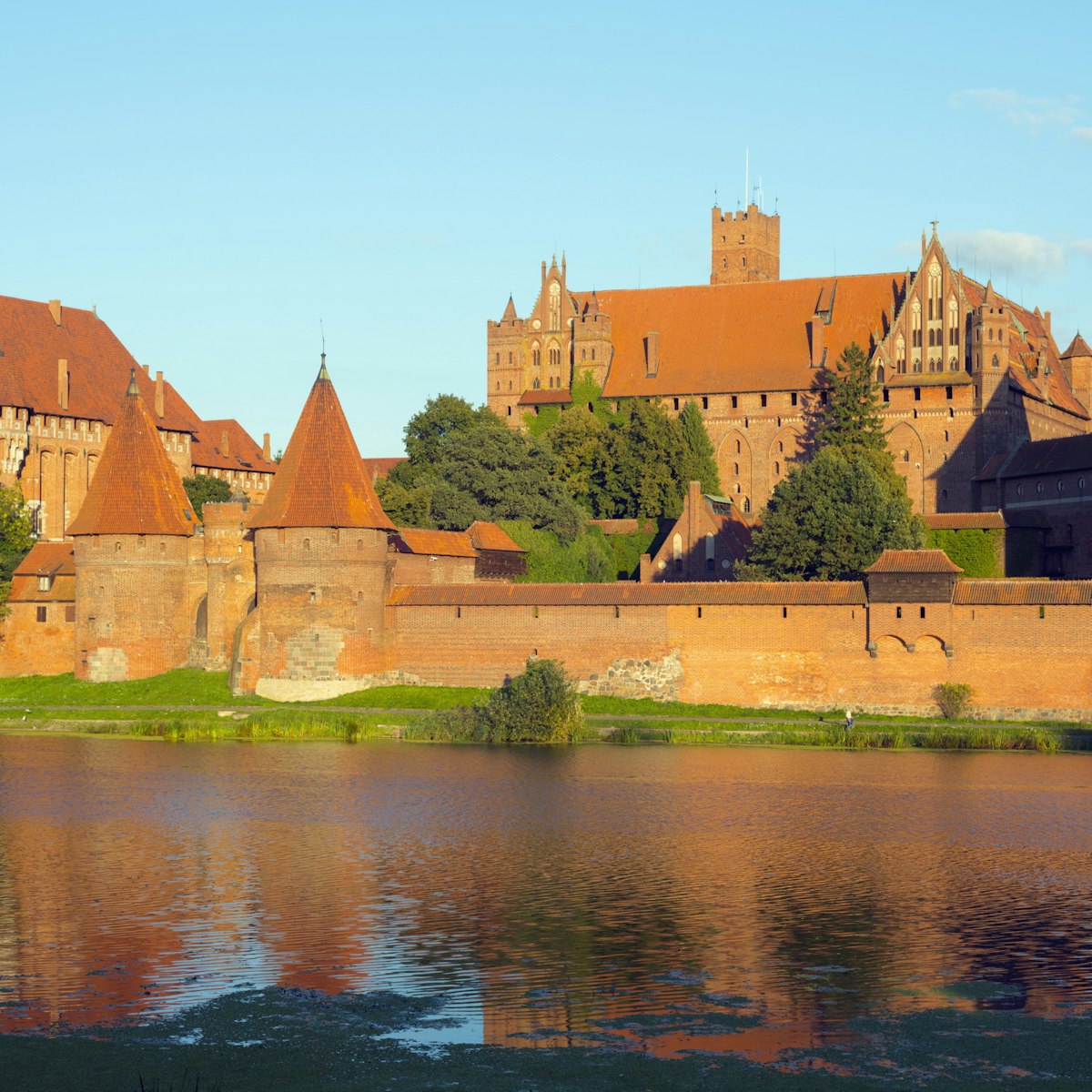
Malbork Castle
Gdańsk & Pomerania
Malbork’s blockbuster attraction is its show-stoppingly massive castle sitting on the banks of the sluggish Nogat River, an eastern arm of the Vistula…
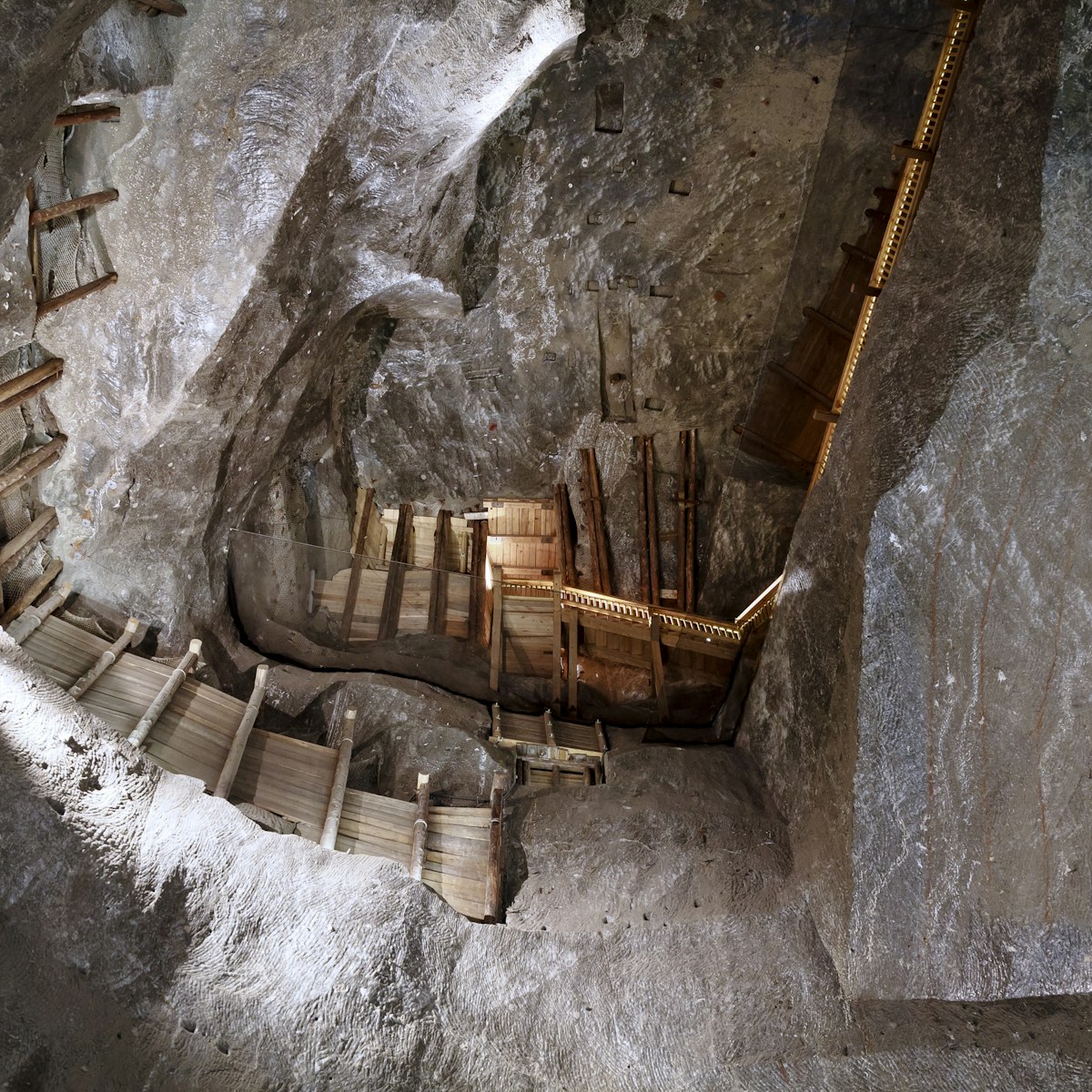
Wieliczka Salt Mine
Some 14km southeast of Kraków, the Wieliczka (vyeh-leech-kah) salt mine has been welcoming tourists since 1722 and today is one of Poland's most popular…
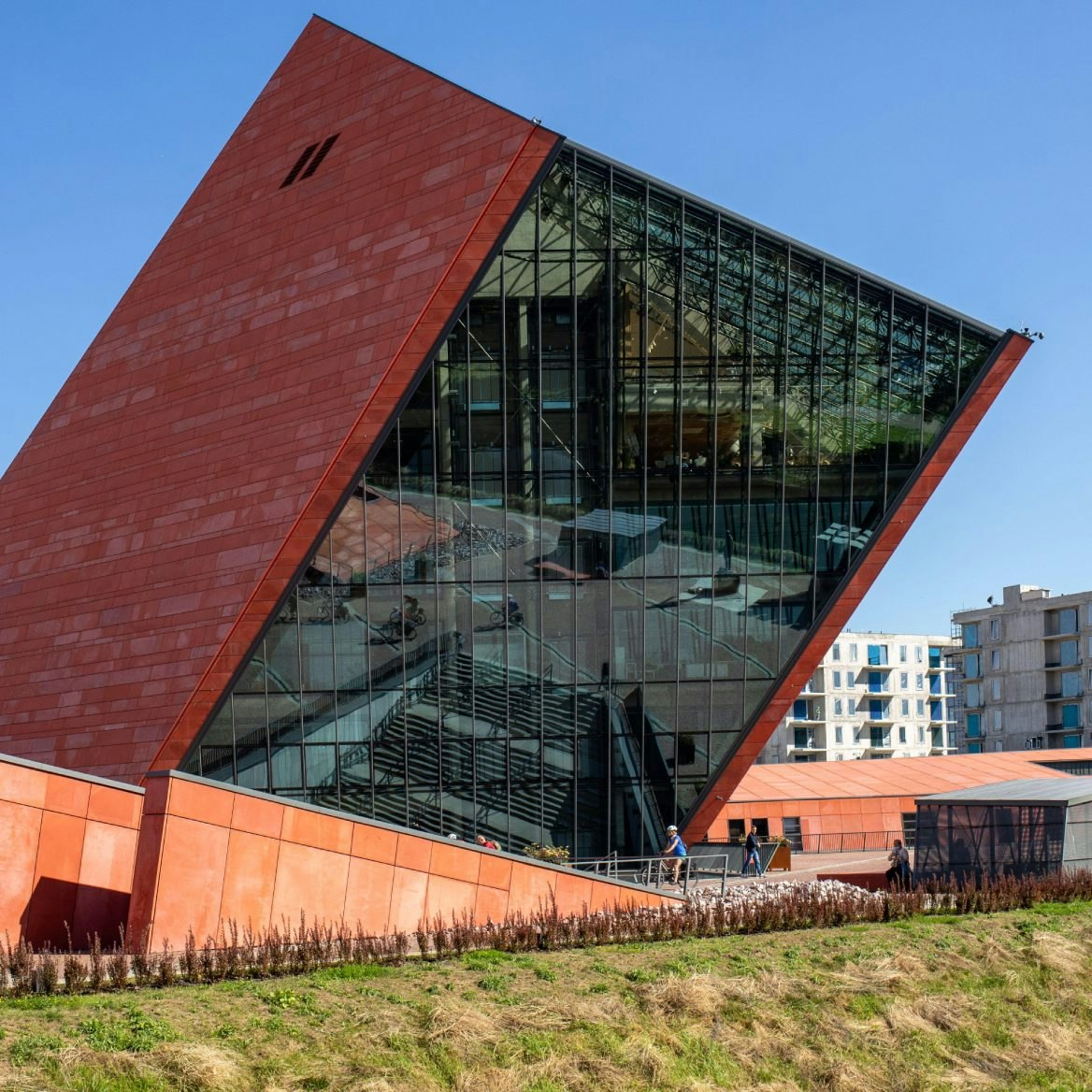
Museum of WWII
Opened in 2016, this striking piece of modern architecture is a bold addition to the northern end of Gdańsk's waterfront. It has rapidly become one of…
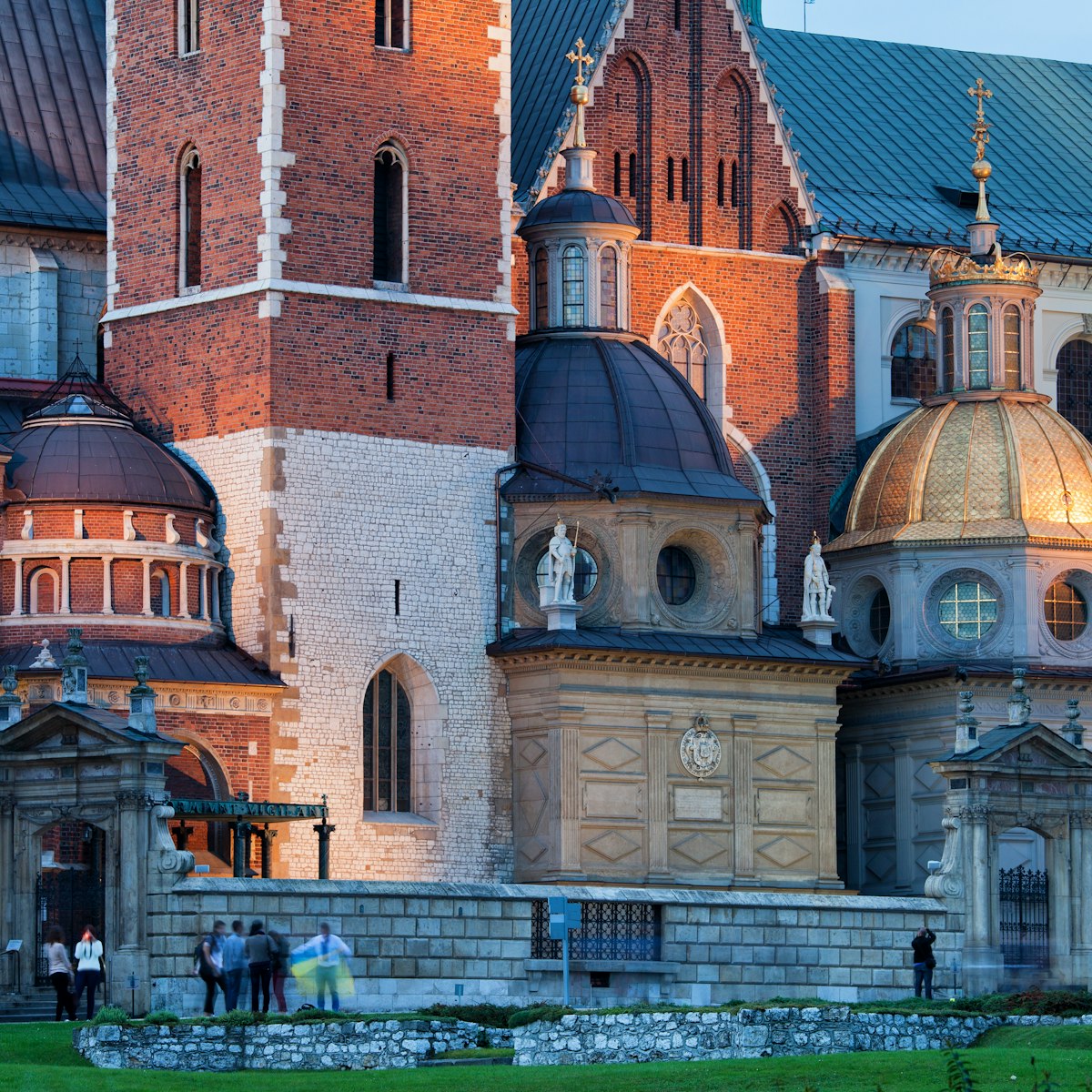
Wawel Royal Castle
As the political and cultural heart of Poland through the 16th century, Wawel Royal Castle is a potent symbol of national identity. It's now a museum…

Auschwitz-Birkenau Memorial & Museum
Auschwitz-Birkenau is synonymous with the Holocaust. More than a million Jews, and many Poles and Roma, were murdered here by German Nazis during WWII…
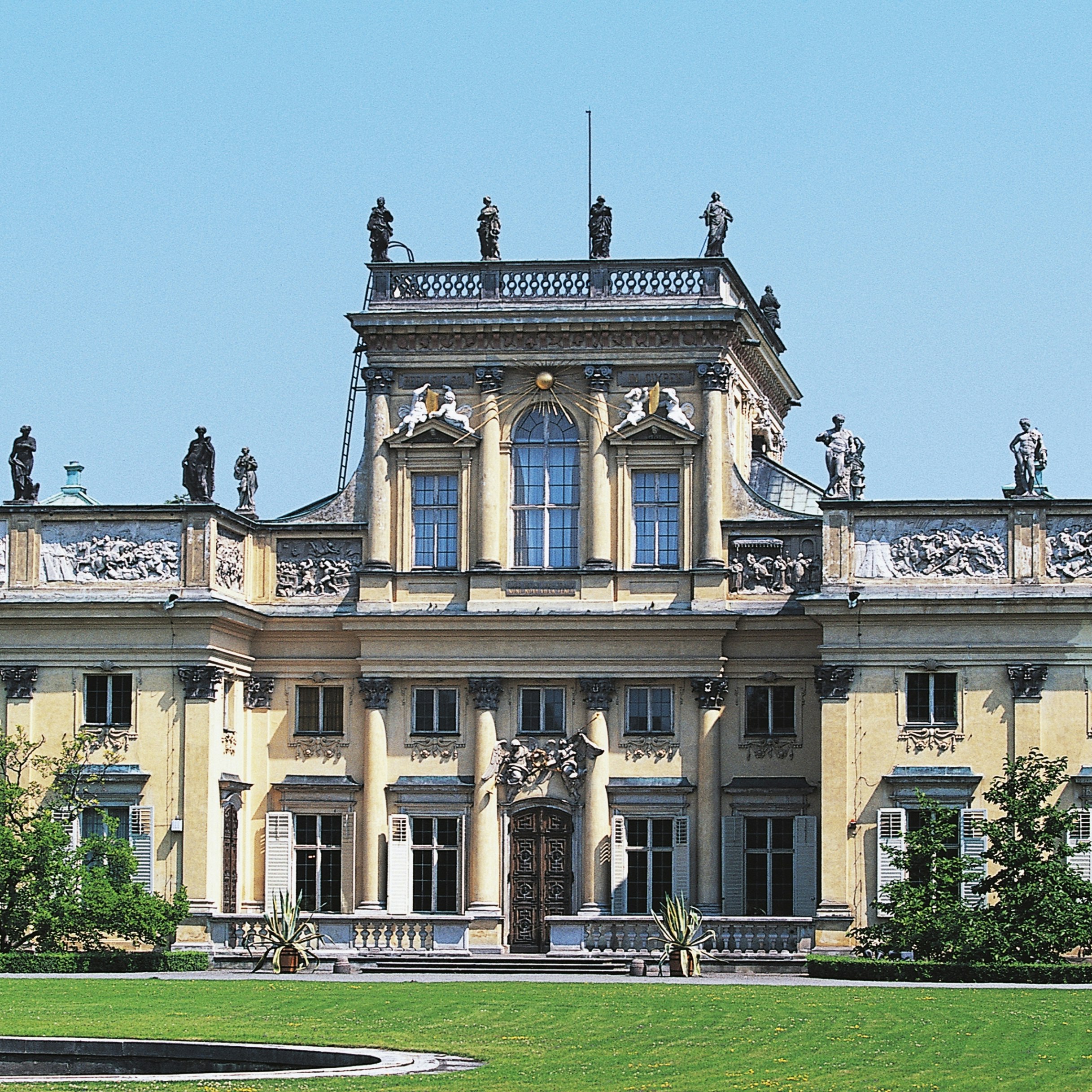
Wilanów Palace
Warsaw’s top palace, 10km south of the city centre, was commissioned by King Jan III Sobieski in 1677. It has changed hands several times over the…
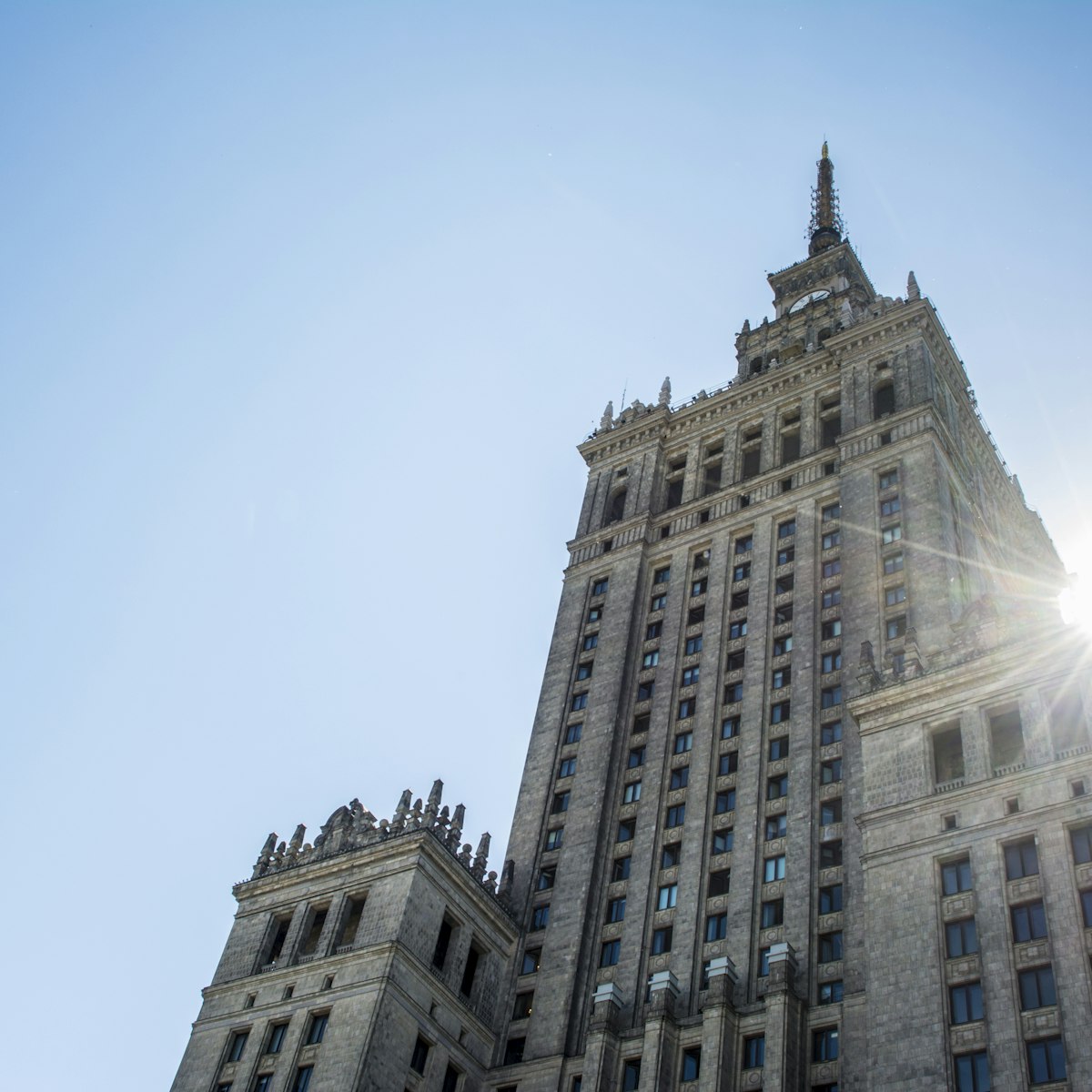
Palace of Culture & Science
For over 60 years this socialist realist palace has dominated central Warsaw. A ‘gift of friendship’ from the Soviet Union, it was completed in 1955 and…
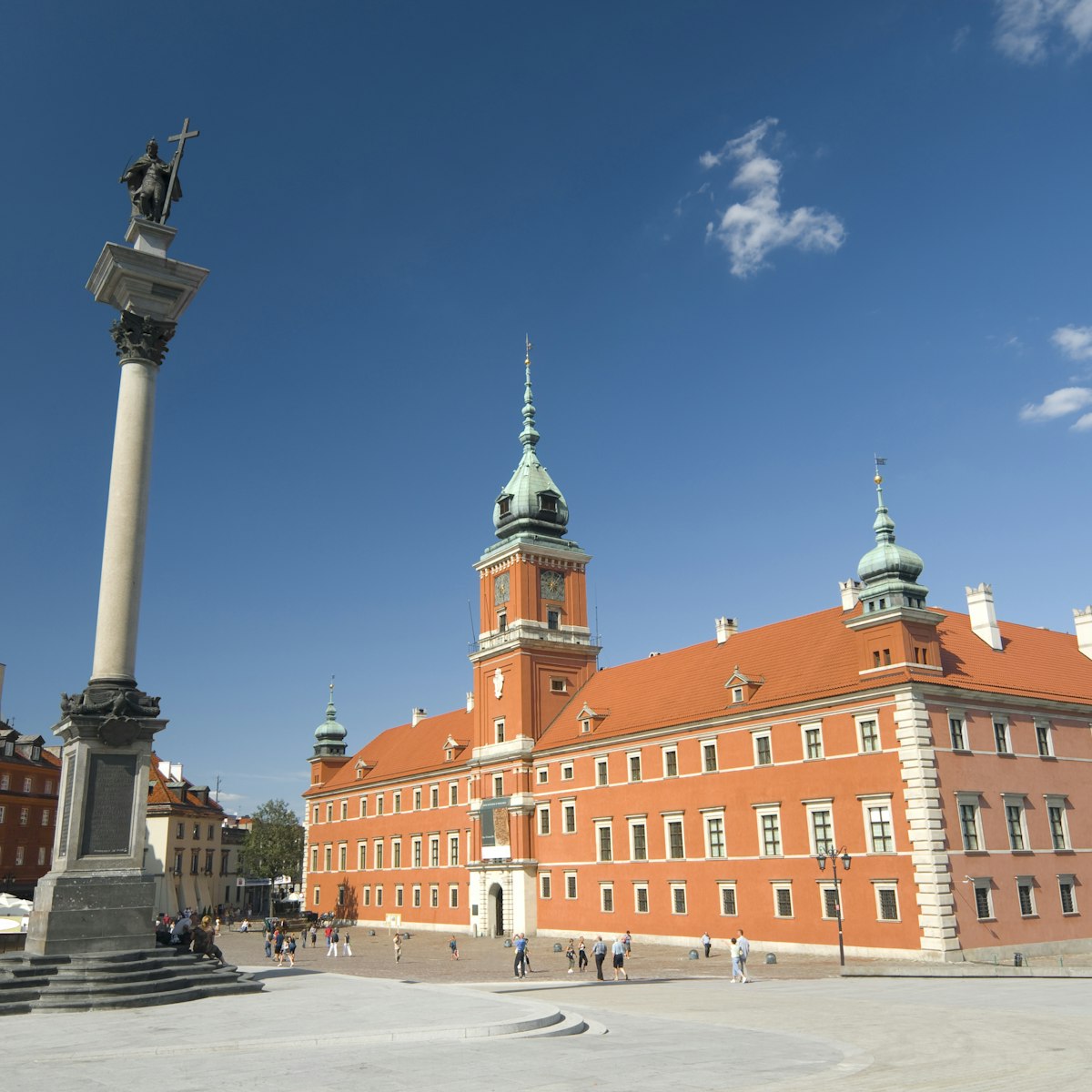
Royal Castle
This remarkable copy of the original castle blown up by the Germans in WWII is filled with authentic period furniture and original works of art…
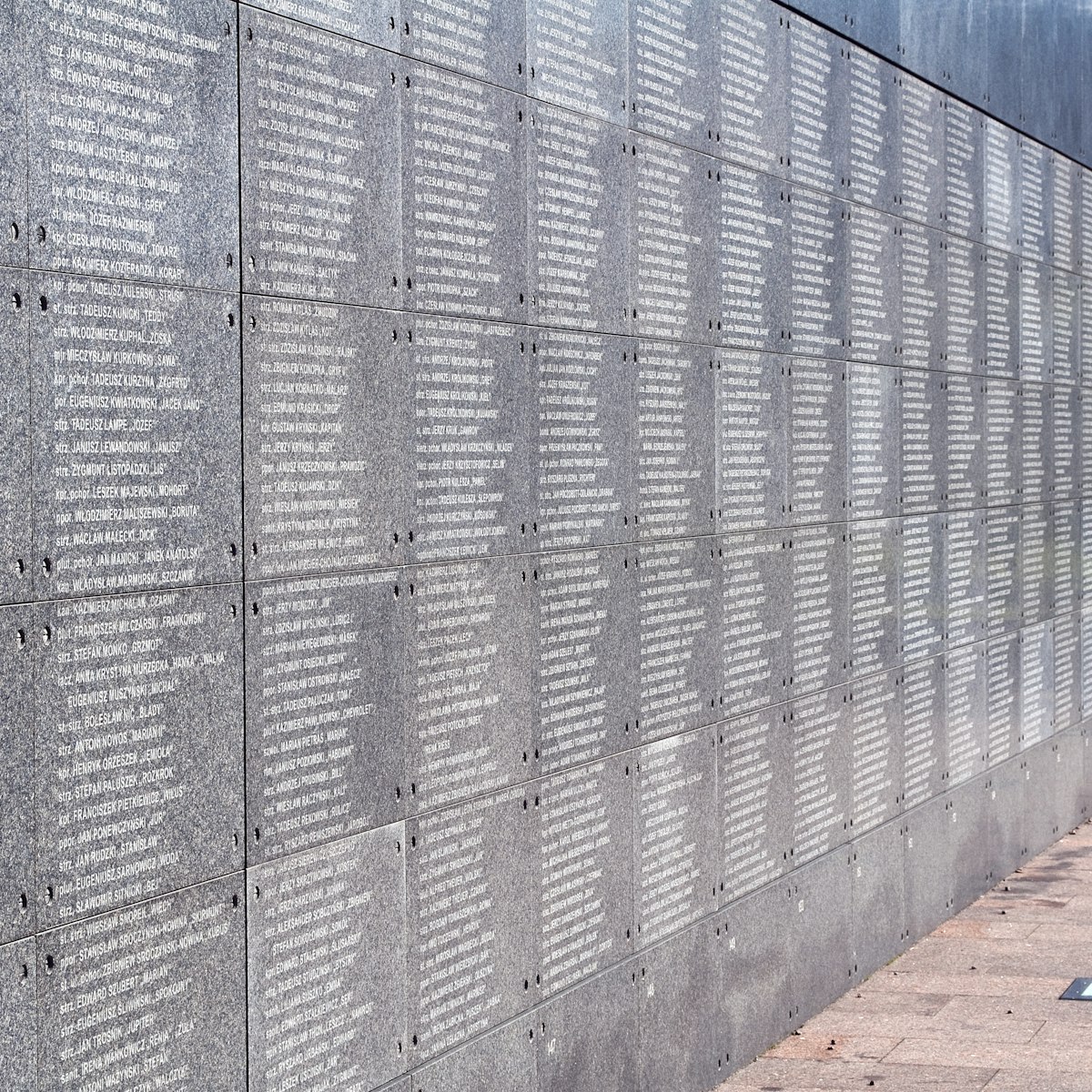
Warsaw Rising Museum
This exceptional museum, housed in a former tram power station and its surrounding grounds, traces the history of the city's heroic but doomed uprising…
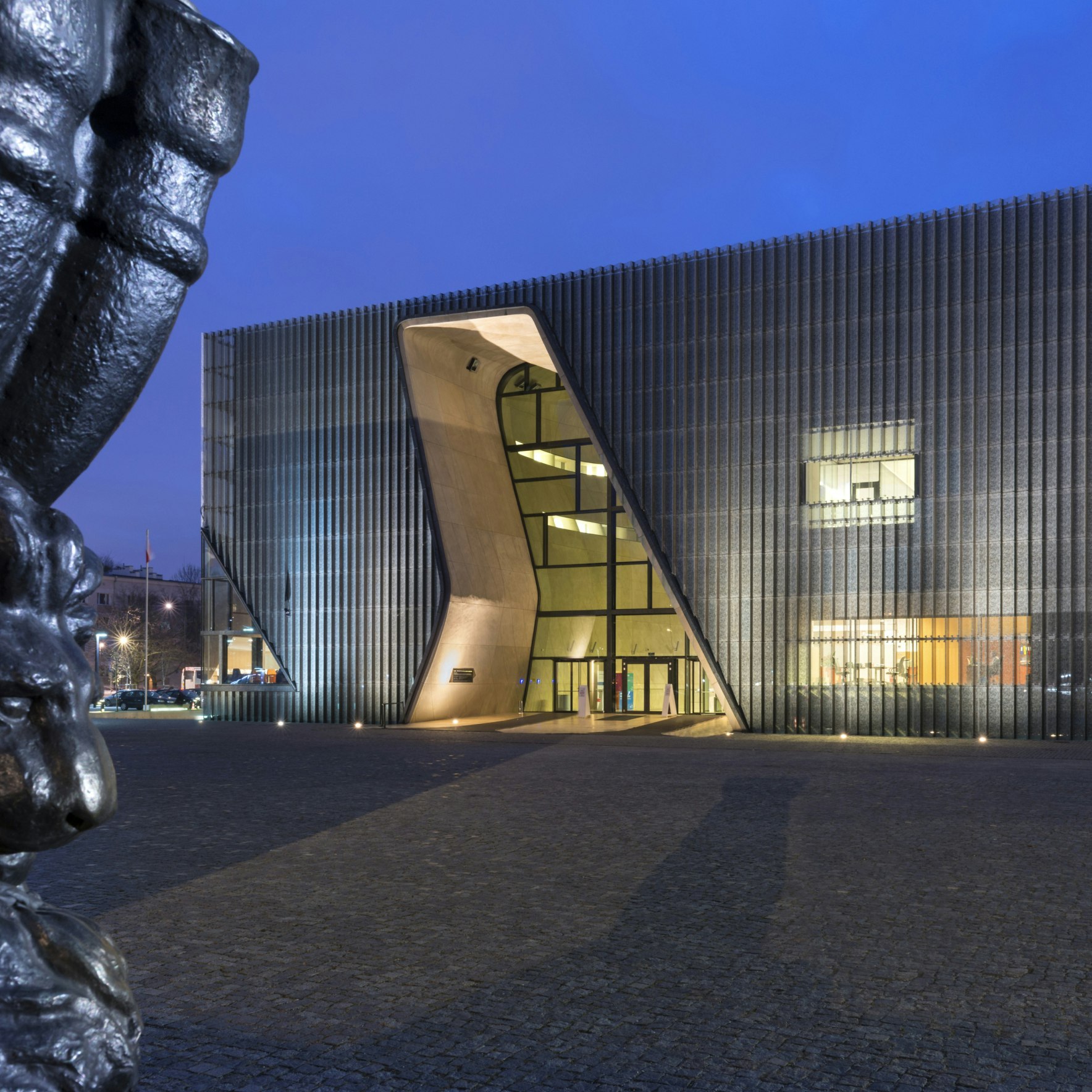
POLIN Museum of the History of Polish Jews
Housed in one of Warsaw's best examples of contemporary architecture, this award-winning museum documents 1000 years of Jewish history in Poland. The…
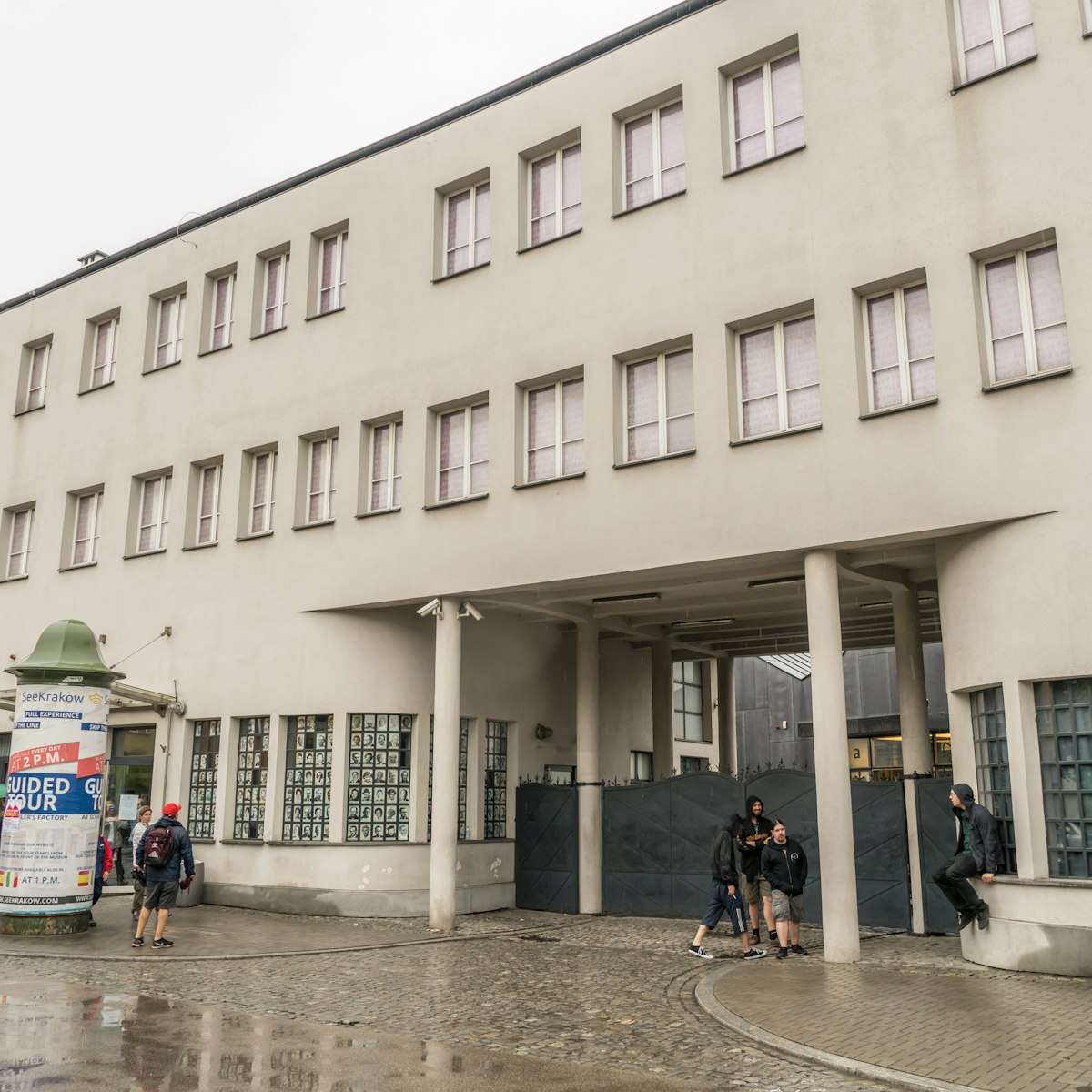
Schindler's Factory
Despite the name, this museum covers more than the story of Oskar Schindler, the Nazi German industrialist who famously saved the lives of members of his…

Auschwitz I
Auschwitz I was only partially destroyed by the fleeing Germans, and many of the original brick buildings stand to this day as a bleak testament to the…
Birkenau (Auschwitz II)
Though much of Birkenau was destroyed by the retreating Germans, the size of the place, fenced off with long lines of barbed wire and watchtowers…
Copernicus Science Centre
The fully interactive, push-the-buttons-and-see-what-happens Copernicus Science Centre pulls off that tricky feat of being both hugely fun and educational…
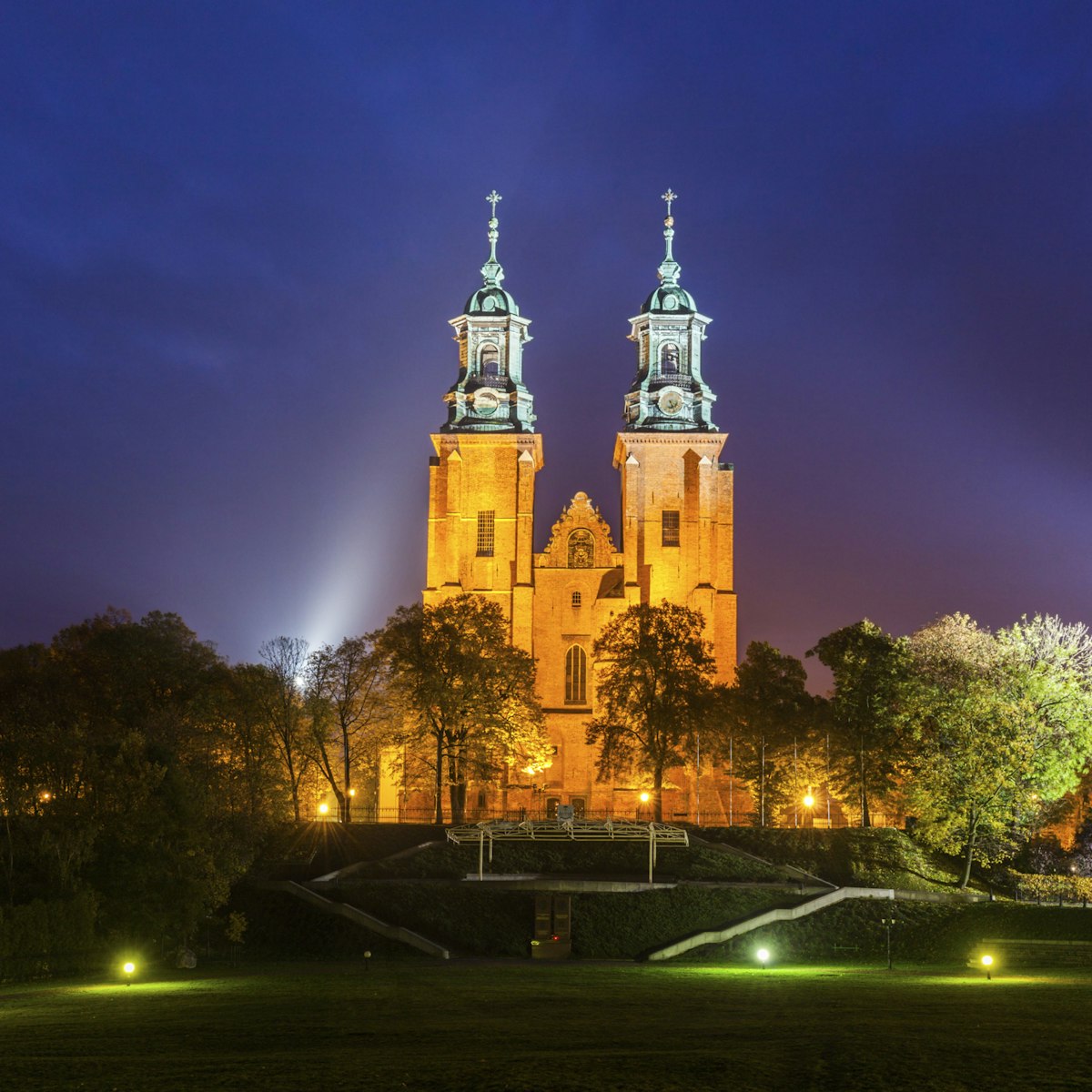
Gniezno Cathedral
Wielkopolska
Gniezno’s history and character are inextricably intertwined with its cathedral, an imposing, double-towered brick Gothic structure. The present church…
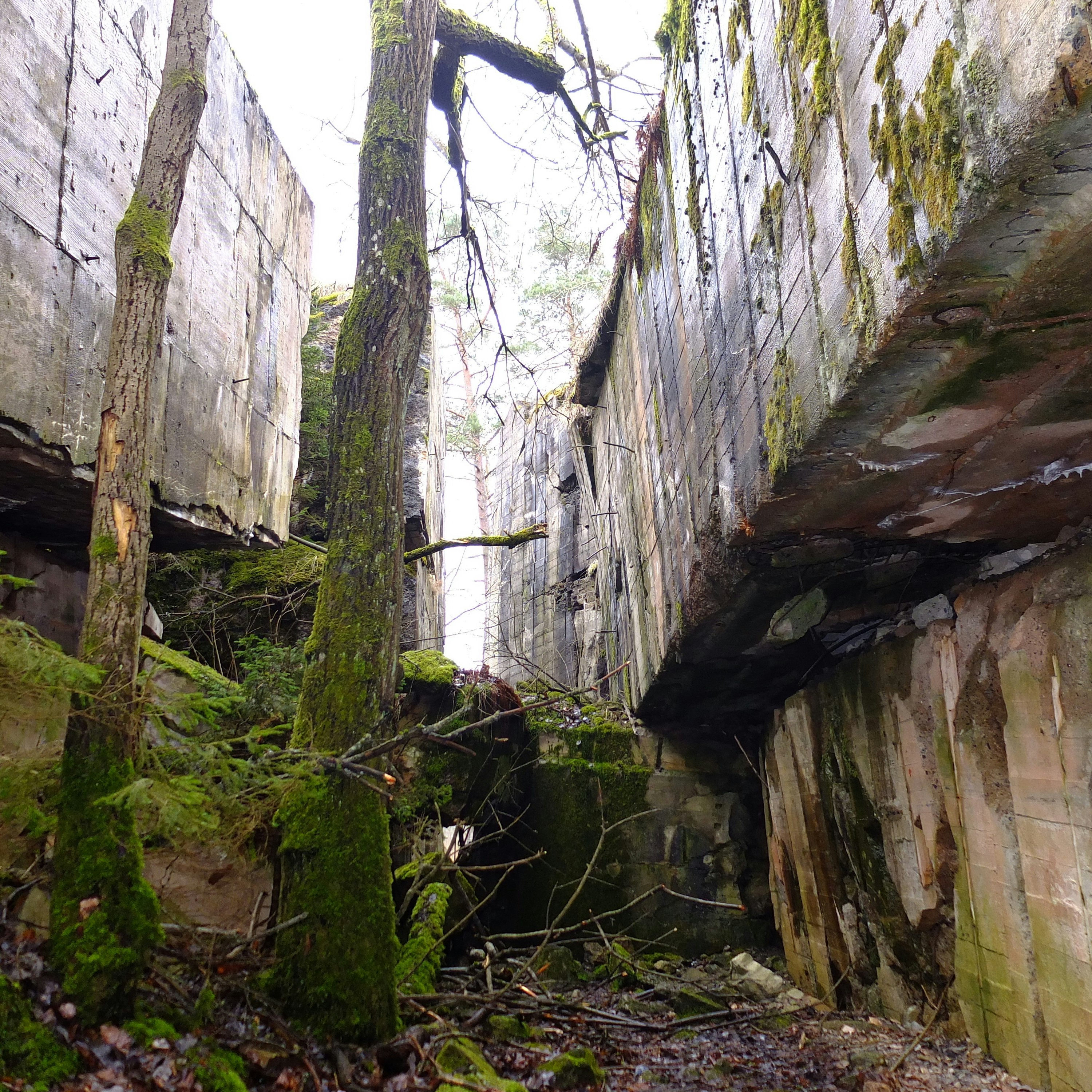
Wolf's Lair
The Great Masurian Lakes
Hidden in thick forest near the hamlet of Gierłoż, 8km east of Kętrzyn, is one of Poland’s eeriest historical relics – 18 overgrown hectares of huge,…
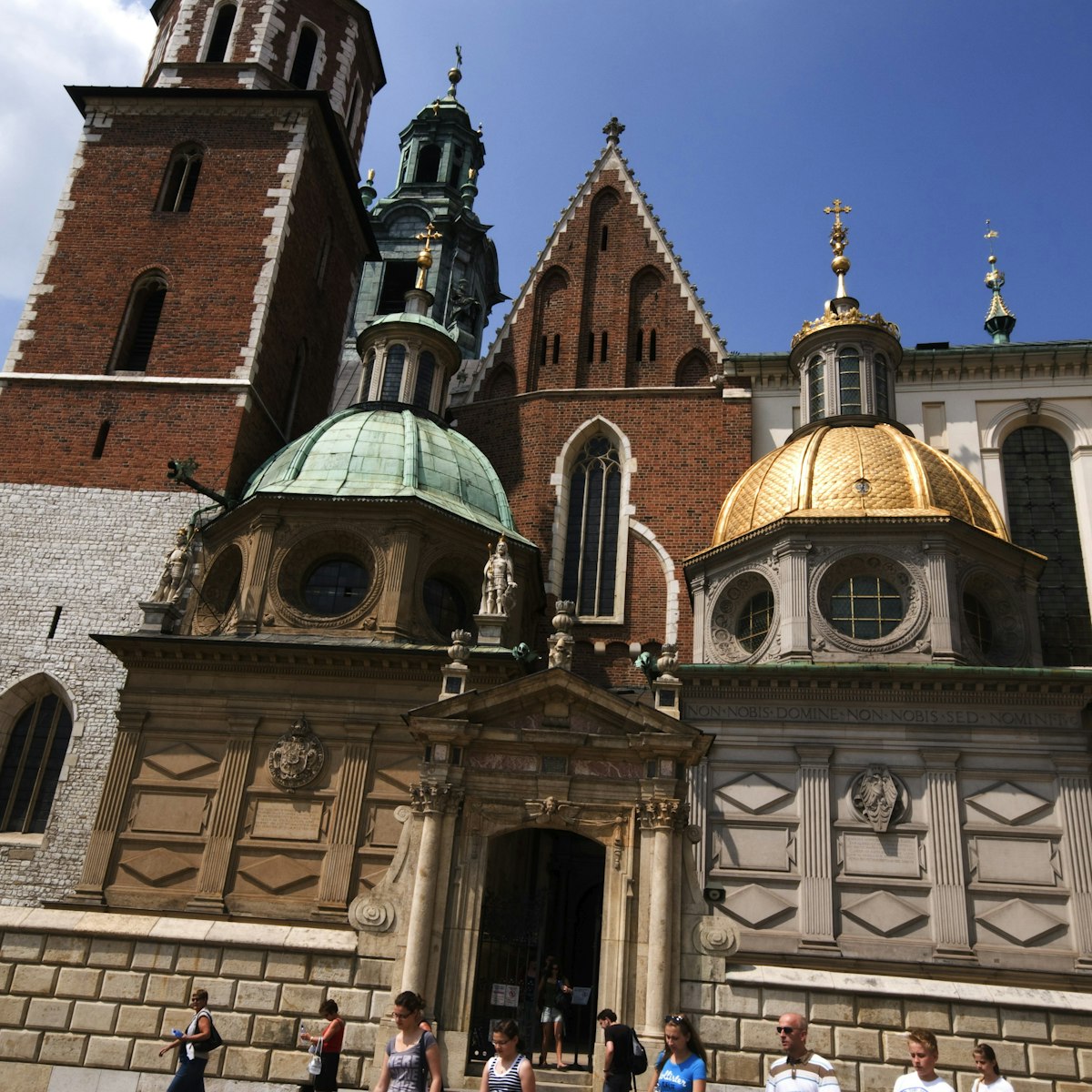
Wawel Cathedral
Wawel Cathedral has witnessed many coronations, funerals and burials of Poland’s monarchs and nobles. The present cathedral is basically a Gothic, but…
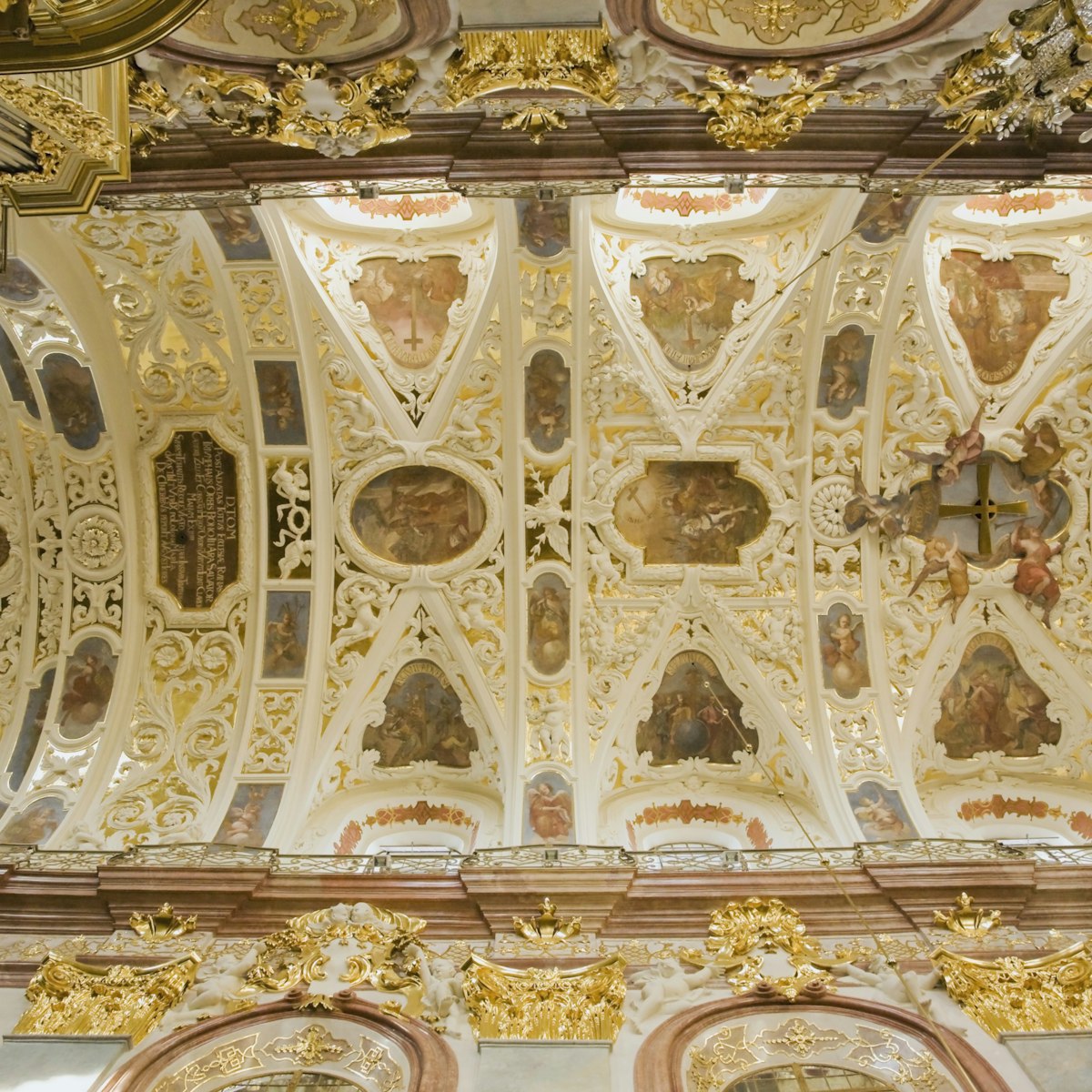
Paulite Monastery of Jasna Góra
The Kraków−Częstochowa Upland
Poland’s spiritual capital began with the arrival of the Paulite order from Hungary in 1382, who named the 293m hill in the western part of the city …
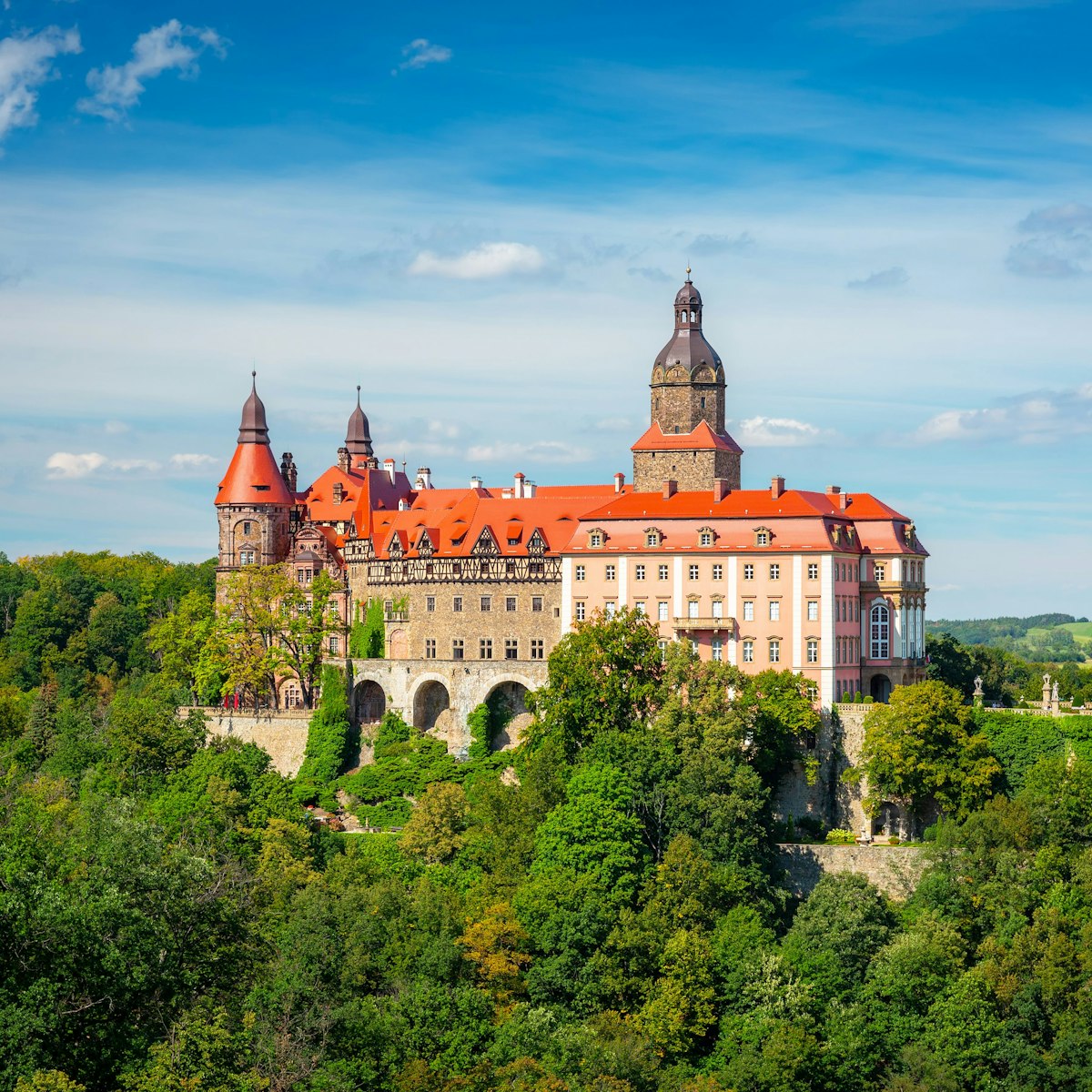
Książ Castle
Lower Silesia
This impossibly photogenic castle, the largest in Silesia, commands a thickly wooded prominence in Książ. Following the destruction of an earlier…
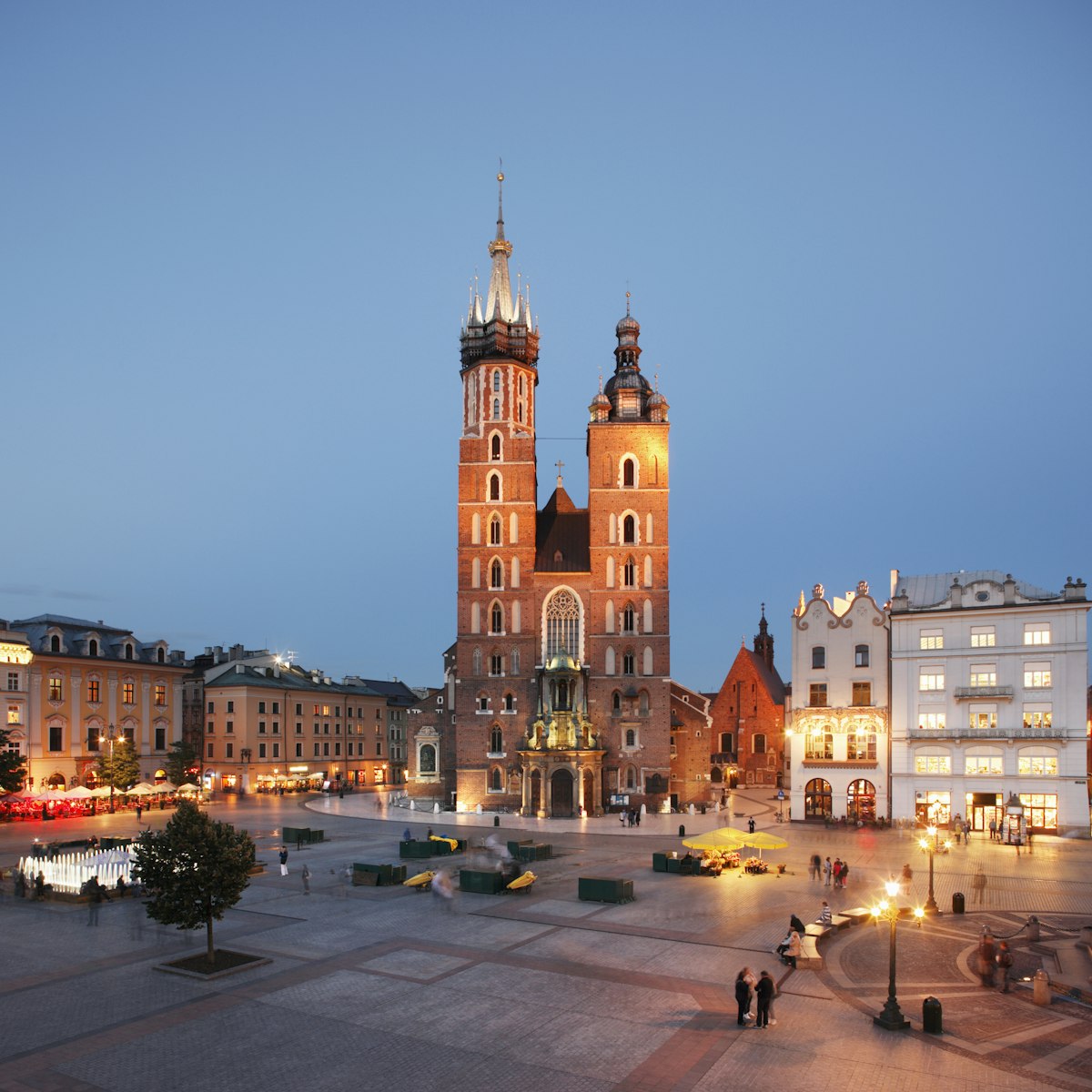
St Mary's Basilica
This striking brick church, best known simply as St Mary’s, is dominated by two towers of different heights. The first church here was built in the 1220s…
Treblinka Memorial
In a remote clearing, hidden in a Mazovian pine forest, stands a granite monolith; around it is a small field of 17,000 jagged, upright stones, many…
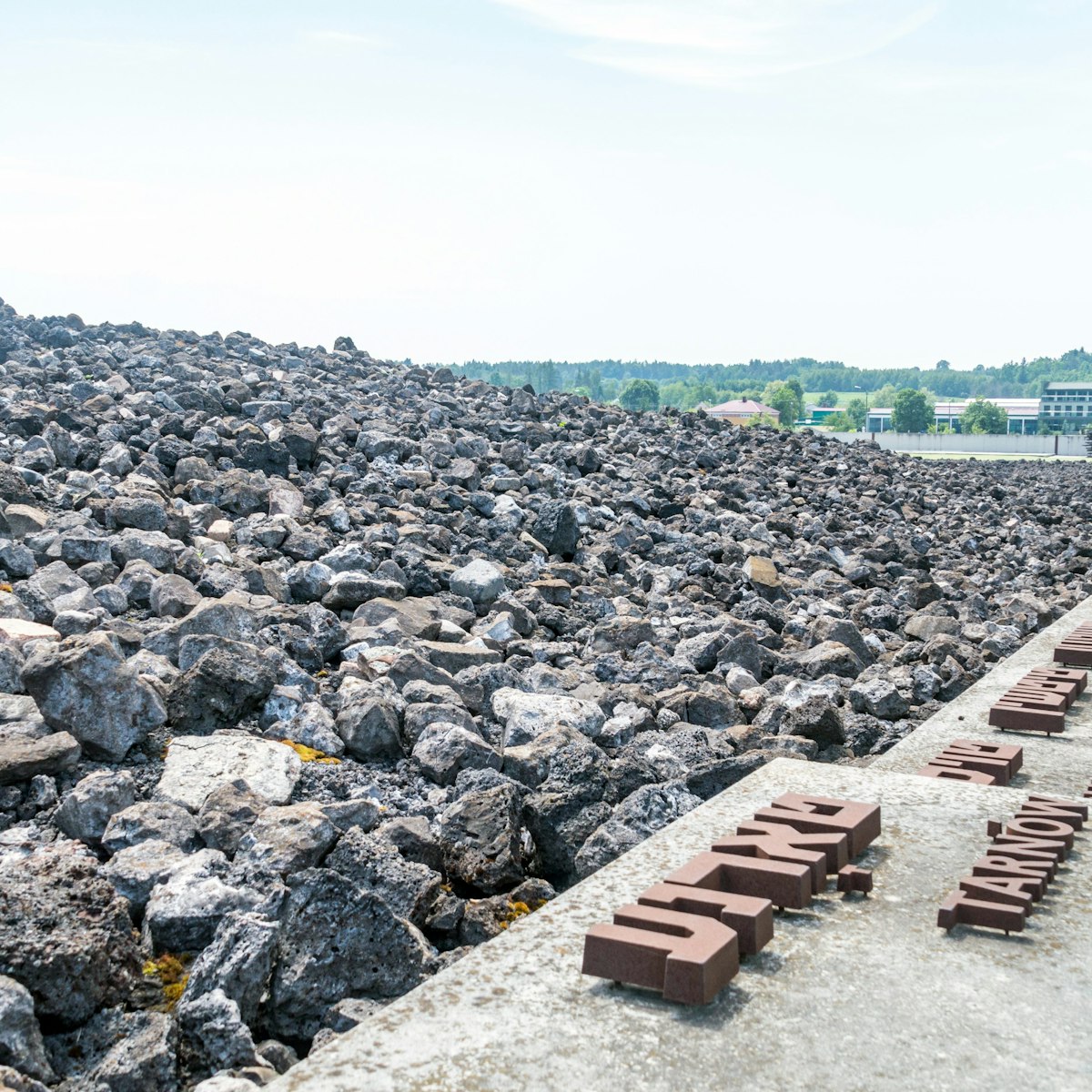
Bełżec Memorial
This subdued memorial and museum bears witness to the 600,000 Jews killed here in 1942 by the Nazis as part of their ‘Operation Reinhard’, the German plan…
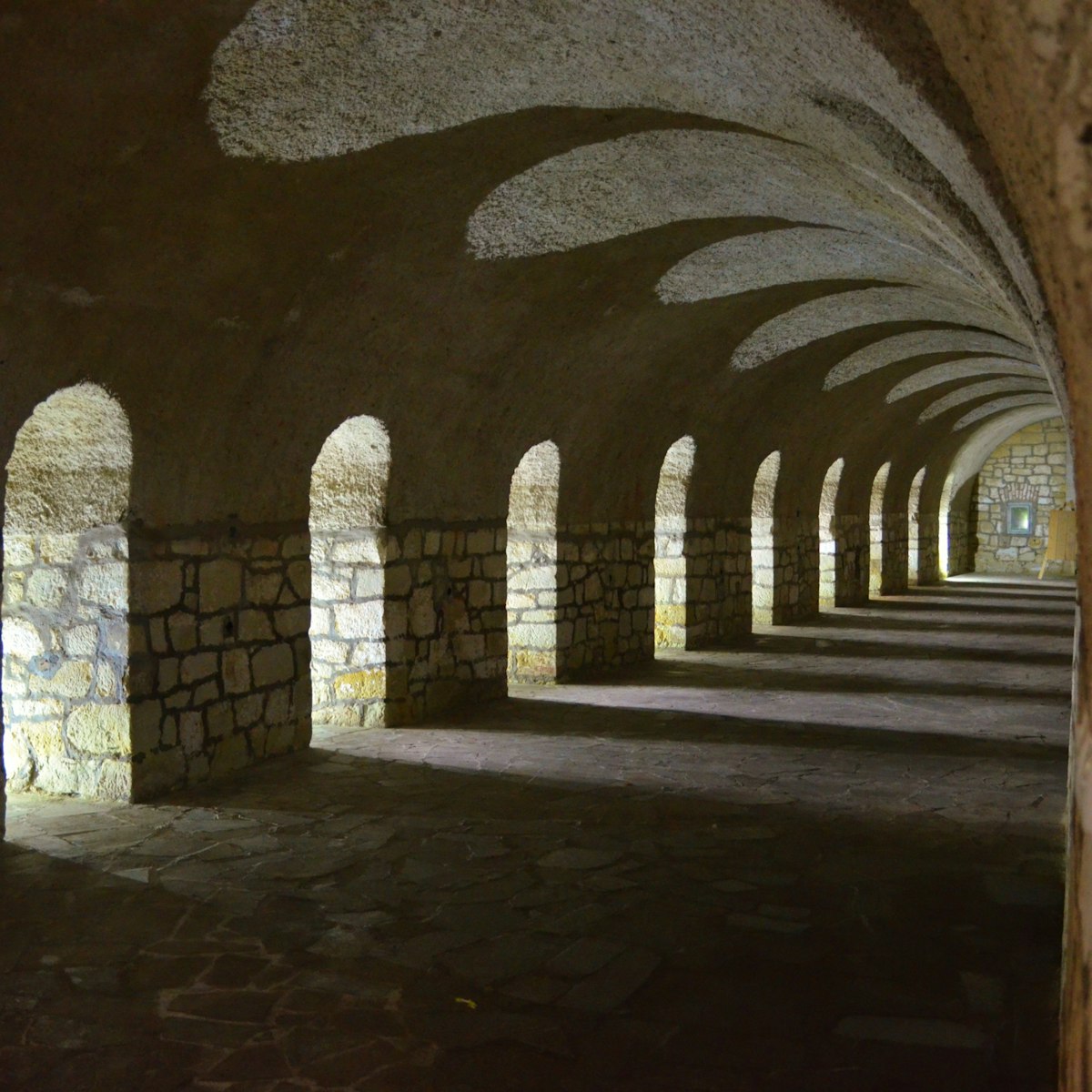
Kłodzko Fortress
Sudetes Mountains
This mighty fortification, begun under Austrian rule in the mid-17th century on the site of former strongholds dating to the 10th century, was extended…
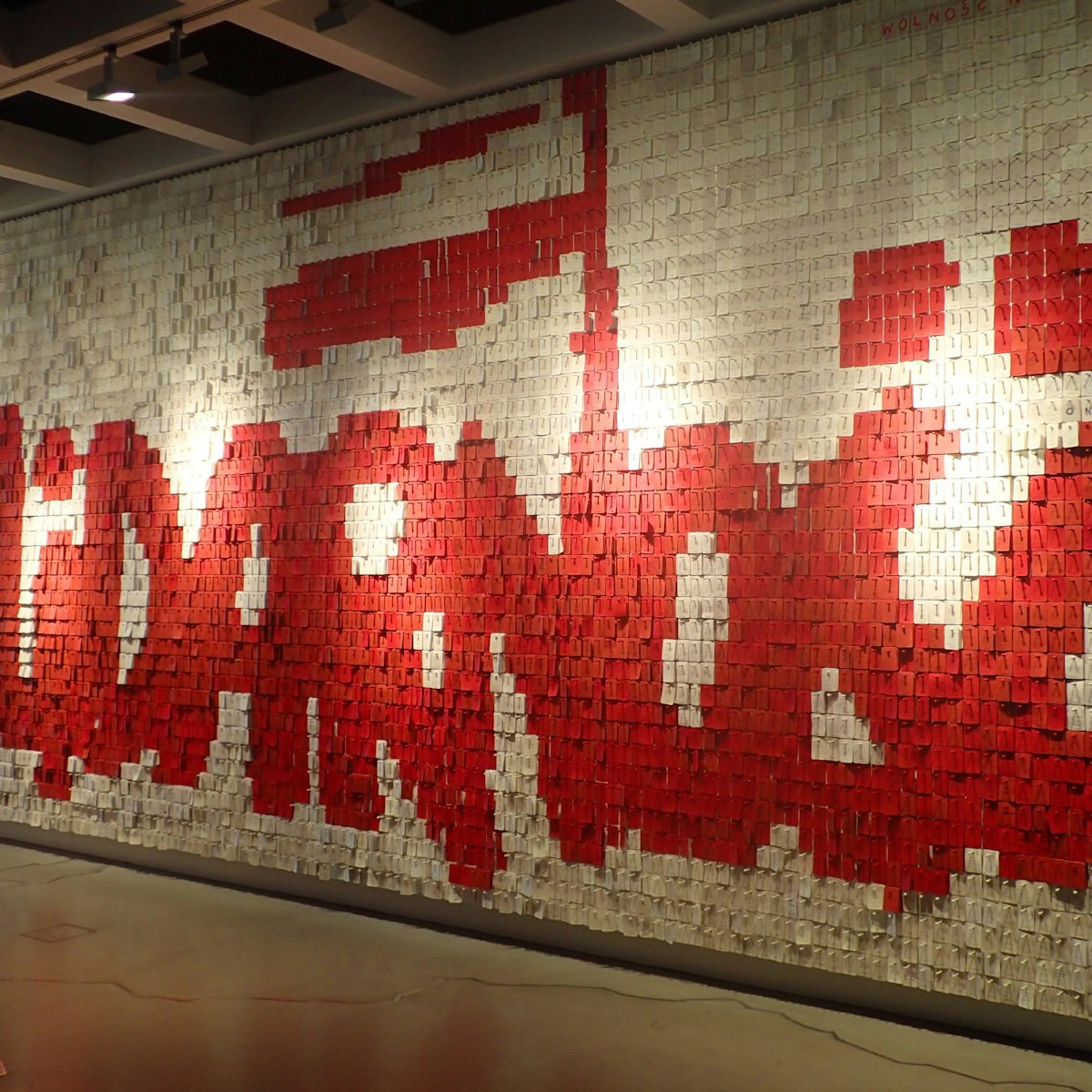
European Solidarity Centre
Opened in 2014, and housed in a truly awful example of 21st-century architecture (its rusty steel plates were designed to evoke ships under construction),…

Collegium Maius
The Collegium Maius, part of Jagiellonian University, is the oldest surviving university building in Poland, and one of the finest examples of 15th…
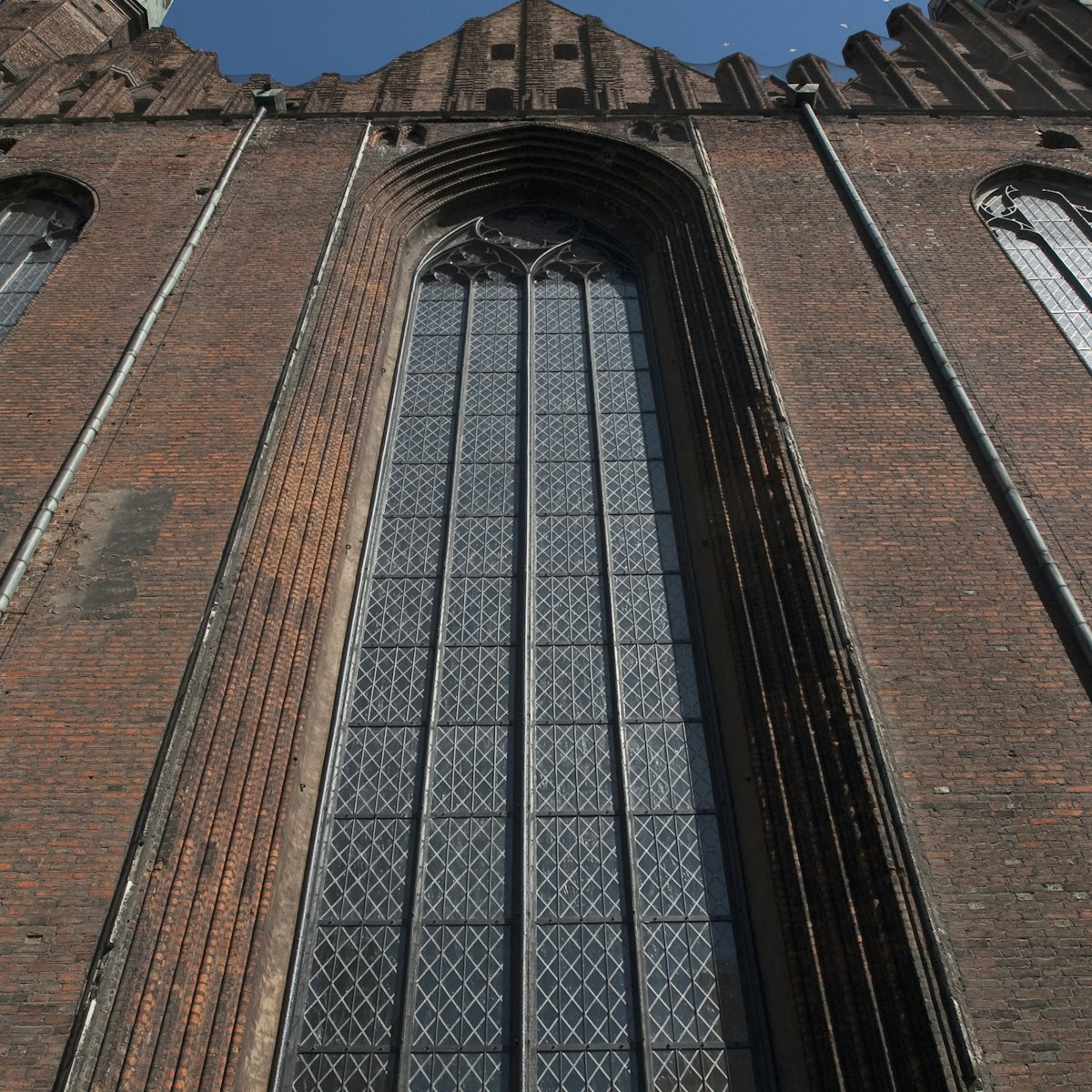
St Mary's Church
Dominating the heart of the Old Town, St Mary’s is often cited as the largest brick church in the world, its massive 78m-high tower dominating the Gdańsk…
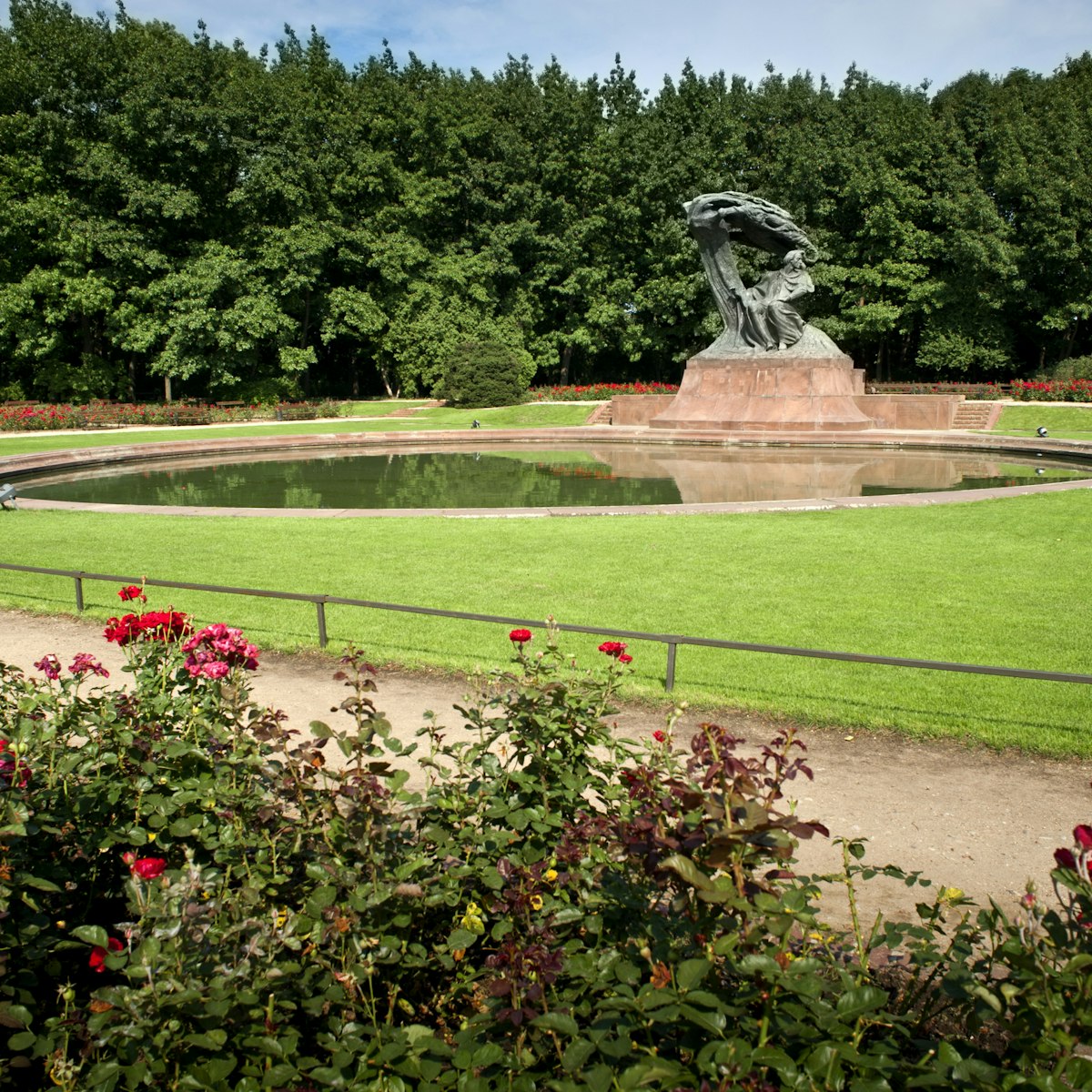
Łazienki Park
Pronounced wah-zhen-kee, this beautiful park includes manicured gardens, an ornamental lake, wooded glades and strutting peacocks. Once a hunting ground,…

Jewish Cemetery
Łódź's Jewish cemetery was founded in 1892 and today is a haunting destination. The largest Jewish graveyard in Europe, it contains around 68,000…

Museum of Pharmacy
The name of this museum doesn’t sound that exciting, but the Jagiellonian University Medical School’s Museum of Pharmacy is one of the largest museums of…
Majdanek concentration camp, where tens of thousands of people, mainly Jews, were murdered by the Germans during WWII, lies on the outskirts of Lublin –…
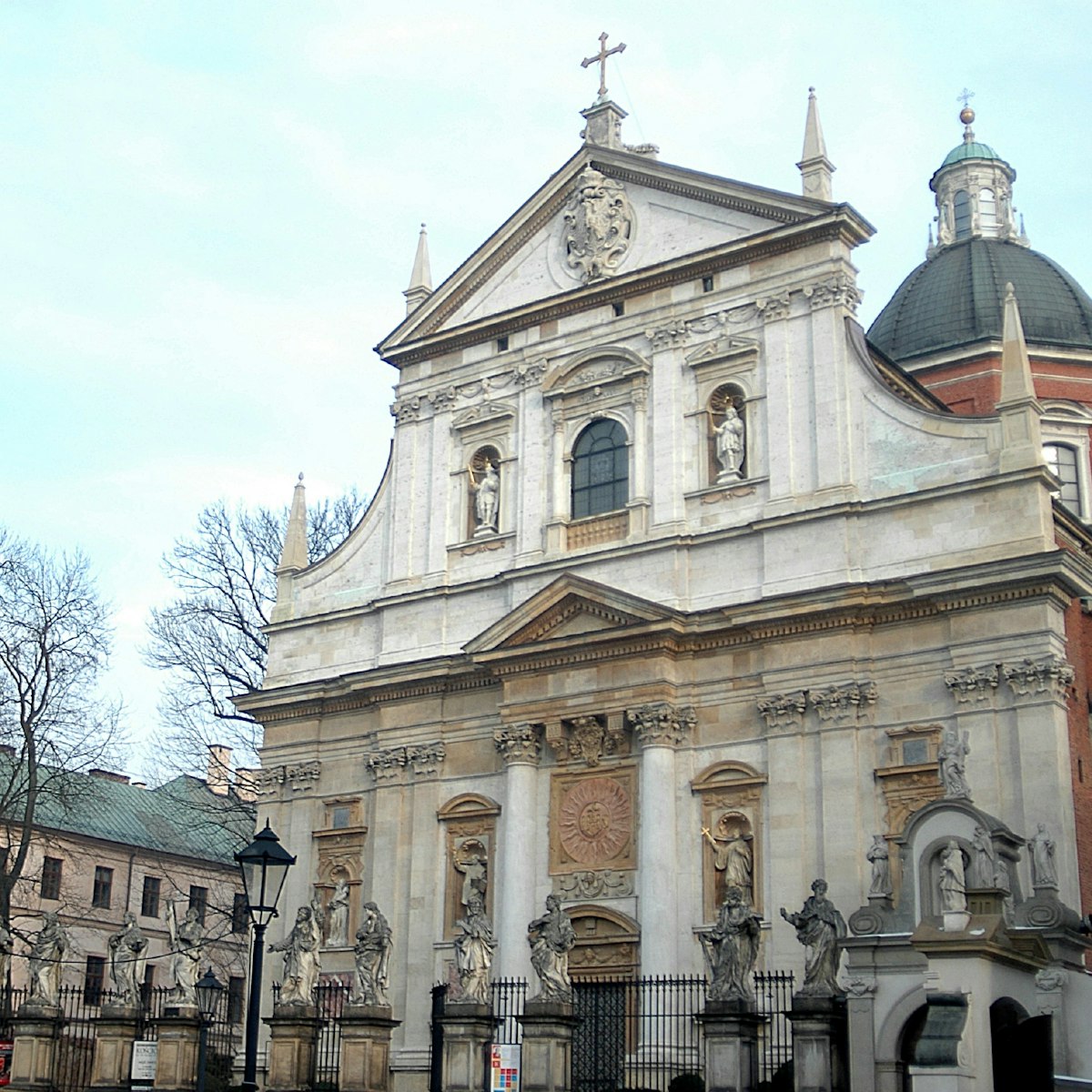
Church of SS Peter & Paul
The Jesuits erected this church, the first baroque building in Kraków, after they had been brought to the city in 1583 to do battle with supporters of the…
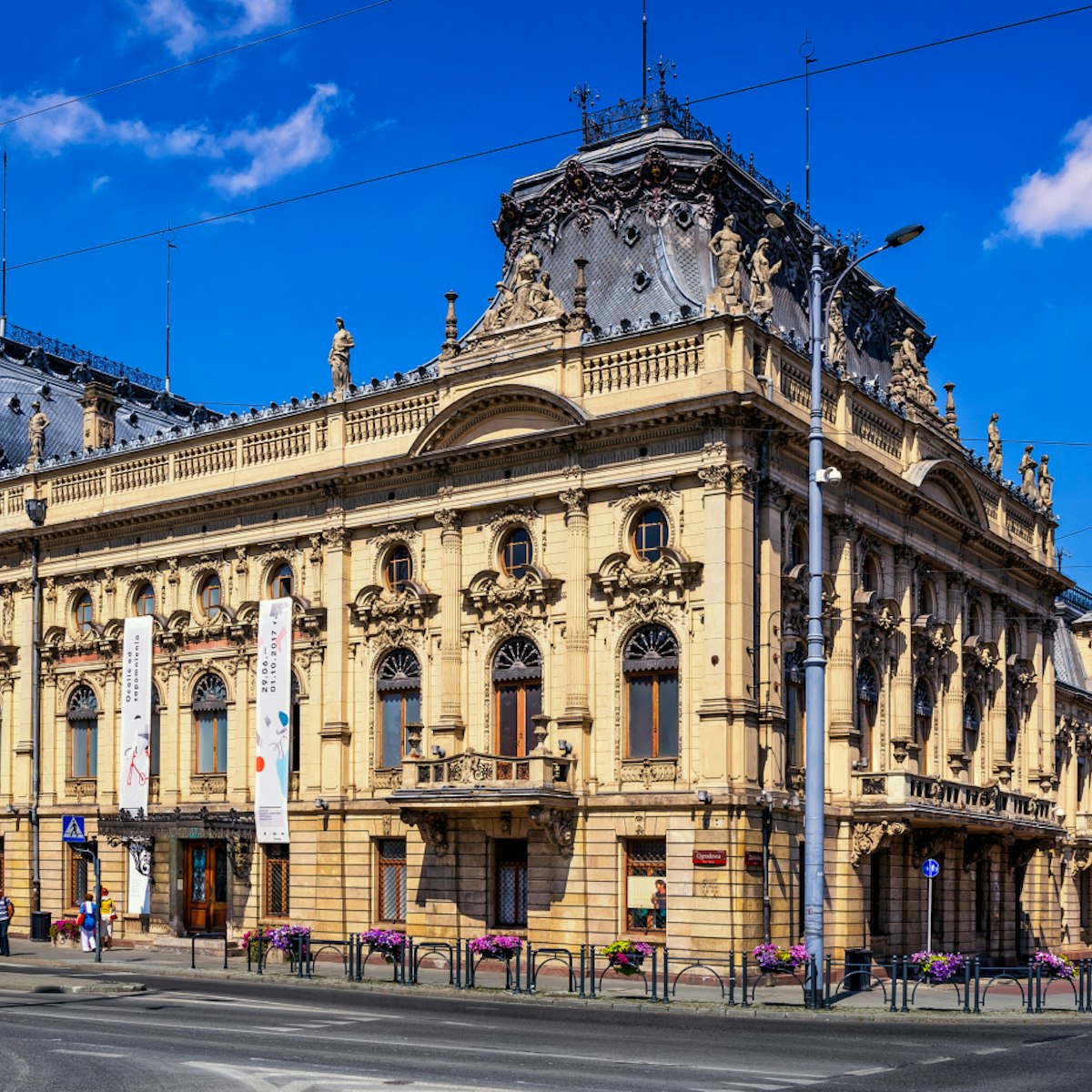
City Museum of Łódź
Adjacent to the Manufaktura mall, this museum is housed in the impressive palace of 19th-century textile baron Izrael Kalmanowicz Poznański. The opulent…
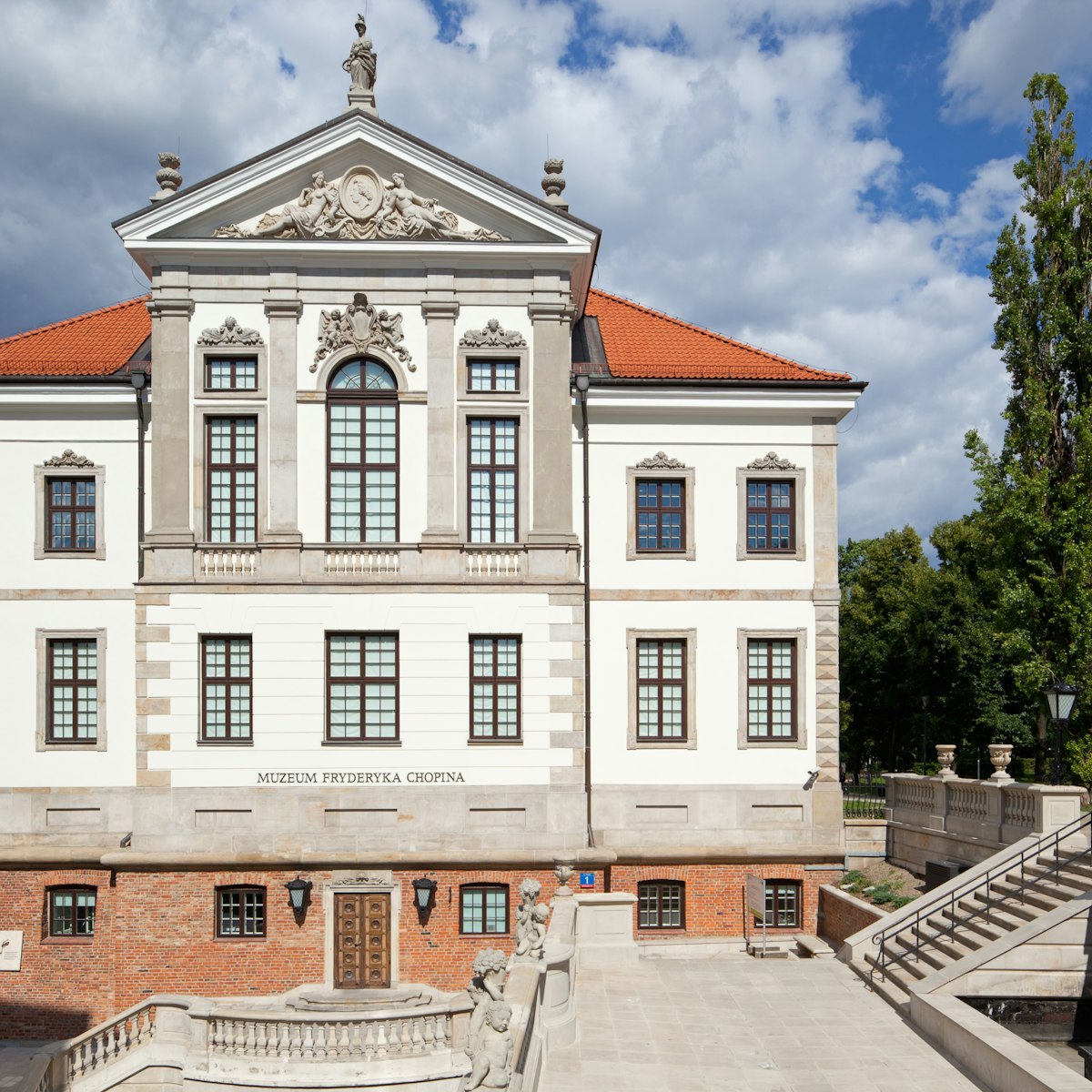
Fryderyk Chopin Museum
This multimedia museum within the baroque Ostrogski Palace showcases the work of Poland’s most famous composer. You’re encouraged to take your time…

Białowieźa National Park
Mazovia & Podlasie
Once a centre for hunting and timber-felling, Białowieża (Byah-wo-vyeh-zhah) is now Poland's oldest national park. Its significance is underlined by…

Kościuszko Mound
This mound, dedicated to Polish (and American) military hero Tadeusz Kościuszko (1746–1817), was erected between 1820 and 1823. It stands 34m high and…
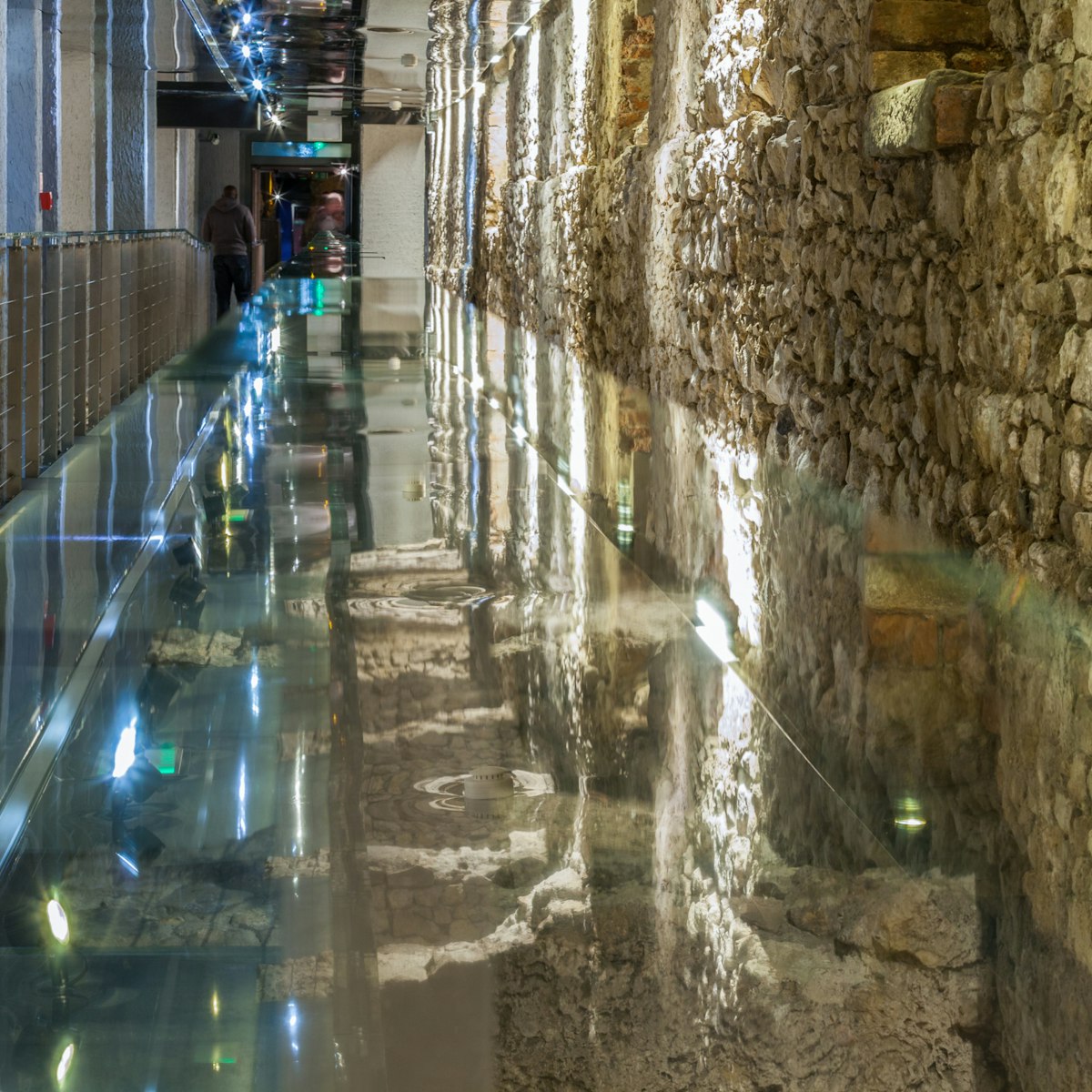
Rynek Underground
This fascinating attraction beneath the market square consists of an underground route through medieval market stalls and other long-forgotten chambers…
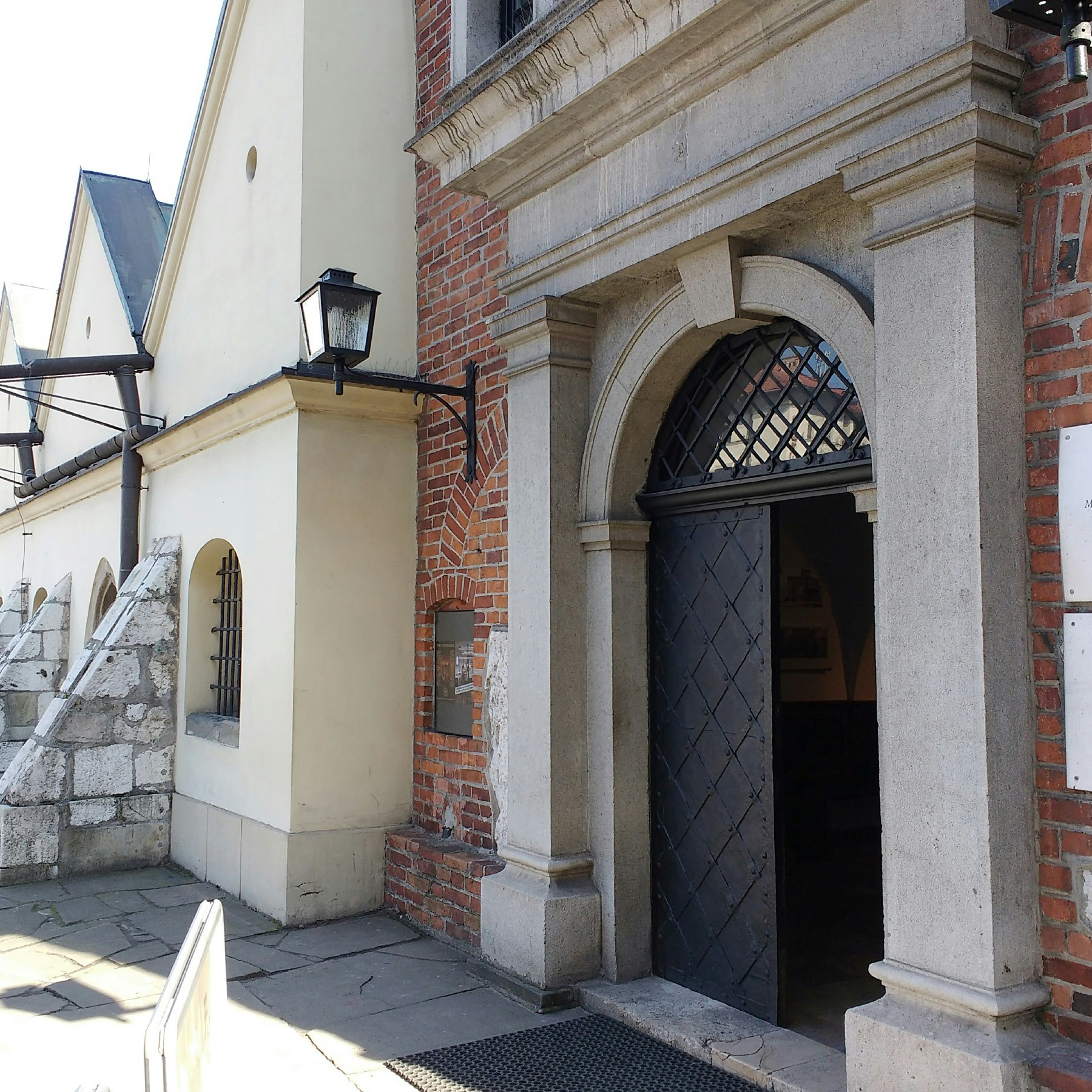
Galicia Jewish Museum
This museum both commemorates Jewish victims of the Holocaust and celebrates the Jewish culture and history of the former Austro-Hungarian region of…
Góry Stołowe National Park
The Góry Stołowe (goo-ri sto-wo-veh; Table Mountains) are among the most spectacular ranges of the Sudetes, as they’re topped by a plateau punctuated by…
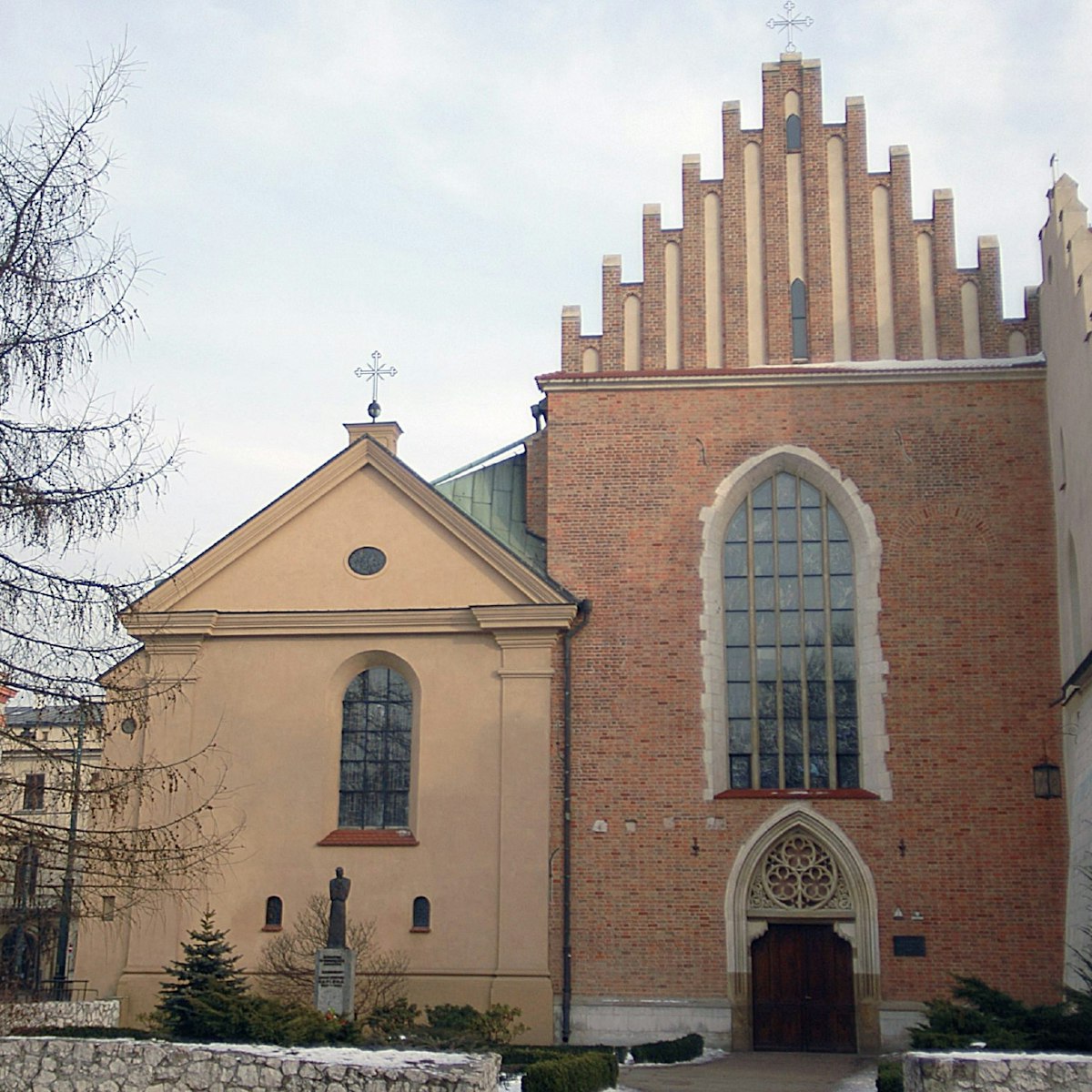
Basilica of St Francis
Duck into the dark basilica on a sunny day to admire the artistry of Stanisław Wyspiański, who designed the fantastic art nouveau stained-glass windows…
Panorama of Racławice
Wrocław’s pride and joy is this giant painting of the battle for Polish independence fought at Racławice on 4 April 1794, between the Polish army led by…

More destinations you need to see
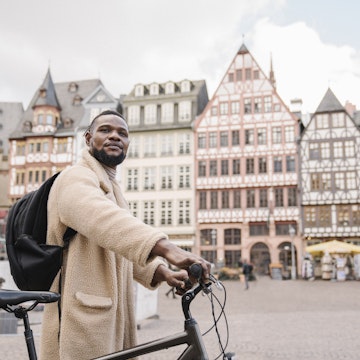

Tourist attractions in Poland
Which one of the tourist attractions in Poland would you like to visit?
Already visited Poland? What did you like?
Click a heart on your favourite tourist attractions!
Tatra Mountains
The highest mountain range between the Alps and the Caucasus. Rocky peaks covered with all-year snow, sharp ridges, picturesque ponds, waterfalls and valleys make this place supposedly the most spectacular in Poland . About 250 km of trails and a wide range of slopes would satisfy the most demanding hikers and skiers. A stay in Zakopane town at the foot of the mountains is recommended to those who love admiring beautiful landscapes and original folk culture.
The former country’s capital is one of the top tourist attractions in Europe . Most of the city guests are captivated by its magical atmosphere and the splendid architecture. In Krakow you can see mediaeval cathedrals, the Renaissance castle, Baroque churches, the Art Nouveau theatre and many other monuments. However old and beautiful it is, do not think that Krakow is limited to the monuments and museums. Thanks to an amazing density and variety of bars, pubs, clubs and restaurants, Krakow sparkles with life, especially during warm seasons.
Salt mine in Wieliczka
Ancient salt mines (in operation for 700 years). The small Krakow’s suburb ranks to the most famous tourist destinations in Eastern Europe . Often described as a fairy tale kingdom made of salt. A mysterious labyrinth of 300 kilometres of halls and corridors hewn in pure salt (the lowest are 372 meters underground). The 2.5-hours guided tours shows just a short stretch including a salt lake, caves and the beautiful Queen Kinga’s Chapel.
The capital of Poland . Rebuilt after World War II practically from scratch. Warsaw’s vibrant business downtown takes pride in many skyscrapers and ambitious plans to build more. The catchy skyline is still dominated by the enormous Palace of Culture and Science – a Stalin’s donation. Warsaw is a big world with an east European flavour. Do not miss the beautiful Old Town , the Royal Route, the Chopin museum, several magnificent palaces and the former Jewish ghetto.
The capital of Lower Silesia (Dolny Slask) has a huge Old Town built on several islands connected by over 100 bridges . Apart from its unique location, Wroclaw amazes with a plenitude of Gothic, Baroque and Art Nouveau architecture. An extremely complicated history, combining cultural influences of Germany, Bohemia, Austria and Poland, left its mark on Wroclaw’s atmosphere. After World War II the German population was expelled and replaced by Poles from Lwow (L’viv) that remained within the borders of the Soviet Union.
The cheerful maritime city is popular with both tourist and holiday destination. Situated by the sea, it has a gentle climate and beautiful beaches. A famous seaside resort Sopot is nearby. The exclusive architecture of the Old Town, including the largest brick Gothic church in the world is undoubtedly worth exploring. The present image of the city was created by its complex history. Gdansk used to often change hands and in 1980 it witnessed the birth of the Solidarity movement, which brought the end of Communism.
Masurian lakes
Picturesque land of reputedly 3,000 lakes . For sailing fans, fishermen, hikers, cyclists and those who seek tranquillity, the Masuria is the number one holiday destination. Apart from the water sports and wandering around, you may explore a multitude of historical places . There are castles in Reszel, Nidzica and Gizycko, the amazing Baroque church in Swieta Lipka and the Hitler’s wartime headquarters in the forests near Ketrzyn.
The Teutonic Order was founded around 1190 in Palestine to crusade against the Muslims and pagans. In the 14th century the Teutonic Knights conquered a pagan tribe of Prussians and moved their headquarters from Venice to Malbork on the Nogat river which is now northern Poland. A trace of the their presence in the town is the imposing red brick castle from 1274 on the river bank, which is the largest Gothic fortress in Europe.
Czestochowa
The medium size city of Czestochowa lies in the heart of Krakowsko-Czestochowska Upland, the region characterised by picturesque Jurassic rocks. Czestochowa is usually associated with Jasna Gora Monastery which is the biggest Marian sanctuary in the country. For the majority of Poles it is an important pilgrimage destination and a main cult place of the Virgin Mary. The icon known as Black Madonna of Czestochowa crowned in 1656 as the Queen and Protector of Poland is credited with many miracles.
Oswiecim (Auschwitz)
The modest provincial town of Oswiecim better known under its German name “Auschwitz” was a witness to an enormous evil caused by mankind. During World War II in the largest German extermination camp around 1.5 million people perished. A gruesome exhibition in the former camp makes the visitors rethink the basic ideas of humanity and dignity.
UNESCO listed the medieval town of Torun as world heritage. Similarly to Krakow it was not destroyed during WW II. Nicolas Copernicus – the founder of the heliocentric theory (that the Earth rotates around the Sun) born here. Pay a visit to his interesting museum. See the Teutonic Castle and the leaning tower (like the one in Italian Pisa). Numerous cellar pubs: Torun is a well-known university town. Delicious gingerbread. Organ music.
Bieszczady Mountains
A paradise for romantics, lovers of nature and restless drifters. The soft green mountains peppered with traditional wooden churches are one of the most secluded areas in Europe. The extraordinary wildlife and picturesque landscapes make it an ideal holiday destination. Bieszczady is the most beautiful in summer and autumn, whereas during winter they invite the fans of skiing.
Lodz may rarely be listed among the most important tourist destinations, but it definitely deserves promotion. The second-biggest city in Poland has been nicknamed Polish Manchester , harking thus back to its strong textile industry tradition. You can spot cotton mills, beautiful Art Nouveau architecture, Jewish monuments and the longest Polish street Piotrkowska. The mecca of Polish film industry features rowdy nightlife.
Slowinski National Park
A great, exotic natural attraction – 44 metres tall shifting sand dunes (wydmy) at the banks of Lake Łebsko. Desert-like landscape used to be a training ground for Rommel’s Afrika Korps, missiles V1 and V2 were tested here. Now an important biosphere reserve and haven for rare bird species. An open-air folk museum nearby.
Kazimierz Dolny
The best known of the many small Polish towns with charismatic Renaissance cores . A romantic castle ruin, Baroque churches, Three Cross’s Hill, winding streets and a ferry across the Vistula River. A supreme artistic place .
Bialowieza Forest
Probably the only intact primeval forest in Europe . Deeply deep. A highly protected biosphere area on the border with Byelorussia. The reserve of European bison (żubr), an animal extinct elsewhere. Plenty of wild game. Orthodox churches and two surviving Tartar mosques.
Elblag-Ostroda Canal
A masterpiece of the 19th century Prussian engineering. An 81-kilometres long network of canals – a sophisticated system of choke-points, locks and slip-ways. Take an 11-hour voyage; there will be three slip-ways when your boat is hauled by large rail-bound carriages transporting you over stretches with no water. Quizzical.
Another UNESCO-highlighted Renaissance civitas . Zamosc is fairly off-the-beaten-track and Eastern, unscathed by wars and very much preserved. Until present times encircled with fortification wall, Zamosc was intended by its builder, the powerful 16th century chancellor Jan Zamoyski as a town in ideal shape. Zamoyski Palace, Zamoyski Academy, beautiful tenement houses.
Kalwaria Zebrzydowska
Beautiful pilgrimage site dear to Pope John Paul II (Karol Wojtyła was born 4 kilometres away in Wadowice). Baroque Bernardine monastery with a Via Dolorosa (the Stations of the Cross) – a long sequence of chapels and Marian stations. A UNESCO landmark.

30 Famous landmarks in Poland to visit
Uncover Poland's rich history and culture through its famous landmarks, from the grandeur of Wawel Castle to the haunting Auschwitz-Birkenau Memorial.

About the author: David Angel is a British photographer, writer and historian with 30+years experience exploring Europe. His work regularly appears in global media including the BBC, Condé Nast Traveler, and The Guardian.
Are you thinking of visiting Poland and looking for some inspiration to help you plan your trip? Here’s my guide to 30+ famous landmarks in Poland.
The wealth of famous landmarks in Poland is incredible, and they make a fascinating introduction to one of the most intriguing countries in Europe.
From some of the most beautiful squares in Europe to Socialist Realist skyscrapers, vast red-brick castles to elegant Baroque palaces and the peaks of the Tatras to a great wild forest where bison roam.
Poland’s boundaries, and often rulers, have shifted frequently down the centuries, leaving an amazing legacy of architecture with influences as far afield as Amsterdam and Moscow.
Poland is famous for its Gothic red-brick architecture, especially in the medieval cities of Gdansk and Torun and the stupendous Castle in Malbork.
Its cities are also distinguished by their magnificent town squares, most famously in Krakow and Warsaw, and there are also Renaissance and Baroque palaces to discover.
It was also the location of numerous Nazi death camps during World War Two, when millions of Jews and other minorities were murdered in the gas chambers, and these are among the most painful, but necessary, places to visit in Europe to gain a grasp of the history of the 20 th century.
The landscapes of Poland are also compelling, with the High Tatras mountains, vast forests and the dunes and beaches of the Baltic coast all great reasons to visit Poland. Hopefully this guide to the best landmarks in Poland will give you a clearer idea of what to see in Poland when you go.
Table of Contents
Famous Landmarks In Poland – Warsaw
1. old town square warsaw.

The Old Town Square – Rynek Starego Miasto – is one of the best few Warsaw sights to see, a wonderfully atmospheric, intimate square surrounded by fine townhouses, with cafes and restaurants occupying many of the ground floor spaces.
It’s one of the most beautiful squares in Europe , and what’s most remarkable about it is that it was only completed around 1970, following the obliteration of the Old Town during World War II. You’ll pay more for your pivo (beer) and pierogi here than elsewhere in the city, but the indulgence is worth it, at least once.
2. Palace of Culture and Science, Warsaw

When ‘Uncle Joe’ Stalin decided to bestow a gift on the people of Warsaw, the recipients were hardly in a position to refuse. The Palace of Culture and Science – Palac Kultury i Nauky – was to become the most despised of Polish landmarks, a Socialist Realist skyscraper dwarfing everything else on the shattered Warsaw skyline when it was completed in 1955.
It was designed by Lev Rudnev, who was also responsible for the famous ‘Seven Sisters’, a series of similar towers at the Moscow State University. Mentions of Stalin were removed once the old dictator became officially discredited.
The tower is now one of the most recognizable icons of Warsaw, and houses a Congress Hall, cinema complex, offices and University. You can also ascend to the gallery, which offers superb views over ever-changing ‘downtown’ Warsaw.
The Palace of Culture is one of several stops on this Communist-themed tour of Warsaw , which takes you around the city in a classic Nysa 522 Socialist-era van.
3. Warsaw Ghetto

The Warsaw Ghetto occupied the suburbs of Muranow and Mirow, around a mile to the west of Warsaw’s historic Old and New Towns. Most of it was levelled by the Nazis after the 1943 Warsaw Ghetto Uprising, but the area is now home to several historical Warsaw landmarks well worth seeking out.
The Umschlagplatz, the departure point for most inhabitants of the Ghetto for the gas chambers of Treblinka (see below) is one of the most famous monuments in Poland. Here are remnants of the Ghetto Wall and several markers showing where the Wall also once stood.
Several tenement buildings from the south of the Ghetto have survived the depredations of war, and although you can see the exteriors from the street, these are the oldest surviving buildings in the Warsaw city centre area.
Four of them stand on Prozna, a couple of minutes’ walk from the Palace of Culture and Science, and the poster-sized photographs of former residents is another sombre reminder of the many who were murdered by the Nazis.
Another tenement house still stands on nearby Walicow 14. The excellent POLIN Museum of the History of the Jews in Poland is the place to learn much more, and picture how vibrant the community once was in this area.
4. Wilanow Palace

One of the most famous landmarks in Warsaw, Wilanow Palace is a Baroque royal residence in the southern outskirts of the city, built for King Jan III Sobieski towards the end of the 17 th century.
It’s among the finest palaces in Poland, and also one of the oldest museums in the country, dating back to 1805. You can visit the royal apartments on one floor, while the other level plays host to an exhibition of paintings of Polish monarchs through the centuries.
Buses 116, 180 and 519 run to Wilanow from Warsaw city centre, and walk-up tickets are available at the Palace. Alternatively, this skip the line tour of Wilanow Palace and Garden with a private guide also includes hotel pick-up.
This tour covers both Lazienki Palace and Lazienki Park , another splendid royal residence and park closer to the centre of Warsaw.
Famous Landmarks of Poland – The North
1. malbork castle.

Malbork Castle – the Castle of the Teutonic Knights – is one of the great landmarks of Poland and one of the mightiest castles in Europe . It’s a massive red-brick fortress, and it’s claimed to be the largest castle in the world by land area. It’s certainly one of the most imposing and impressive castles in the world – though it wasn’t impregnable.
It was built during the 13 th century by the powerful Deutscher Orden, when Malbork was under German control and known as Marienburg – many other places in Poland have a similar tale to tell. If you visit, be sure to take a walk across the Nogat river for the best view of the castle.
It’s an easy day trip from Warsaw or Gdansk as it’s on the main train line between the two. Gdansk is closer, and this day trip from Gdansk to Malbork includes a guided tour in English – which aren’t very frequent. Alternatively this day tour from Warsaw to Malbork includes a guided tour (or audioguide in the off-season) gives you several hours at the Castle.
2. Gdansk Crane

The Gdansk Crane was the largest port crane in medieval Europe, and it now dominates the Gdansk waterfront along the Motlawa River. It’s now part of the National Maritime Museum in Gdansk , and one of the best things to see in Gdansk.
The best part for me was seeing the four wooden treadmills used to lift weights of several tons – an amazing piece of medieval ingenuity.
3. Mariacki Church Gdansk

The bulk of the massive Mariacki church looms large over the handsome Hanseatic houses of Gdansk, making these impressive buildings look like a fairytale toytown from the Town Hall tower viewpoint.
This enormous 15th century red-brick basilica is one of the largest in Europe, and is probably most reminiscent of Santa Maria Gloriosa dei Frari, one of the most famous churches in Venice , or the fortress-like Albi Cathedral in south-west France.
It has served as both a Protestant (when the city was known as Danzig) and Catholic church, and was bombed out in March 1945. It was rebuilt within a decade, and its interior is largely bare, bright and painted white. One of the most distinctive landmarks of Poland.
See Also: The 15 Most Underrated Cities In Europe
3. Westerplatte Memorial, Gdansk

On 1 st September 1939 the first shots of World War 2 were fired at Westerplatte, where the Nazis began their attack on what was then the Free City of Danzig. After previous capitulation to Hitler’s demands, the Allies finally delivered an ultimatum, threatening declaration of war if the Nazis didn’t withdraw.
The Polish forces at Westerplatte held out for seven days, far longer than was believed possible. The site, at the mouth of the Motlawa river, is dominated by one of the most famous Polish monuments, the Brutalist granite Westerplatte Monument, and you can also explore some of the ruined buildings at the site.
It’s easy to get to the site – this private Westerplatte tour offers transport by car or by boat, a leisurely return river cruise from the Old Town to Westerplatte, plus a guide.
4. Treblinka Death Camp

Most inhabitants of the Warsaw Ghetto perished in the extermination camp at Treblinka, 50 miles (80 km) north-east of the Polish capital. One of the most sombre historical sites in Poland, between 800,000 and 900,000 people – mostly Jews – were murdered in the gas chambers there.
Only around 60 prisoners survived this hell-hole, and these were from the Sonderkommandos who had to remove the bodies from the chambers.
The site was razed to the ground by the Nazis in 1943, and the memorials erected after World War 2 are now accompanied by the excellent Treblinka Museum . Treblinka is one of the more difficult day trips from Warsaw, involving a train and taxi trip each way, so it may be worth considering a Treblinka tour from Warsaw , which begins at the Ghetto.

Toruń is one of the most beautiful cities in Poland, and one of the oldest, having been founded in the 9 th century.
It grew in power and influence in the 13th century when the wealthy Teutonic Knights (see also our entry on Malbork above) built a fortress there, and at the time was known by its German name Thorn.
It became a member of the powerful Hanseatic League, a medieval trading confederation of cities most of which were on the Baltic coast.
Toruń’s architecture is similar to that of other Hansa cities, with spectacular red brick buildings, from the Town Hall and Cathedral to the house of astronomer Nicolaus Copernicus, who was born in and lived in the city for much of his life.
This Torun Old Town walking tour is a great introduction to the city, and also takes you to several sites associated with Copernicus.
6. Słowiński National Park

The Słowiński National Park, on Poland’s Baltic coast, is where Poles head for the beach. It’s one of the busiest places in Poland in summer, with vast beaches, moving sand dunes, lakes and forests.
The most popular area is around Łeba (pronounced ‘webber’), and there are some superb hikes along the coast and in the dunes, with amazing views over the Baltic coast.
Famous Landmarks In Poland – Krakow
1. sukiennice – krakow cloth hall.

The splendid Sukiennice dominates Rynek Główny, the vast market square and heart of Krakow. It was a trading hall, where local products including textiles and salt were sold and imports from the east were bought.
It was built in the 15 th century, and its heyday lasted over a century until Warsaw took over as the capital of Poland. The elegant arcades are now lined with cafes, restaurants and souvenir shops.
This guided walking tour of Krakow Old Town is a great introduction to the city, and also takes you the short distance to the Wawel Castle and Cathedral (see below).
2. Mariacki Church, Rynek Główny

The Basilica Church of St Mary stands on the corner of Rynek Główny, a minute or two from the Sukiennice. One of the main Krakow landmarks, the present Gothic church was begun in the late 12 th century, with additions through to the 17 th century and some wonderful enhancements in the 19 th and early 20 th centuries.
Don’t miss the superb late 15 th century altarpiece by Veit Stoss which has been recently restored.
If you happen to be standing on the Rynek on the hour, you’ll hear the famous bugle call being played from one of St Mary’s two towers. It ends rather abruptly – it’s a tribute to the legendary bugler in the watchtower who warned the people of Krakow of an impending attack by attar forces, who helped save the city but sadly succumbed to an arrow in the throat for his trouble.
3. Wawel Castle and Cathedral

One of the most famous castles in Europe, the Wawel Hill is of huge significance to Polish national identity. The Castle – which was founded in 970 AD – was, for several centuries, the residence of Polish kings, and Wawel Cathedral could be described as the Westminster Abbey of Poland, housing their tombs.
The Castle also houses one of the best art museums in Poland, featuring Italian Renaissance paintings, King Zygmunt II August’s tapestry collection and a rich assortment of oriental art.
4. Kościuszko’s Mound

This 35-metre high artificial mound in the Zwierzyniec suburb of Krakow was built to honour national hero and military leader Tadeusz Kościuszko a few years after his death in 1817.
This form of tribute is traditional in the Krakow area, with earlier mounds built to honour legendary city founder Krakus and princess Wanda. It’s one of the most intriguing things to see in Krakow, and well worth the short, steep climb for the view over the city.
5. Wieliczka Salt Mine

Visiting the World Heritage Wieliczka salt mine is one of the most popular things to do near Krakow, and it’s an easy half-day trip from the city.
The mine was founded in the 13h century and was one of the mainstays of the local economy for centuries – and it’s still being mined to this day.
The standard tourist route takes you through some of the tunnels, finishing up in the astounding St Kinga’s Chapel, an underground church where every last detail is carved from salt.
This popular Wieliczka tour from Krakow is an easy option, with hotel pickups and drop-offs in the Old Town and Kazimierz, and the full tour of the mine.
Famous Polish Landmarks – Malopolska
1. auschwitz-birkenau death camp.

Visiting Auschwitz is one of the hardest things to do in Poland. Over a million people – predominantly Jews, but also Sinti, Roma, persecuted minorities including gays, and prisoners of war – were murdered in the gas chambers or through forced labour, medical experiments and starvation.
The Nazis hurriedly abandoned the camps as the Red Army approached in January 1945, leaving behind an incomprehensibly vast mountain of evidence of their crimes. There are two Auschwitz camps.
Auschwitz I was the original camp, with the old barrack buildings, while Auschwitz II, also called Birkenau, was where most of the Jews and other victims were killed in the gas chambers.
It’ll be one of the gruelling days of your life, but people should visit to bear witness to the monstrous crimes of humanity committed there.
2. Kalwaria Zebrzydowska

This small village near Krakow is home to one of the major landmarks in Poland, a monastery and park modelled on Jerusalem at the time of the crucifixion of Jesus Christ. ‘Kalwaria’ is the Polish for ‘Calvary’, the hill on which Christ was crucified, and he second part of the name comes from its founder, Mikolaj Zebrzydowski.
The site was founded in the early 17th century, and became a pilgrimage site and model for other Calvaries around Europe. It was built in the Mannerist – also known as Late Renaissance – style which had been prevalent in Italy for the previous half century and more, and was the precursor to Baroque.
The site also has close associations with Pope John Paul II, who was from nearby Wadowice and visited the site many times, including while pontiff.
Kalwaria Zebrzydowska is a fairly easy day trip from Krakow, with buses taking around 45 minutes from the suburban Krakow Lagiewniki bus station (tram 8 goes there from the centre). Forget about the train there, it’s painfully slow. Another option is this tour from Krakow , which visits both Kalwaria and Wadowice.
3. Lake Morskie Oko, High Tatras

Lake Morskie Oko – the ‘Eye of the Sea’ – is one of the most famous natural landmarks in Poland. It’s located high in the Tatra Mountains which form the border with Slovakia to the south, and it’s surrounded by the highest mountains in Poland.
Rysy is the highest point, at 249 metres above sea level, but Zabia Czuba, Zabi Szczyt Wizni and Wolowa Turnia also form the spectacular backdrop. The Tatras are unmissable, one of the great attractions of Poland.
4. Jasna Gora Monastery, Częstochowa

The Monastery of Jasna Gora – Bright Mountain – in Częstochowa, two hours west of Krakow, is the most popular pilgrimage destination in Poland. It houses a medieval icon of the Virgin Mary known as the Black Madonna, which is credited with miracles including seeing off Swedish forces besieging the mountain in 1655.
Visiting is quite an experience, and if you’re wondering what to do in Poland away from the obvious places like Warsaw and Krakow, this is very much worth the journey. You may well pass pilgrims walking on the hard shoulder of motorways to Częstochowa – they’ll have travelled 200 km or more to get there.
Once inside, the church where the icon is housed is absolutely crammed, so expect some highly unholy jostling to catch sight of it. If you have dodgy knees, don’t get caught up in the scrum near the front, as you’ll be expected to make your way around the back of the icon on your knees.
Jasna Gora isn’t one of the most obvious tourist attractions of Poland as it’s a couple of hours or so from anywhere else. If you’re heading here under your own steam, train is the easiest option. Otherwise this Częstochowa tour from Krakow also visits Wadowice, birthplace of Pope John Paul II, and you can also visit on a day tour from Wrocław .
5. Zalipie Village

Zalipie is one of the most unusual tourist attractions in Poland, and one of the most beautiful villages in Europe. This small village around 100 km (60 miles) east of Krakow is notable because all of its cottages and houses are painted with bright flowers.
They are often painted this way inside as well as outside, as is just about everything else in the village – fences, walls, wells, bells, buckets, you name it. The tradition began in the late 19 th century when local women cleaned soot off surfaces and began decorating them.
Zalipie can be reached by bus from Tarnow, which is easily reached by bus from Krakow. Alternatively, this Zalipie tour from Krakow takes you directly there from the city, and back to your hotel.
Famous Landmarks In Poland – Silesia
1. wrocław town hall.

Wrocław Old Town Hall is one of the most beautiful buildings in Poland, a splendid building that took shape over 250 years, from the Gothic Middle Ages to the Renaissance (13 th to 16 th centuries).
Its gables, sculpture, turrets and main tower are almost fairytale in appearance, and it’s the main sight in the handsome Rynek, one of the most beautiful squares in Poland.
2. Świdnica Peace Church

The Peace Church in Świdnica, in southern Silesia, is one of the finest historical landmarks in Poland. It’s an incredibly elaborate wooden Baroque church, built in the aftermath of the Thirty Years War in the mid-17 th century.
Under the terms of the Peace of Westphalia, the Evangelicals in the region were permitted to build just three such churches, and only one other, in nearby Jawor, survives.
From the outside, the church resembles a large black and white half-timbered house. Inside, it’s an amazing spectacle, with astonishingly rich decoration throughout, including ceiling paintings and gilded Baroque statuary I’d expect to find in one of the Baroque churches in Venice rather than an Evangelical church in Central Europe.
You can visit Świdnica Peace Church on several tours from Wrocław. This half day tour from Wrocław takes you to both Peace Churches, also calling at the church in Jawor. Alternatively, this tour takes you on a tour of Świdnica and the Lower Silesian countryside .
3. Książ Castle

Książ Castle is one of the most impressive castles in Poland, and occupies a hilltop site overlooking the Lower Silesian countryside near the town of Wałbrzych. Pronounced Kshee-onsh, its German name is Schloss Furstenstein, and a fortress was built on the site in the late 13 th century.
The present building dates from the 16 th century, when it was built in Renaissance style over the ruins of the medieval castle. It’s more of a palace or chateau than a castle fortress, and it remained in the ownership of the Hochberg family for over 300 years.
It was confiscated by the Nazis in World War Two, and it’s believed that they were planning on turning it into a residence for Hitler. They also dug tunnels beneath the Castle as part of a network of bunkers to house senior Nazis and their assets known as Project Riese.
The nearest major city to Książ is Wrocław, and tours from there to Książ are a much more convenient option than slow public transport. This day tour from Wrocław includes both Książ Castle and the nearby Peace Church in Świdnica (see above).
Alternatively, this Książ Castle tour from Wrocław includes a guided tour of the Castle and Project Riese tunnels as well as private car transfer from and back to Wrocław, a 75-minute journey each way.

Kłodzko is one of the hidden gems of Poland, a gorgeous historic town beneath the vast, imposing Klodzko fortress. The latter was founded in the early Middle Ages but was substantially remodelled in the 17 th century.
The town has been nicknamed ‘Little Prague’ because of its beauty and architecture, and also the Gothic St John’s Bridge over the river Mlynowec. This has been compared with the Charles Bridge in Prague , especially because it’s lined with statues like its more famous counterpart, and the view along it to the Baroque church is pretty spectacular too.
Kłodzko is a great example of the shifting boundaries of central Europe and Poland over the last thousand years and more. It was originally a Bohemian own, known in Czech as Kladsko, and later came under Austrian and then Prussian rule, when it was known by its German name Glatz. It has been under Polish rule since the end of World War Two.
5. Park Mużakowski

Park Mużakowski – Muskauer Park in German – is a fascinating landscaped park area straddling the river Neisse, the border between Poland and Germany. It was created by Prince Hermann von Puckler-Muskau between 1815 and 1844, subtly enhancing the local landscape (around the Polish town of Łęknica, pronounced ‘wenk-nee-tsa’) and across the border around Bad Muskau with some additional planting.
You can freely cross from the Polish part – which includes the Terraces – and the German part via two bridges. The restored Castle (pictured) is on the German side. The Park is one of the top tourist attractions in Poland and most easily reached by car if you’re visiting from the Polish side.
You may also be interested in: Pruhonice Park Prague
Famous Landmarks In Poland – Western Poland (Wielkopolska)
1. poznan town hall.

The superb Renaissance Town Hall in Poznan is one of the most famous landmarks of Poland. It’s an amazing construction, with its triple arcade, turrets and tower giving it the air of something out of a fairytale fantasy.
The ornate 16 th century building now houses the Museum of the History of Pozan (presently closed as they are doing restoration work ) . The Town Hall is also known for its famous mechanical goats, which headbutt each other at noon daily.
2. Gniezno Cathedral

One of the facts about Poland that few would guess is that its ecclesiastical capital – the equivalent of Rome or Canterbury – is Gniezno, a small city in the west of Poland, 30 miles (50 km) east of the area’s major city, Poznan. Indeed, several Polish kings were crowned there before the royal seat was moved to Krakow.
It seems odd that the seat of the country’s primate should be one of the hidden gems of Poland, but it is well off the Poland tourist trail. The present Gothic brick Cathedral was built in the 14 th century following the destruction of its Romanesque predecessor by the Teutonic Knights in 1331.
It claims to hold the relics of St Adalbert of Prague (Wojciech in Polish, Vojtěch in Czech), one of the patron saints of Poland and the Czech Republic. He was Bishop of Gniezno before being martyred preaching to the Prussians in 997.
Some believe that the relics of St Adalbert are held in St Vitus Cathedral, Prague – they were, after all, stolen to order – but it’s believed that the Czechs actually got the bones of St Gaudentius, brother of Adalbert, instead.
One thing that definitely didn’t end up in Prague is the unique set of bronze doors at Gniezno, which date from the late 12 th century. They are a unique survival in Europe, and depict scenes from the life of St Adalbert. All in all, one of the most fascinating places to visit in Poland.
Famous Landmarks In Poland – East and South-East Poland
1. zamość main square.

The town of Zamość was founded in 1580 by army leader Jan Zamoyski, and it’s one of the best surviving examples of a planned Renaissance town in Europe. It was designed by Paduan architect Bernardo Morando, and its focal point is the vast Rynek Wielki (Great Square).
The stunning Town Hall and row of Armenian tenement houses are among the most famous buildings in Poland, and it’s well worth a day or two of your time to head down to this relatively unexplored part of the country to see them and, indeed, the rest of the town, including its fortress, churches and synagogue.
2. Lublin Castle

The south-eastern city of Lublin should be one of the top places of interest in Poland, but its distance from everywhere else means it’s still relatively undiscovered, certainly in comparison with Krakow. The city’s main landmark, Lublin Royal Castle, is the oldest building in the city, its keep dating back to the 13 th century. Also seek out the superb frescoes in the Chapel of the Holy Trinity.
After destruction by Swedish forces during the Great Deluge of 1655, the Castle was rebuilt, though the outer walls – built in English Gothic Revival style – bear no resemblance to the originals. He Castle now houses the Lublin Museum, and sits above the lovely Old Town, one of the most beautiful in Poland.
Landmarks in Poland Map
To use this map , simply use your fingers or mouse to zoom in and out, and click on the icons to see more information about each location. Click the arrow in the top left-hand corner to access the map index. You can also save the map to your own Google Maps account by clicking on the star next to the map’s title. To view the saved map on your phone or computer, open Google Maps, click on the menu, and go to “Your places/maps.” Finally, if you want to print the map or view it in a larger window, click on “View larger map” in the top right-hand corner.

David Angel is a British photographer, writer and historian. He is a European travel expert with over 30 years’ experience exploring Europe. He has a degree in History from Manchester University, and his work is regularly featured in global media including the BBC, Condé Nast Traveler, The Guardian, The Times, and The Sunday Times. David is fluent in French and Welsh, and can also converse in Italian, German, Portuguese, Spanish, Czech and Polish.
You can read more of my articles on famous landmarks in Europe below:
- Famous landmarks in Venice
- Famous UK landmarks
- Famous Spanish landmarks
- Famous Landmarks in England
- Famous landmarks in Italy
- Famous landmarks in Austria
- Famous London landmarks
- Famous landmarks in Prague
- Famous landmarks in Ireland
- Famous landmarks in Greece
- Famous landmarks in Berlin
- Famous landmarks in France
- Famous landmarks in Portugal
HELGA AND HEINI ON TOUR
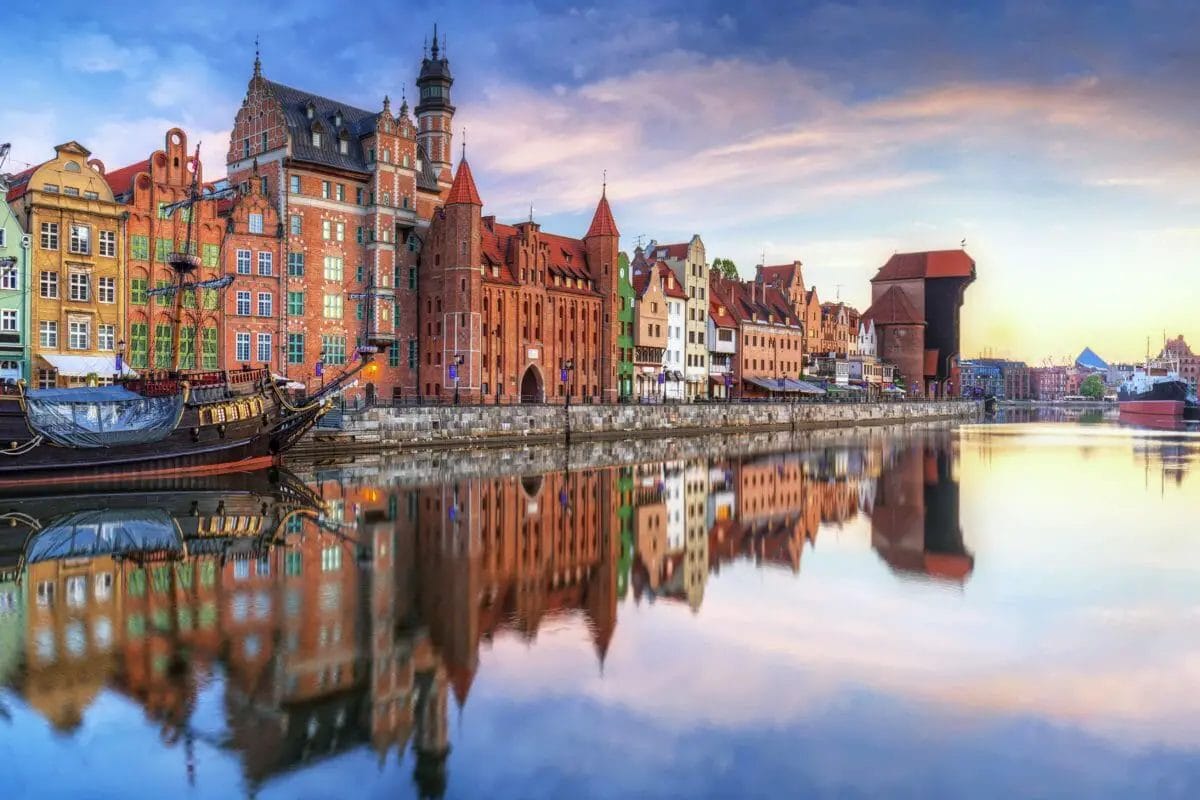
30 POLAND LANDMARKS & BEST PLACES TO VISIT FOR A THRILLING EUROPEAN VACATION IN 2022
Poland is a historically rich country that is home to 14 world heritage sites and numerous Poland landmarks. Poland offers the ideal location for history enthusiasts as well as architectural enthusiasts to visit. Poland's towns buzz in the energy of artistic and cultural life and are a good start to discover the whole country.
We put together a list of the 30 famous Poland landmarks and best places to visit for you. Famous Landmarks, tourist attractions in Poland, historic sights, famous places, national parks… You name it. We have them all.
What's famous in Poland?
There are a lot of places and famous landmarks in Poland. Here is a short overview of the Top 10 landmarks in the country:
- Warsaw Old Town
- Malborg Castle (Castle Marienburg)
- Tatra Mountains
- The Crooked Forest
- Auschwitz-Birkenau Camps
- Słowiński National Park
- Warsaw Royal Castle (Zamek Królewski)
- Masurian Lake District
- Wieliczka Salt Mine
1. Warsaw Old Town
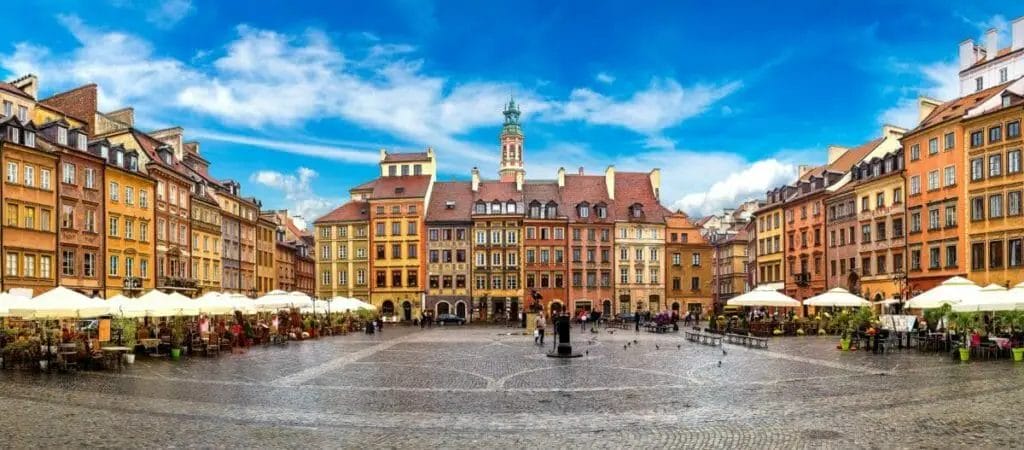
On the bucket list of food to try in Warsaw is pierogis (Polish dumplings), placki ziemniaczane (potato pancakes), and paczki (polish doughnuts). Other top tourist attractions you won’t want to miss are the Historical Museum of Warsaw, Royal Castle, Presidential Palace, Grand Theatre, and Museum of Caricature and Cartoon Art.
2. Warsaw Royal Castle (Zamek Królewski)
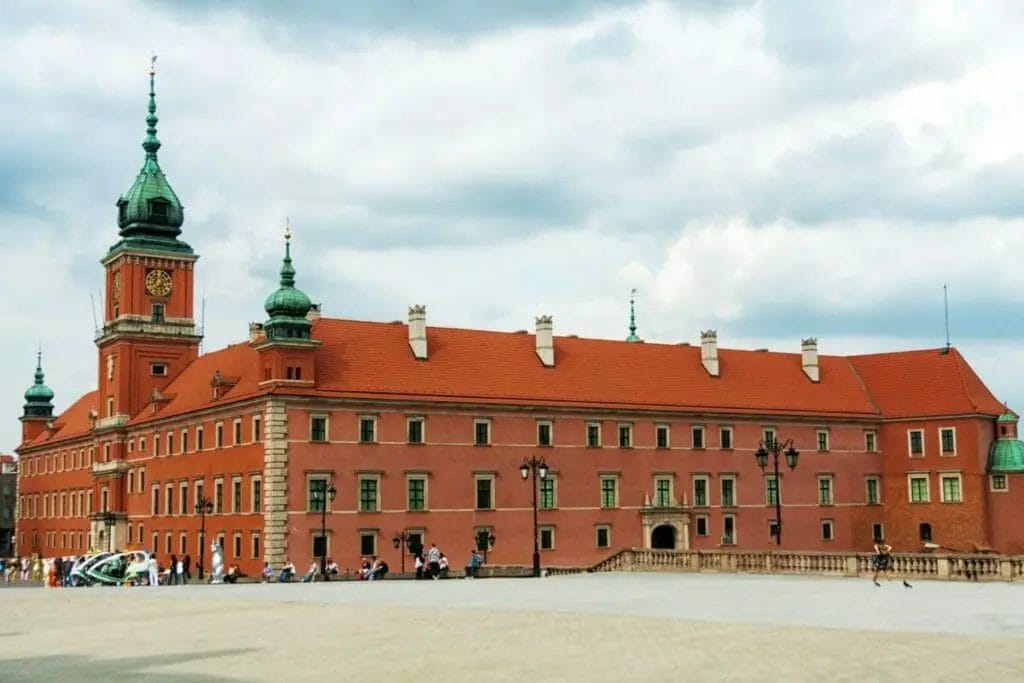
The castle offers collections of oriental rugs, coins, antique furniture, sculptures, and art. Equally impressive, are the royal gardens. The upper and lower gardens cover 2 hectares and feature beautiful statues, sculptures, plants, fountains, benches, and vases. Pack a picnic and birdwatch here for blackbirds, nightingales, and magpies.
3. Unesco World Heritage Sites – Malbork Castle (Marienburg)
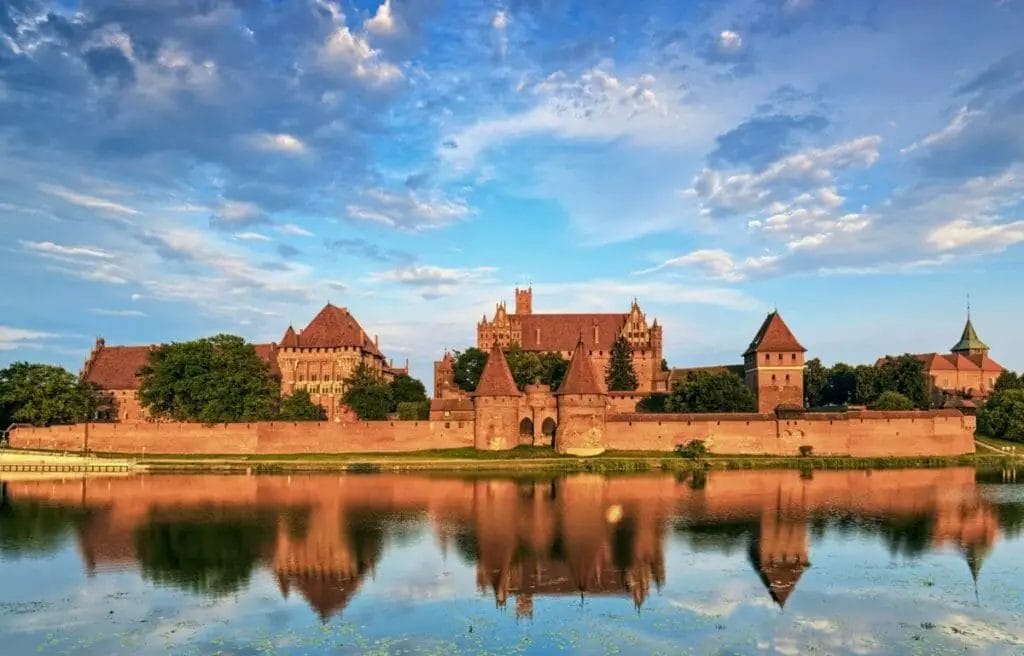
Visit the Marlbork castle to get your fill of Polish culture, history, and beauty. Tickets cost about 4 dollars and you can visit day or night; the night tour is debatably the best with the glowing lights illuminating the brick red walls and the tour guide dressed as a medieval knight. On the tour, you will see military rooms, art, huge courtyards, tapestries, armor rooms, ceramics, long corridors, ancient furniture, artifacts, and many exhibits. This is among the most famous Polish landmarks and it definitely is worth the trip.
4. Tatra Mountains & National Park
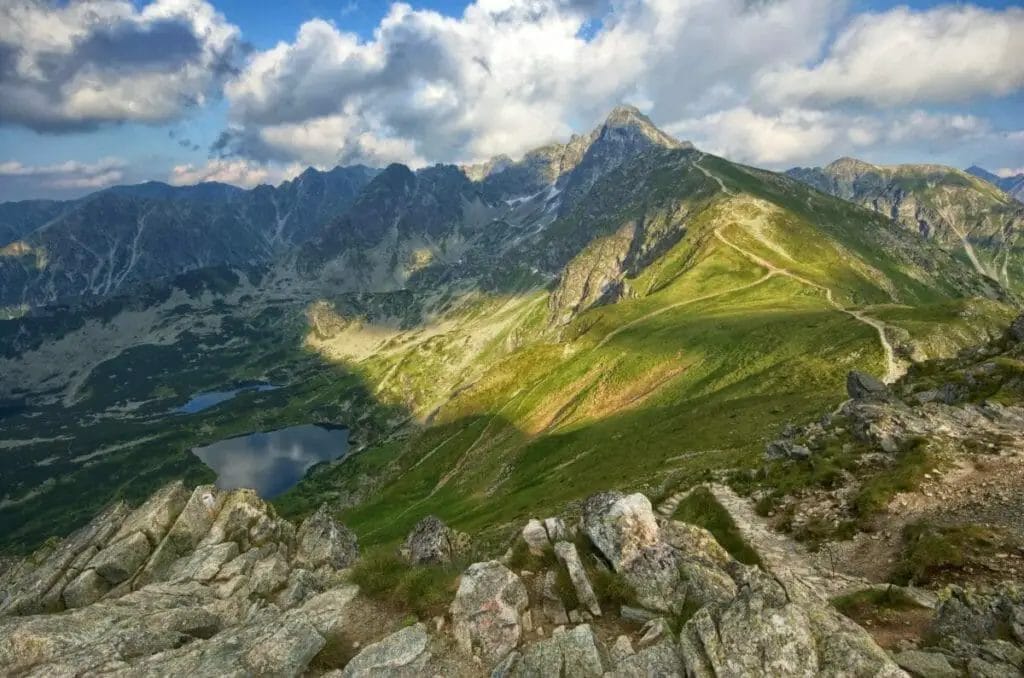
The best lake in the park is definitely Morskie Oko, which was mentioned earlier in this list. Also on the Polish side is the alpine pasture of Hala Gasienicow and the cave of Jaskinia Mylna. The most popular hike in this area is the hike up the highest mountain in Poland, Rysy. It is a 14-mile trek but once at the top, you are rewarded with panoramic views of the picturesque landscape.
5. Morskie Oko Lake in the Tatra National Park
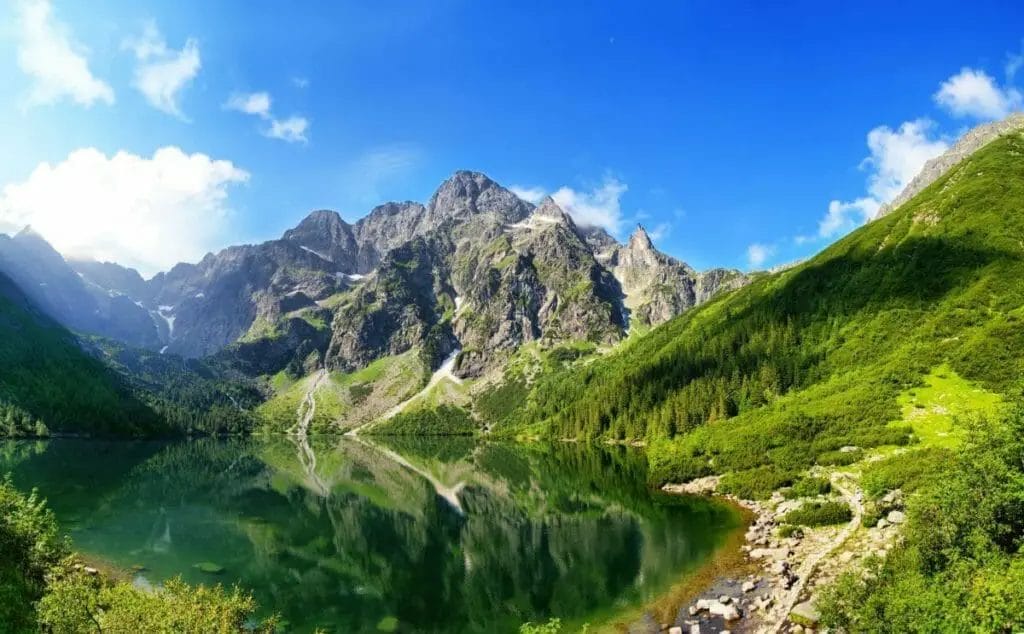
Once you arrive, take pictures of this unique natural beauty then sit down for a drink on the outdoor deck of the PTTK Morskie Oko Mountain Hut. Alternatively, if you still have energy, venture another 30 minutes uphill to the Czarny Staw pod Rysami Lake which is the second deepest lake in Tatra National Park.
6. Masurian Lake District

A top attraction is Wolf’s Lair, this beautiful forest is famous for being the military headquarters of Hitler in World War II. Also see Luknajno Lake, a bird reserve with the largest mute swan population in Poland. If you love history, don’t miss Zane’s Kapituly Warminskiej castle and museum. This brick Gothic castle was built in the 14th century and is an impressive historical monument.
The best places to stay in the Masurian Lake District are Hotel Tajty in Gizycko, Hotel Santa Monica in Mikolajki, or the family-friendly water park hotel Tropikana Golebiewski in Mikolajki.
7. Thorn (Torun)

The main attractions here include the Living Museum of Gingerbread, Town Square, Monument of Nicolaus Copernicus, Old Town Hall, and the main square. The Old Town Hall is one of the most famous Polish landmarks, it was built in 1274 and has a museum as well as a tower with views of the old town. With Gothic buildings, colorful shops, and red brick buildings, this is truly one of the most beautiful medieval cities in Europe.
8. Wroclaw (Breslau) – Tourist Attractions in Poland
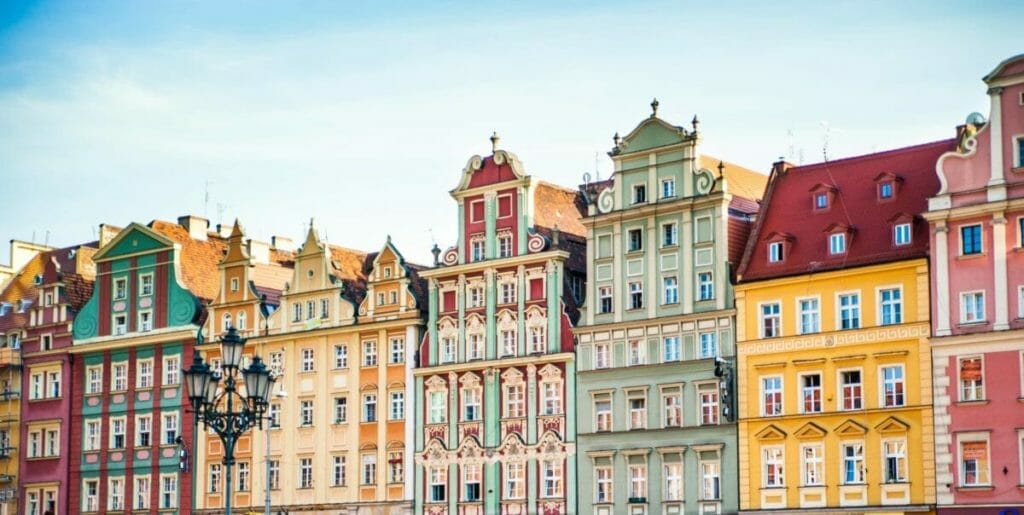
Possibly the best part of this town is the hidden dwarf sculptures, there are over 400 of them scattered through the city, so keep your eyes peeled as you are walking about! Start your day here at one of many outdoor cafes by the riverside then head straight to Market Square to see postcard-worthy houses with unique architecture. The next stop is the Market Hall, an impressive Polish landmark built between 1905-1908, where locals come to buy fresh produce and meats.
Before grabbing lunch, make sure to climb the Mathematical Tower for views of the old town and the islands on the Odra river. One option for lunch is Wroclawska, a highly recommended restaurant with traditional Polish cuisine that won’t disappoint. After lunch, rent a kayak or take a boat tour on the Odra river and enjoy more views of the city. Finish up your day with fine dining at La Maddalena (or perhaps some hearty street food) before hitting the bars for a lively nightlife experience.
9. Famous Poland Landmarks – Gdansk
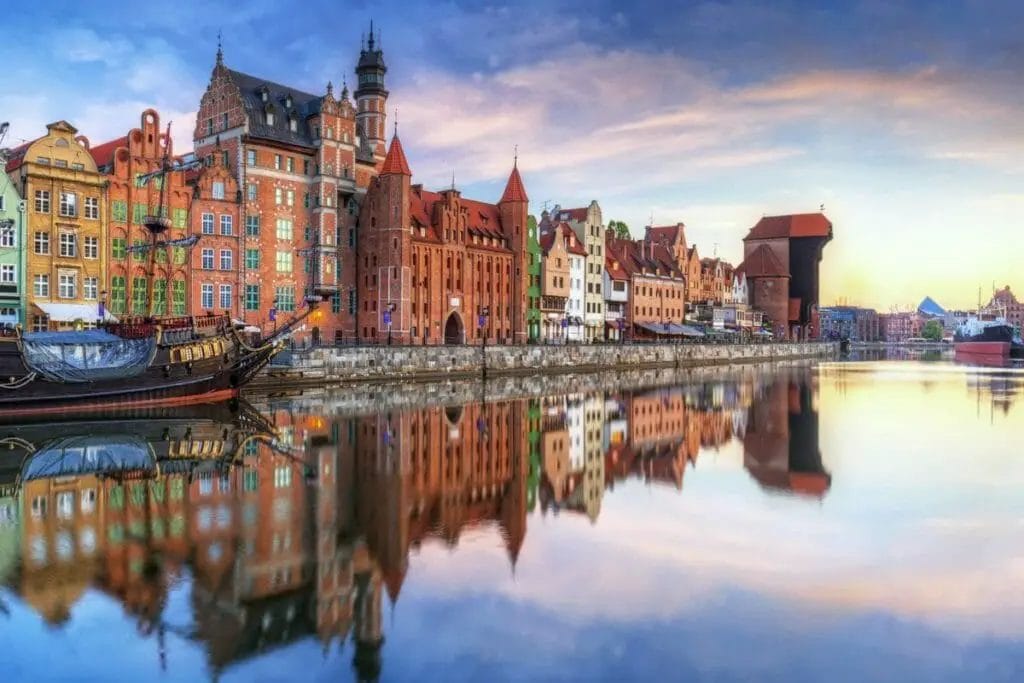
The first thing to do is walk along with the Long Market, a wide street with colorful buildings, adorable shops, quaint cafes, and traditional restaurants. From here, visit the Main Town Hall and climb the tower to see views of the city. The town hall also has the Gdansk History Museum.
Continue your tour at St. Mary’s church, one of the largest brick churches in the world, and then the Museum of the Second World War. End the day by eating on the waterfront and watching the sunset over the unique Polish houses.
10. The City of Krakow
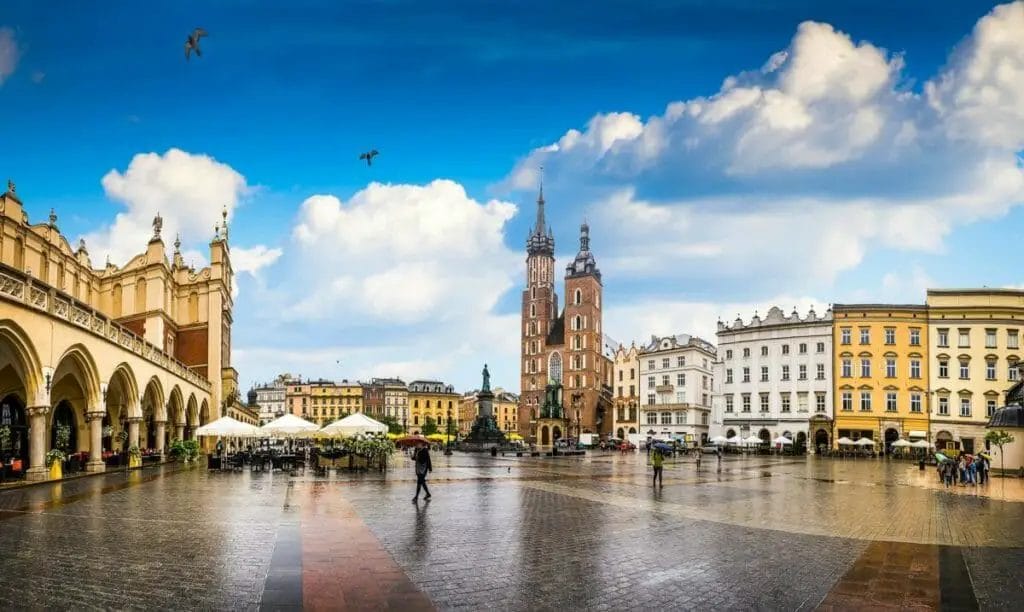
The top three Poland landmarks here are the Main Market Square, St. Mary’s Basilica, and Kazimieriz neighborhood. The Market Square is great for people-watching and sipping a coffee, the basilica is a colorful and unique wonder, and the Kazimierz neighborhood is the lively Jewish quarter with the best nightlife and cuisine.
While you are in the romantic city of Krakow don’t forget to eat polish sausage and pierogies. If you happen to tire of Polish cuisine, there are also many French, Asian, Italian, and vegan restaurants to choose from.
11. Schindler's Factory, Krakow
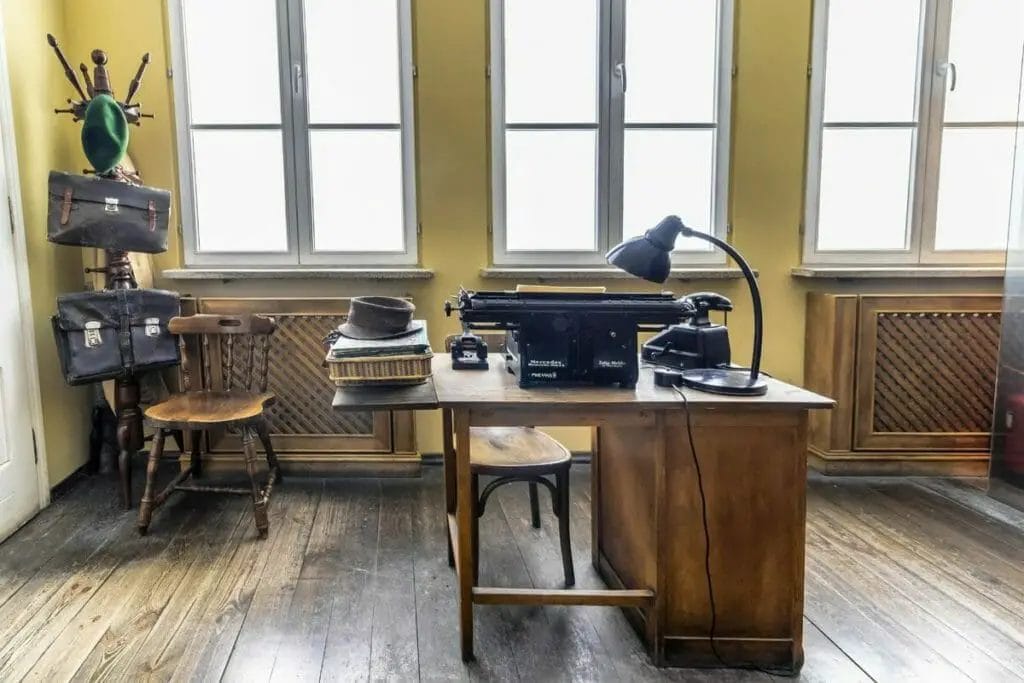
Come to Schindler’s factory to learn more about this incredible story as well as see exhibits on Nazis, wartime stories, documents, photos, recordings, films, and interactive installations. This landmark is divided into two museums, MOCAK and Schindler’s Factory Museum, both of which are well worth seeing.
12. Auschwitz-Birkenau Camps
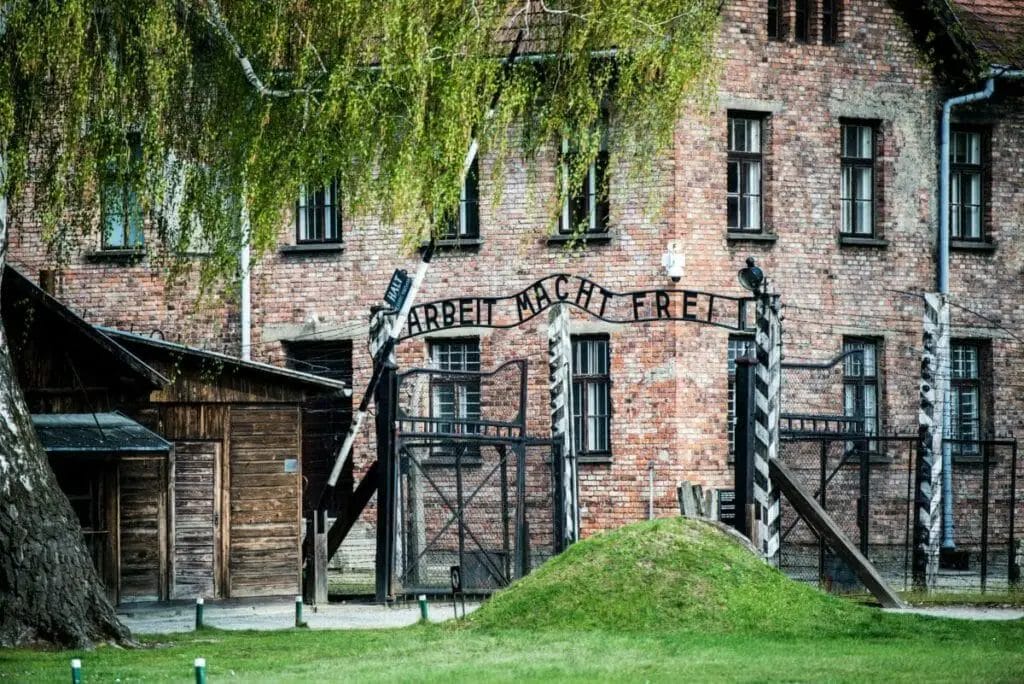
Auschwitz-Birkenau is the former German Nazi concentration and extermination camp where over 1.1 million people lost their lives. Of Poland landmarks, this one is definitely the most somber. This is an emotionally draining visit due to its awful history but it is incredibly important to visit if you feel able.
That being said, it is not advised to bring children under 14 due to the horrific nature of the events that took place at the camp. This is a place of remembrance, honoring, and learning; all guests are asked to behave with respect and to dress appropriately as a sign of respect.
Auschwitz concentration camp was the largest German Nazi camp and it was built in 1940 during World War II. Birkenau is about 2 miles away and was built between 1941 and 1942. At both camps, you will see artifacts, see execution and imprisonment sites, and hear the stories of those who were killed here as well as those who survived.
13. Lazienki Park (Muzeum Łazienki Królewskie), Warsaw

Other buildings in this area include the amphitheater, Museum of Hunting and Horse-riding, Łazienki Królewskie Museum, and Palace on the Isle, which does cost extra. You can spend all day exploring the park filled with historic buildings, sculptures, gardens, animals (like peacocks!), and flowers.
14. Bialowieza National Park
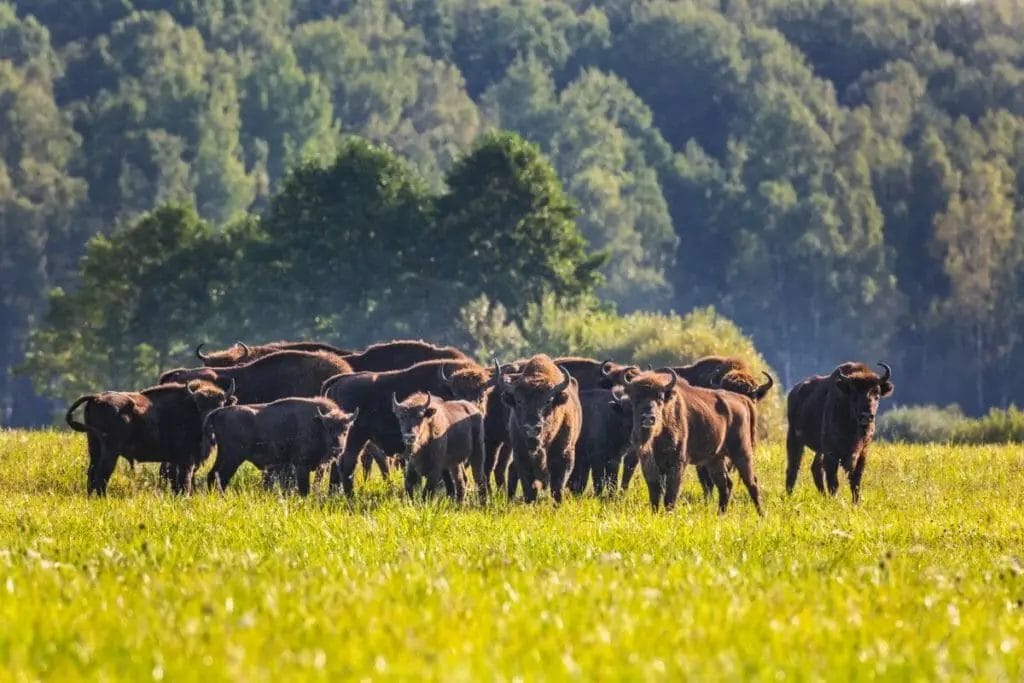
The symbol of this park is the European bison which is the largest land mammal in Europe. There are about 500 living in this forest and is high on the Poland sightseeing to-do list. While in this gorgeous national park, explore the lush forest by walking or biking on one of many trails while keeping an eye out for animals and birds.
15. Ojcow National Park
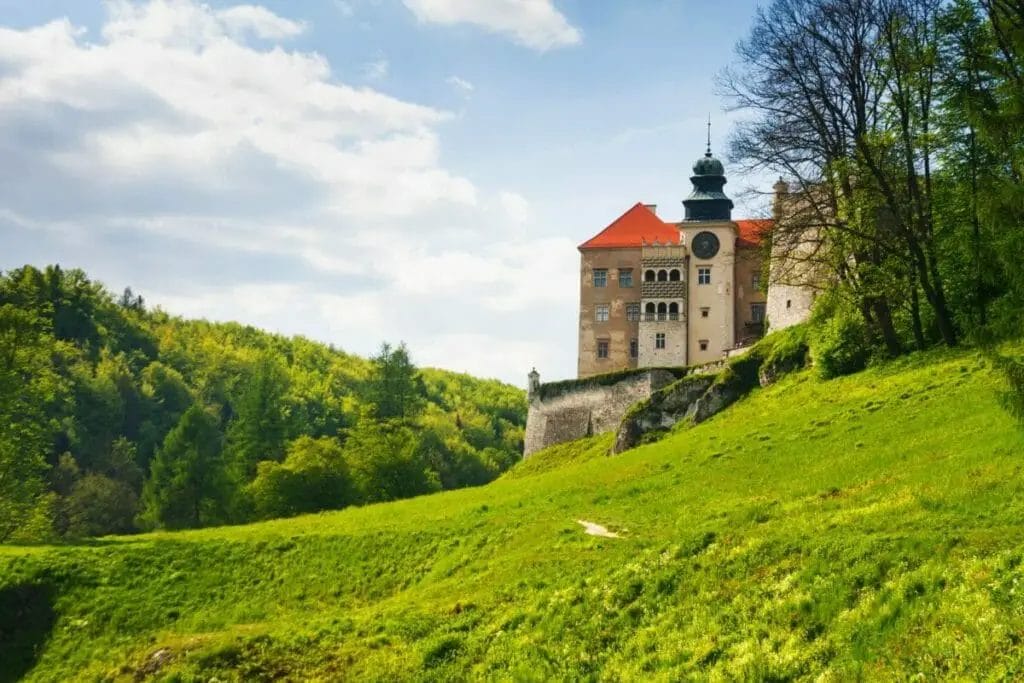
Besides the castles, make sure to hike or bike along the Vistula River for a tranquil day in nature or hike part of the 32 mile Trail of the Eagle’s Nests. After your day in nature, make sure to stop at the mountain town of Ojcow for a delicious meal at the Pstrag Ojcowski grill. Ojcow is one of the best Polish tourism places if you love nature and adventure.
16. Słowiński National Park – Famous Polish Landmarks

Make sure to see Lebsko Lake, which is the largest coastal lake on the Polish coast, and Lake Gardno which is perfect for birdwatching. For incredible views of the sea, go to the Czolpino Lighthouse which was built in the 1800s. For views of the moving sand dunes, head to Wydma Lacka. If you are traveling with kids, stop by the Sea Park Sarbsk for seal shows and a pirate-themed play area or Leba Park for a dinosaur theme park.
17. Bieszczady Mountains
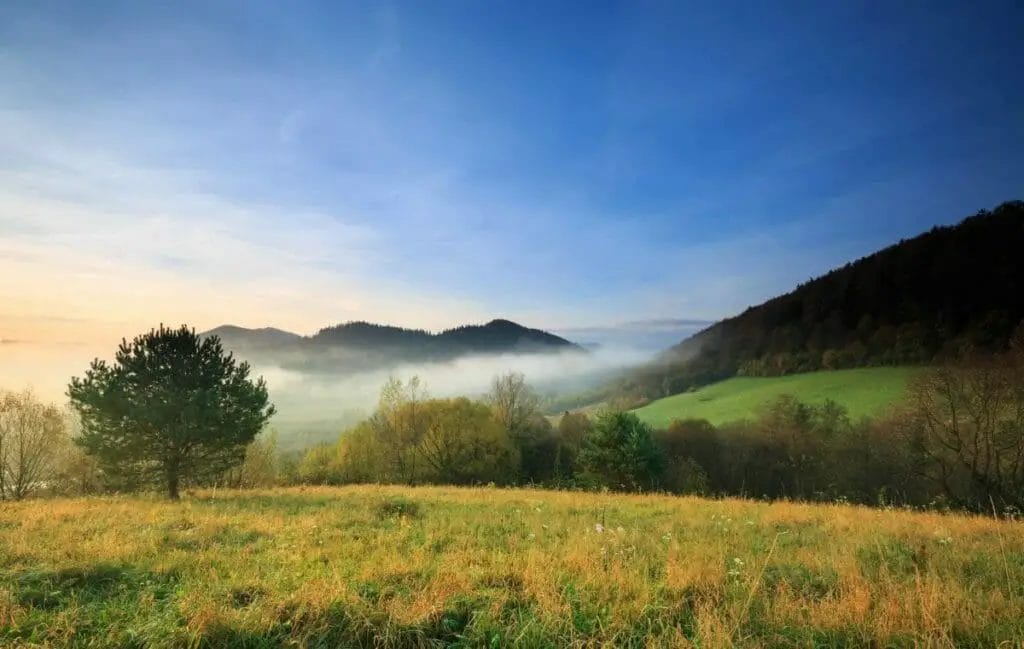
Off the beaten track of typical Poland, sightseeing tours are the Bieszczady mountains. This is one of the best areas for hiking in Poland; trek the highest peak, Tarnica, for incredible views or take the less-traveled route of Polonia Carynska for equally gorgeous, panoramic views.
If you prefer a less strenuous activity, opt for a horseback riding tour on the PTTK Bieszczady Horse Trail. You can also relax at Solina Lake by windsurfing, swimming, or canoeing. Two mountain villages you won’t want to miss are Ustryzki Gorne and Cisne. Here you will find historical buildings, wooden Orthodox churches, and traditional bars with delicious cuisine.
Other Polish attractions you will find here are the Turquoise Landslide Lakes, Solina Water Dam (the highest dam in Poland), and Lesko Castle.
18. Crooked Forest, Gryfino
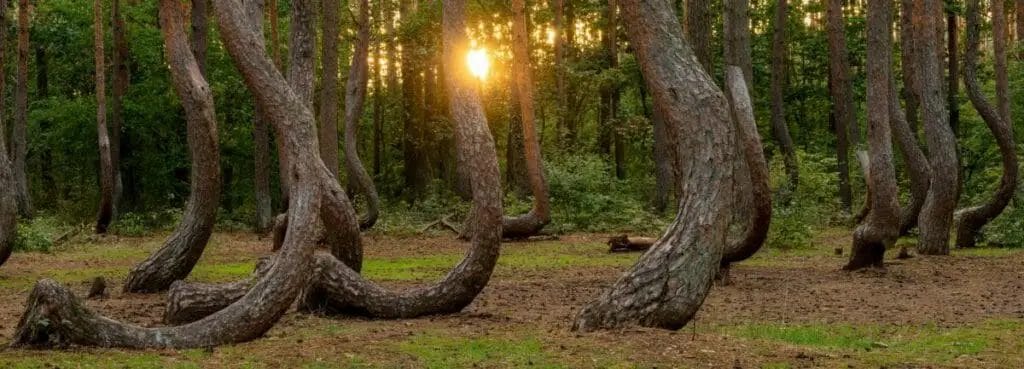
Nearby is the town of Gryfino , which is one of the oldest towns in Poland. Here you will find many buildings with historical significance, quaint restaurants with traditional Polish cuisine, and wooden inns. From here you can also visit the Lower Oder Valley and Beech Forest.
19. Isle of Usedom

This is the ideal vacation destination, with soft sand beaches and plenty of activities. Here you will find spas, outdoor music festivals, fashion events, theater, and amazing seafood. The best part is this paradise isn’t that expensive (compared to other island getaways), you can stay at a cute hotel or bed and breakfast or opt for an indulgent retreat or beachfront hotel.
20. Wolin Island – Polish Tourist Attractions
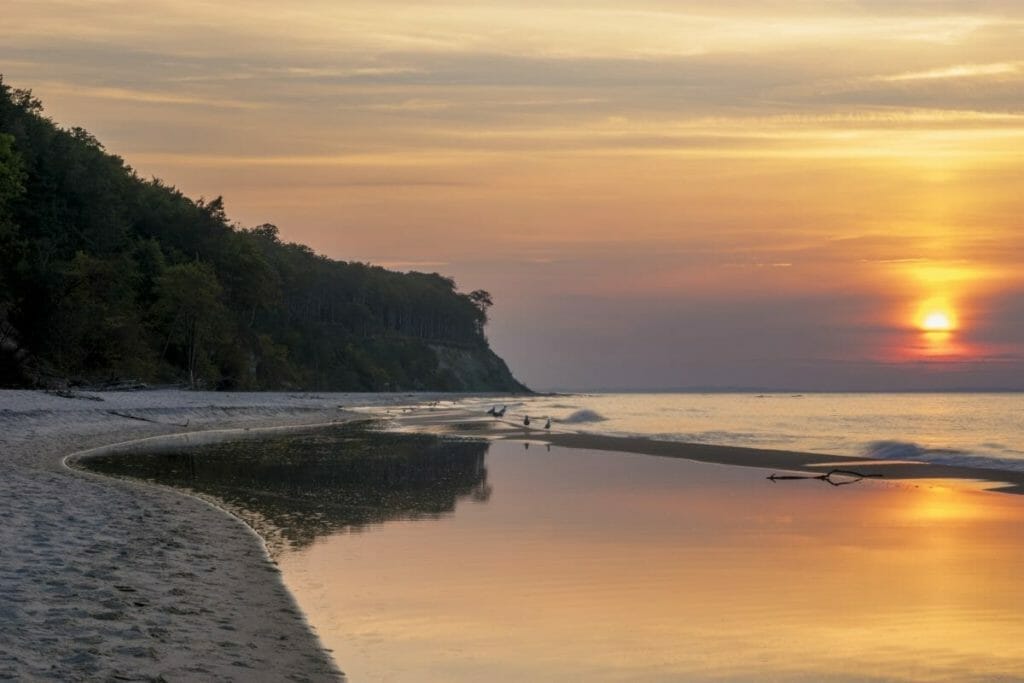
The best place to stay in Wolin Island is the beach town of Międzyzdroje; this colorful town offers sandy beaches, hiking, a lively bar scene, and delicious Baltic cuisine. While exploring Wolin Island, don’t miss the Wolin National Park Museum, Kawcza Mountain, Baltic Miniature Park, Fort Gerharda, and the Underground City of Wooing Island.
21. Jasna Góra Monastery in Częstochowa (Częstochowa)

This painting is said to have performed miracles, which is why so many people come each year. Besides this iconic religious artifact, you will find other ancient artifacts, learn about Polish history, and see an ancient library. The design is also beautiful with a mix of Gothic, Baroque, and Renaissance architecture. This spiritual capital of Poland is one of the top Polish tourist places and is definitely worth the visit.
22. Kasprowy Wierch

After a day in the snow, visit the beautiful mountain town of Zakopane for a hearty meal of Polish soup or pierogies (dumplings filled with potato, sauerkraut, cheese, or meats) paired with mulled wine. During the warmer seasons, hike up the mountain or take the Kasprowy Wierch cable car to the top for stunning views. You can also climb to the meteorological observatory for even better views.
23. Museum of the History of Polish Jews POLIN

This is one of the most famous Polish landmarks for learning about Jewish cultural development, politics, religion, and the effects of World War II and the Holocaust. Here you will find eight exhibits: Forest, First Encounters, Paradisus Iudaeorum, Jewish Town, Encounters with Modernity, On the Jewish Tree, Holocaust, and Post-War Years. These exhibits incorporate art, antiques, poetry, photography, stories, art, interactive exhibits, videos, and more.
24. Warsaw Rising Museum (Muzeum Powstania Warszawskiego)
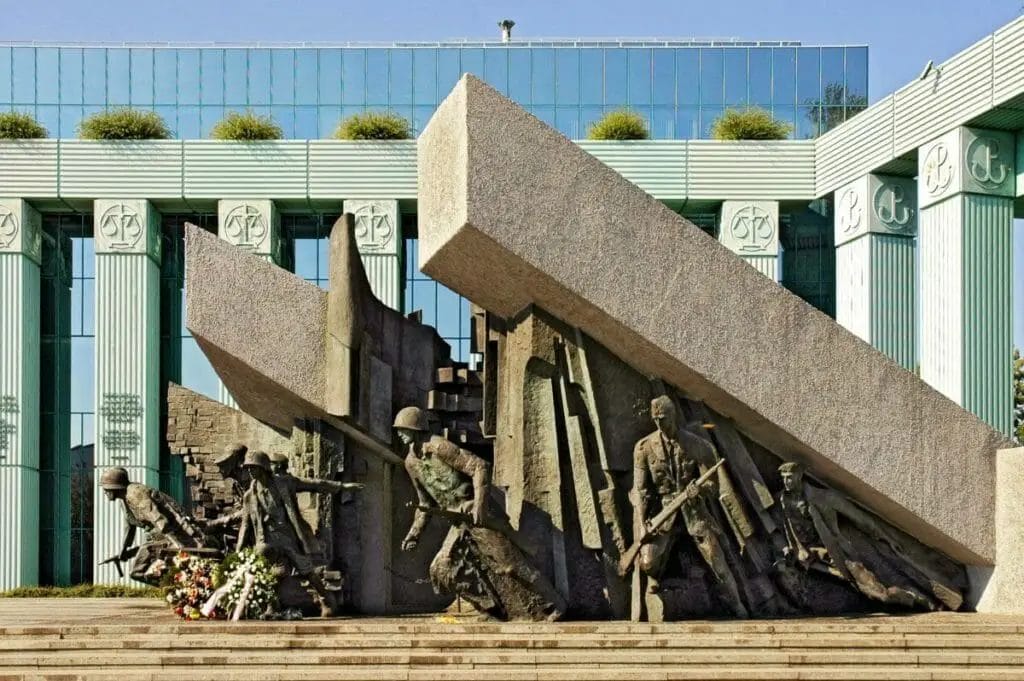
The focus is to depict the fighting and everyday life during the tumultuous period of the Rising and to provide post-war education about the Communist regime. After visiting the museum, make sure to stop by the tower for views of Freedom Park and the beautiful city of Warsaw. This is one of Poland’s famous places that you won’t want to miss.
25. Museum of the Palace of King John III in Wilanow
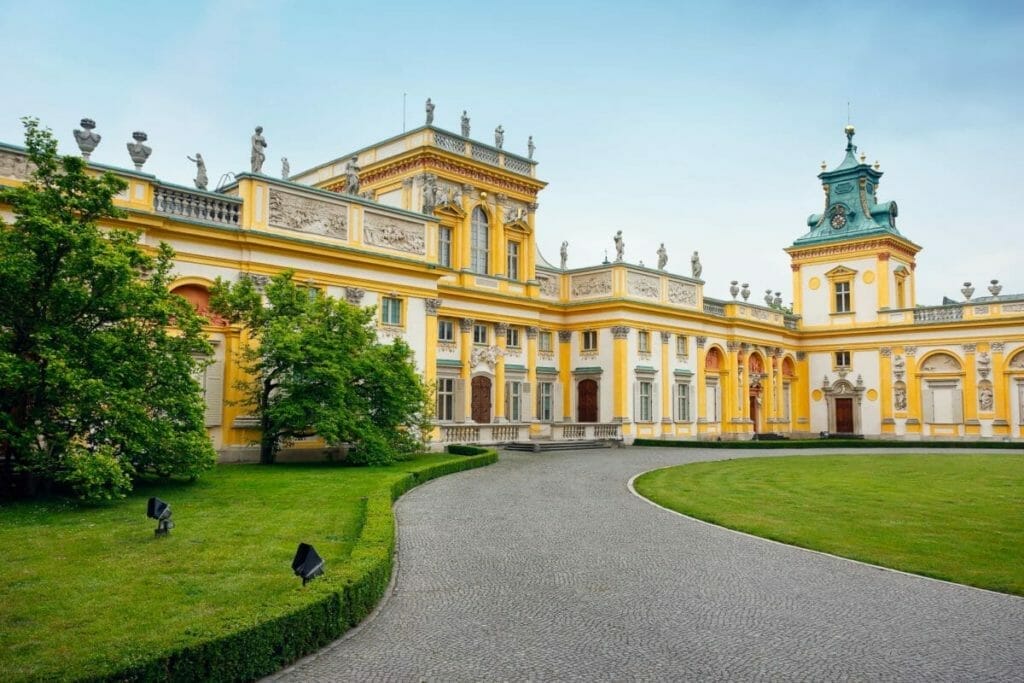
Outside you will find the Royal Garden of Light, which is an outdoor exhibition with colorful lights and glowing sculptures. Come here for the ideal location for a unique photoshoot all year round. It costs about $5.50 to enter the palace and $1.50 for the garden.
26. Palace of Culture and Science (Pałac Kultury i Nauki), Warsaw

A few minutes wandering through this building and you will see why it is the most visited tourist attraction in Warsaw. Come here to see great views of the city from the observation deck, watch a movie with a cocktail, ice skate for free in the winter, and dance the night away at the club. During the summer there are also many events from festivals and concerts to theater performances and film showings.
27. Wieliczka Salt Mine

Take a guided tour and explore the salt labyrinths with endless corridors, immense chambers, the underground lake, and a geological structure that is unlike any other in the world. If you are having health problems, make sure to stay longer for a therapeutic treatment, medical consultation, or visit their diagnostics center.
You can also sleep underground at the Eastern Mountain Stable Chamber for $30 a night, which is said to help your immune system because you are breathing purified air for long periods of time. Before leaving, don’t forget to stop at the gift shop for unique souvenirs of Wieliczka salt, soap with salt crystal, Lemon Grass and Pear toiletries, and rock salt with garlic cloves.
28. Zalipie Village
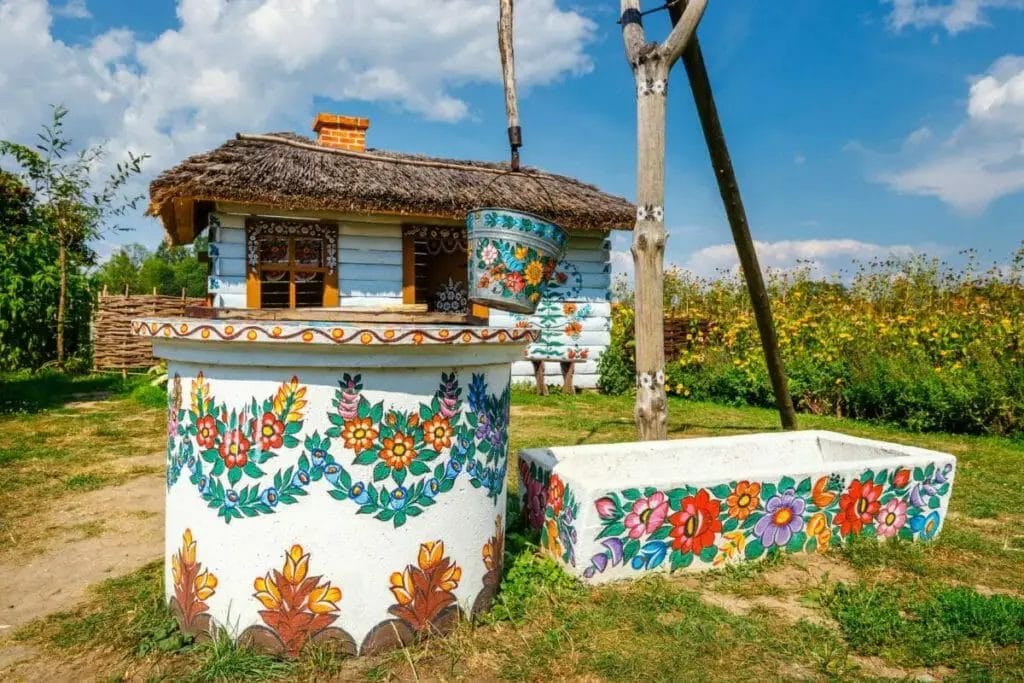
Now, the tradition has grown so large that they even have competitions each year for who decorates their house best (come in June to witness this colorful event). While in the village, enjoy the beautiful colors and folk art and visit the Painter’s house, Felicia Curylo’s Farm House, and St. Joseph's church.
29. Zakopane
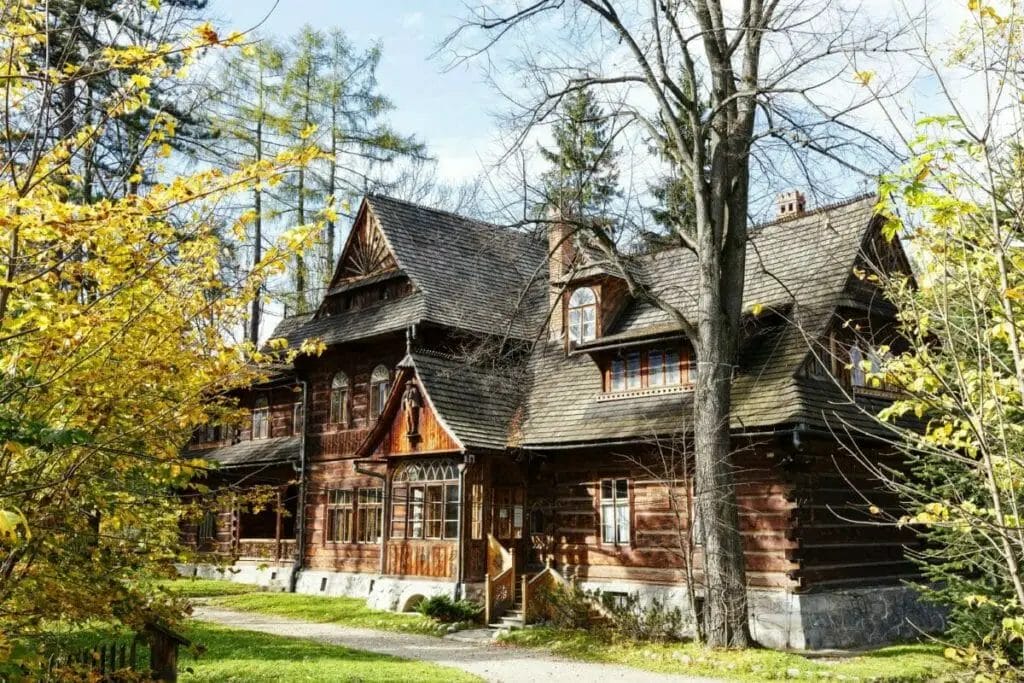
During the winter come to Zakopane for skiing, snowboarding, sleigh rides, drinking mead, quad tours, and winter festivities. In the warmer seasons, hike the Tatra mountain range, bike through the national park, and take a ride in a horse-drawn carriage.
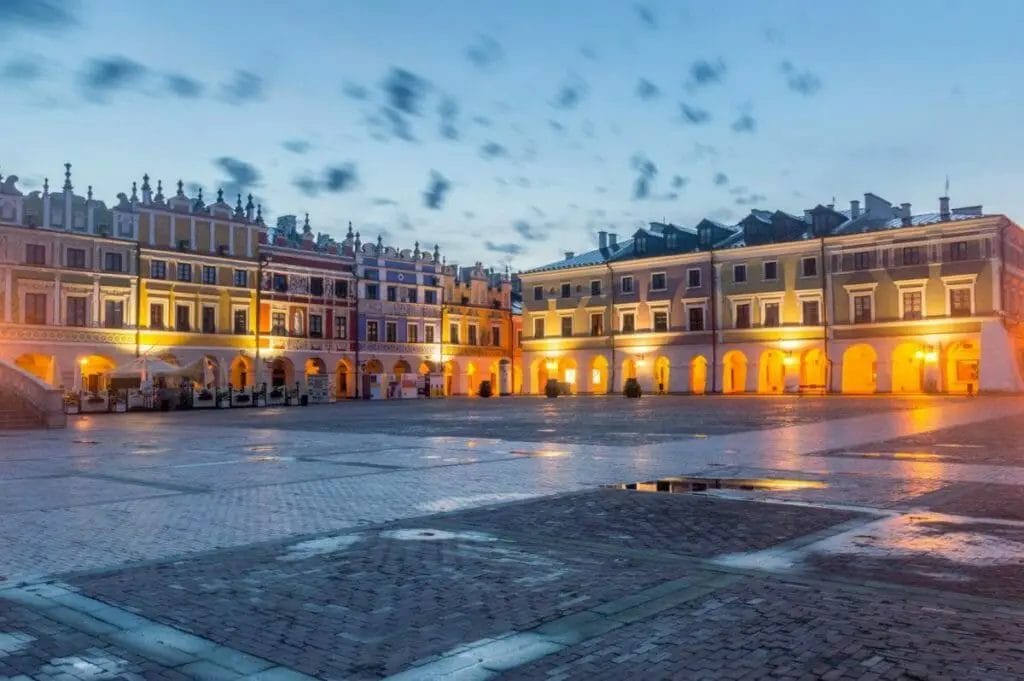
The top landmarks include the Market Square, the colorful Armenian houses, Town Hall, the Armoury Museum, Cathedral of the Resurrection, and St. Thomas the Apostle.
Frequently Asked Questions About Places To Visit In Poland
What is the most visited place in poland.
Kraków. Krakow has the largest number of visitors from Poland! During WWII it largely remained intact and the Old Town center is UNESCO designated. This place has a wonderful market square and you're guaranteed everything is authentic here!
Which city is the most beautiful city in Poland?
Danzig is an incredible city on its shore. Looking to spend an extended holiday in Poland? Think Gdansk
How many World Heritage sites are in Poland?
In 2021 Poland has 17 World Heritage sites of the highest UNESCO value, most of these being cultural sites. In 1978 the first two places on the World Heritage list were Wieliczka Salt Mine and Krakow Historical Center.
More Places in Europe to Visit
- Must-See Landmarks of Romania
- Famous Landmarks in the UK
- Best Italian Cities to visit right now
Leave a Comment Cancel reply
Save my name, email, and website in this browser for the next time I comment.

Home » Travel Guides » Poland » 15 Best Places to Visit in Poland
15 Best Places to Visit in Poland
Thanks to the energy and resiliency of its people, Poland has emerged as one of Europe’s greatest post-communist success stories. Known mostly for the medieval architecture, hearty cuisine, and Jewish heritage, this small country on the Baltic Sea has risen above a bleak history to become a growing tourist destination.
In addition to medieval Mecca’s like Gdansk and Kraków , or urban hotspots like Warsaw , you can also travel outside the cities to a Poland that feels unspoiled by time. Enjoy the mountains or the sea and every outdoor sport you can imagine.
Lets explore the best places to visit in Poland :

Pronounced VRAHTS-wahv, Wroclaw is the fourth-largest city in Poland. Built in the medieval period, the city covers several islands and maintains several beautiful bridges and stunning architecture. Wroclaw has been busy racking up recognition lately.
In 2015 it was named one of the “Best Cities To Live” by Mercer consulting company; and due to their high living standard it’s classified as a global city by GaWC.
Those who know Wroclaw best will tell you not to miss Salt Market Square, Centennial Hall (a UNESCO World Heritage Site), or St Mary Magdalene Church (13th century).

This sprawling city is Poland’s capital . It’s long and turbulent history can be seen in the distinct forms of architecture. You’ll find Gothic churches, Soviet-era blocks, modern skyscrapers, and neoclassical palaces.
Warsaw has a thriving music scene and a vibrant nightlife. Though the city was largely destroyed during WWII, Old Town has been restored to mirror its pre-war glory, complete with cobbled alleys, charming cafes, and a unique sense of the past.
Also not to be missed are the old royal residences which have long been associated with the ruling class and important events in history. Round out your visit by stopping at the Museum of the History of Polish Jews to see exhibits on their 1000 year history.

Gdansk is one of the three cities in the Pomerania area that are popularly known as Tri-City (Polish: Trójmiasto). This city on the Baltic coast has a unique vibe that separates it from the rest of the country. It’s a place that’s been shaped by the wide variety of wealthy merchants attracted by its port.
In the heart of Gdansk lies the reconstructed Main Town with colourful facades, shops, and restaurants. The crowning glory is the Neptune Fountain, built in the 17th century; it serves as a symbol of the city.
When you’re done with St. Mary’s Church or Oliwa Archcathedral, enjoy a pleasure boat cruise upriver and a brew at a beer garden along the dock.

Polish people have voted Gdynia to be a “freedom city.” Since the first free elections, held in 1989, the city has transformed itself by building up living standards and concentrating on growth and progress. One of the three Tri-Cities, Gdynia is another great port town perfect for water lovers and maritime enthusiasts.
Visit the Dar Pomorza, a full rig sailing ship built in 1909. There’s also the National Marine Fisheries Research Institute and the Gdynia Aquarium. Each summer, the city hosts the Open’er Music Festival which attracts amazing headlining artists from across the globe.

The final Tri-City destination, Sopot is a small seaside resort town. Directly between Gdansk and Gdynia, it’s been a get-away for the royals and elite for centuries – even through the Communist era.
Sopot has sparkling beaches and glitzy resorts all along the coast, giving it an exclusive air. You’ll often find the beach packed with sunbathers and volleyball lovers. Locals will tell you about the Wooden Pier (the longest in Europe), exciting Monte Casino Street, and Forest Opera set in a beautiful wooded area.
Tourists will tell you not to miss Krzywy Domek, also known as the Crooked House because of its unusual Gaudi-like shape.

Once the capital of Poland, Cracow is now considered the cultural capital of the country. Best known for its medieval core and Jewish quarter, the city is centred on Rynek Glówny (market square), built in 1257 and now one of the largest markets in Europe.
The well-planned streets and tree-line pedestrian avenues make it enjoyable to stroll through the city. Stop and visit Jagellonian University or Wawel Castle – home of the Polish kings for almost 600 years.
Don’t forget Old Town (a UNESCO World Heritage Site), 14th century St. Mary’s Basilica, and Cloth Hall, a wonderful Renaissance-era outpost.
7. Szczecin

This small coastal town is definitely off the beaten track (at least for non-Germans). Szczecin is a mix of several cultural and architectural influences from several different ages.
Reconstruction has been long and difficult here which means that you’ll find German-era Art Nouveau buildings alongside modern steel and class buildings – both of which are alongside crumbled and overlooked ruins from the war.
You’ll want to stop at Bismarck Tower and the National Museum located primarily in the Landed Gentry House. And finally there’s the Ducal Castle, home of the dukes of Pomerania-Stettin for roughly 500 years.

This town , located in west-central Poland, is best known for its renaissance old town, which, like most of Poland, was complete destroyed during WWII, has been beautifully rebuilt, and now thrives.
A ramble through Poznan’s market square will fill you with the energy and bustle of the town. Morning or night, this place is always buzzing thanks to the pubs, clubs, and restaurants that can be found here.
You must visit Ostrów Tumski cathedral, The New Zoo, and enjoy water sports at Lake Malta. Porta Posnania Interactive Heritage Centre shares the birth of Poland through technological and interactive displays, and the Monument to the Victims of June 1956 can be found on Plac Mickiewicza.

Torun is well known as the birthplace of Nicolaus Copernicus (1473–1543). It’s also well-known for its fantastic gingerbread. The city has combined these two well-known’s into one: you can buy gingerbread made in Copernicus’s image.
Located in Northern Poland on the Vistual River, Torun is one of the oldest cities in the country. This is the place to come to take a break from the main tourist circuit. Largely untouched by WWII, there is quite a bit to see here.
Visit the Bronze Donkey statue to learn its sinister history, the House of Copernicus, Pied Piper Fountain, and several UNESCO World Heritage sites amidst the city’s medieval defences.
10. Malbork

Malbork has one thing that attracts most of its visitors, but that one thing is pretty incredible. Malbork Castle stands at the top of the list for all people travelling to Poland.
Stunning both inside and out, this UNESCO World Heritage Site completed in 1409 is Europe’s largest Gothic castle. Also not to be missed is Skwer Esperanto, located just past the ruins of the old city walls.
Within this park are commemorative stones placed by well-known international speakers, all of them honouring Ludwig Zamenhof and the world language he created.
11. Rzeszów

Located on both sides of the Wislok River, in the heart of the Sandomierska Valley, lies Rzeszów; one of Poland’s most important cities. Rzeszów appears to be a quiet small town by the river, but it’s actually a progressive centre of economics and culture.
There quite a few things you don’t want to miss here, including Market Square, Town Hall, the 1890 public library, the “small” and “big” synagogues, the Old Cemetery and Jewish Cemetery, the Wanda Siemaszkowa Theatre, and the “Revolution Acts” Monument.
Perhaps the towns crowning jewel is the Lubomirski Palace, which dates back to the 18th century.

Lodz (pronounced Woodge) is located in the centre of the country and has a challenging history. Known for its high-quality textiles, the city fell to ruins during the 20th century and has struggled to regain its sense of self.
Recently, a major re-building was begun; considered by many to be one of Europe’s biggest renovation efforts. Newly re-finished is the main pedestrian walkway, ul Piotrkowska. Still in the middle of their rebirth, Lodz is a fascinating city to visit for just this reason. In addition to textile, Lodz is the home of the Polish film industry and is nicknamed “Holly-woodge.”
Enjoy Alexander Nevsky Cathedral (1884), the Cinematography Museum, Museum of Ethnography and Archaeology, the Jewish Cemetery, and the Annihilation Monument of the Litzmannstadt Ghetto – a chilling reminder of the effects of the Holocaust on the cities Jewish population.
13. Zakopane

Zakopane is a resort town popular with domestic and international tourists – perhaps the best known in Poland. Situated at the base of the Tatras mountain range, you’ll find hiking and mountain climbing in the summer and skiing, snowboarding, and more during the winter.
Centrally located, it serves as a good home base for nearby Gubalówka and Kasprowy Wierch – two ski destinations accessible by funicular. Everywhere you look you’ll find breathtaking mountain views. Travel to Morskie Oko, an emerald-green mountain lake just outside of town. If you need a break from the outdoors, Zakapone is also known for its wooden villas that date from the late 1th century. Many have been converted into museum or hotels and guesthouses.
And don’t forget the Old Church and Cemetery, with fantastically ornate wooden headstones that resemble giant chess pieces.
14. Mikolajki

Mikolajki is small but mighty. Also known as the “Pearl of the Masuria,” it is located on the shores of Sniardwy, the largest of the Great Masurian Lakes and is a popular holiday destination for domestic tourists.
Some phenomenal regatta’s are held there each summer; thousand of sailing enthusiasts and fun-loving adventurers are attracted to its shores. The Festival of Sailors Songs showcases the best sea shanties you’re likely to come across. Mikolajki boasts a busy marina full of yachts and other pleasure boats.
And if you can’t make it in the summer time, join the winter crowd from some much loved ice sailing.
15. Swinoujscie

Swinoujscie is known as the land of 44 Islands and can be found in Northern Poland, on the Baltic Sea and Szczecin Lagoon. Unique from other towns in Poland, Swinoujscie is made up of several dozen islands, only three of which are inhabited (Uznam, Wolin, and Karsibór).
There are a few lovely lighthouses to visit here, the most popular being the Swinemünde Lighthouse. The island of Uznam is actually largely controlled by Germany, with less than 20% actually falling in Polish territory.
There’s a wide variety of landscapes to enjoy among the different islands and the natural scenery there is quite remarkable. Learn to kite surf or trek, fish, cycle, or sail. Swinoujscie is the perfect little getaway and a great place to relax at the end of your travels through Poland.
Tip : Check out xperiencepoland.com if you’re looking for some great tours or local guides!
15 Best Places to Visit in Poland:
- Swinoujscie

Visit Poland

Hospitality
Traditional hospitality has always been and continues to be associated with our beautiful country, which is open to tourists. This very Polish hospitality is legendary and dates back to the period of Sarmatia, nobleman’s manors and feasting. Accepting every traveler under their roof was a matter of common courtesy. The well-known proverb “Guest at home, God at home” reflects this Polish hospitality. Those words spoken at the beginning of a visit signify the joy of welcoming a guest in one’s house. Today our guests can experience it both in big-city hotels, picturesquely located manors and palaces and in the idyllic surroundings of agro-tourism farms or rural vineyards. Our hospitality is also inevitably linked to our tasty cuisine. Tempting proposals for getting to know Poland through the prism of table delights can be found in the offer of Polish culinary routes . They cover the whole country and lead among tourist attractions: historical cities, museums, castles, national parks, sanctuaries, underground routes, recreational facilities. Along with the culinary delights, all these attractions make up the charm of the local routes. Whether in the mountains or by the sea, on plains, uplands or among lakes, the magic of flavors and tastes spreads its power, according to the proverb “through the stomach to the heart”, which takes on a new meaning on a culinary trail.
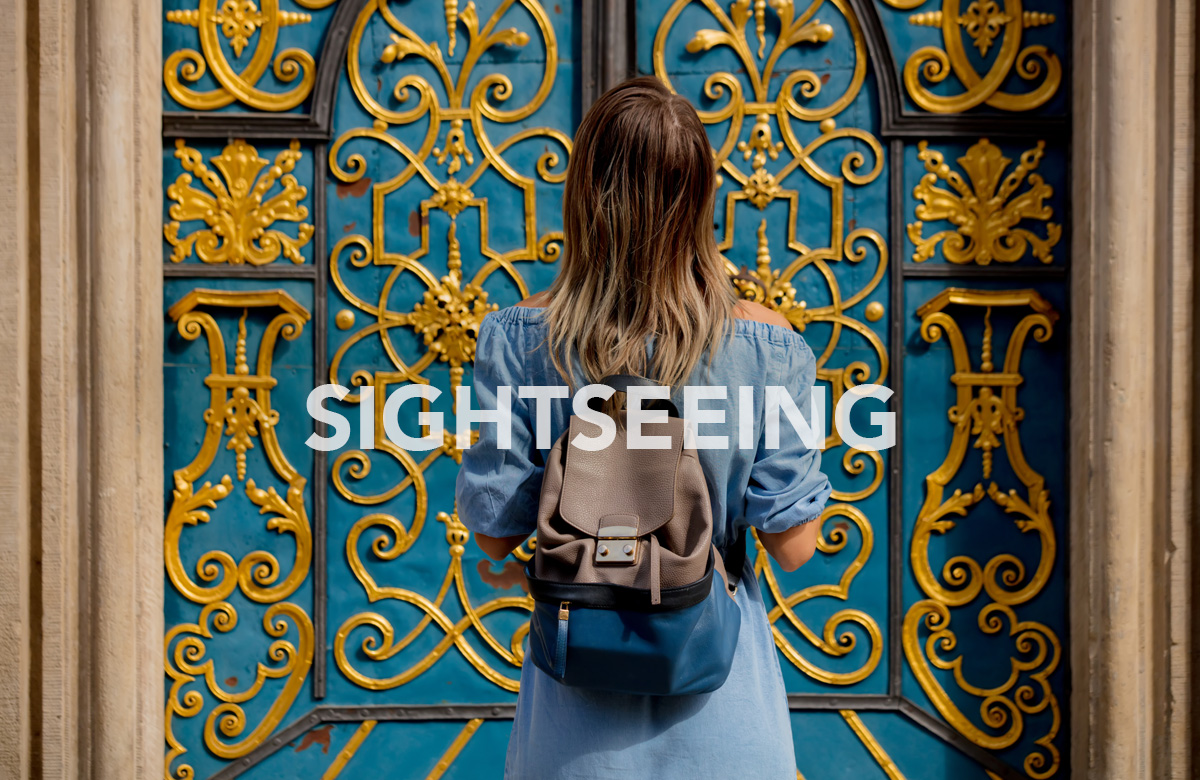
Sightseeing
Poland is a country with a long tradition of over a thousand years and a turbulent history. This is evidenced by the remaining numerous monuments of settlement, defensive, sacral or industrial architecture. The multitude and variety of those sights attract visitors who are kindly and professionally welcomed.
And there is something for everyone! There are numerous castles, palaces and mansions , mostly surrounded by historic and beautifully maintained gardens . Naturally, it is worth starting your adventure with castles and palaces from the most famous, largest, entered to the UNESCO list, or having great significance for the cultural and historical heritage of our country. And those will certainly be among them: The Wawel Royal Castle, the Royal Castle in Warsaw, the Książ Castle and the Castle of the Teutonic Order in Malbork.
The high number of religious monuments scattered throughout the country, including Europe’s famous sanctuaries such as Jasna Góra [Luminous Mount] in Częstochowa , will interest not only pilgrims but also lovers of beautiful architecture and ornaments from many eras.
There are also archaeological sites (e.g., the Archaeological Museum in Biskupin, the Slavs and Vikings Center in Wolin, the Ethnographic Park in Sanok and the Ethnographic Park in Tokarnia ), mighty forts and fortifications erected for military purposes (e.g., Srebrna Góra, Modlin, Międzyrzecki Rejon Umocniony [Międzyrzecz Fortified Region]), monuments of technology and industry (including the UNESCO-listed salt mines in Wieliczka and Bochnia ), wooden architecture (The Wooden Architecture Route in Małopolska, Podkarpacie and Silesia) create a rich array of opportunities to visit our country.
They have been created throughout history, under different conditions, often as a result of the clash of influences between Western European and Eastern cultures. Today, those historical sites are offered to our guests as attractions or products of special value. Some serve as museums, and some are used directly to serve visitors as hotels or conference centers.
And what will a nature -loving tourist see? — — national parks , over 120 landscape parks , numerous urban parks and gardens , and those embedded in the landscape of small towns, villages and green areas. The tourist will see coastal and mountain, lowland and upland landscapes; they will see rivers, ponds and lakes, forests, woods and primeval forests …
There is a lot to see in Poland and every tourist will find something special for themselves!
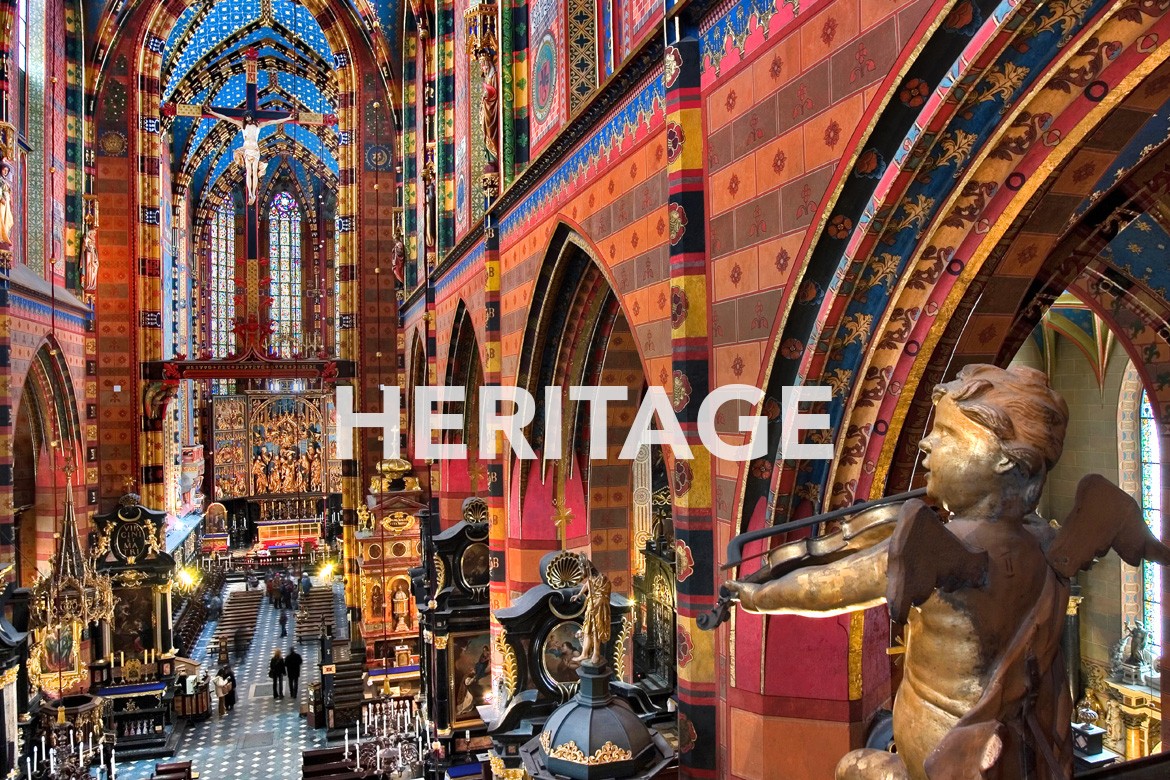
Since its beginnings, Poland has been at the center of Europe – at the crossroads of different cultures. Therefore, here you will learn about multicultural and diverse traditions, historical monuments and interesting history. In terms of those resources, Poland is competitive on the European tourism market as it has many valued assets in the form of sites and events of high historical value – a testimony of Polish and European history, flourishing culture and arts.
Discover the rich history and cultural heritage of a country in the center of Europe through as many as 17 sites from Poland entered to the UNESCO World Heritage List. And the venues and sites are very diverse, with something for everyone. Among them there are castles, historical centers, mines, parks …
Apart from the historical centers of Kraków and Toruń , with their fascinating authentic medieval buildings, Warsaw’s Old Town occupies a special place in our heritage. Appreciated by the UNESCO commission as it was completely rebuilt after the destruction of World War II. Among the Polish Old Towns on the UNESCO list you will also find the Renaissance „Padua of the North”, i.e. Zamość .
One of Poland’s very attractive tourist regions – the Małopolska province – is rich in as many as 5 sites entered to the UNESCO list. Among them, apart from the already mentioned Old Town in Kraków within the old walls, Wawel Hill and the Kazimierz and Stradom districts , the region can also boast the world-famous Royal Salt Mines in Wieliczka and Bochnia, or the wooden churches of Małopolska. Not only wooden churches are among the UNESCO sites in Poland, but also wooden Orthodox churches in the Polish and Ukrainian Carpathian region .
The Castle of the Teutonic Order in Malbork is also on the UNESCO list in Poland as a unique architectural work on a global scale whose bold and innovative technical solutions were later used in other strongholds.
The Centennial Hall in Wrocław was also included in this noble group of our country’s sites due to the „revolutionary” use of reinforced concrete as the cover with the largest span in the world. Not far from Wrocław you can visit the extraordinary Churches of Peace in Jawor and Świdnica with their impressive interiors decorated with magnificent polychromes. If you head further west towards the German border, you will find yourself in Muskau Park , a German-Polish cross-border facility and the largest English-style park in Poland and Germany.
Additionally, Poland’s cultural heritage assets include those listed by UNESCO in recent years: Lead, silver and zinc ore mine in Tarnowskie Góry (in 2017) and Krzemionka region of prehistoric striped flint mining (in 2019).
In our country, you will also find two natural heritage assets listed by UNESCO. These include the ancient, more than 500-year-old Białowieża Forest as a Polish-Belarusian transboundary site and the recently inscribed (in 2021) Ancient and Primordial Beech Forests of the Carpathians and other European regions.
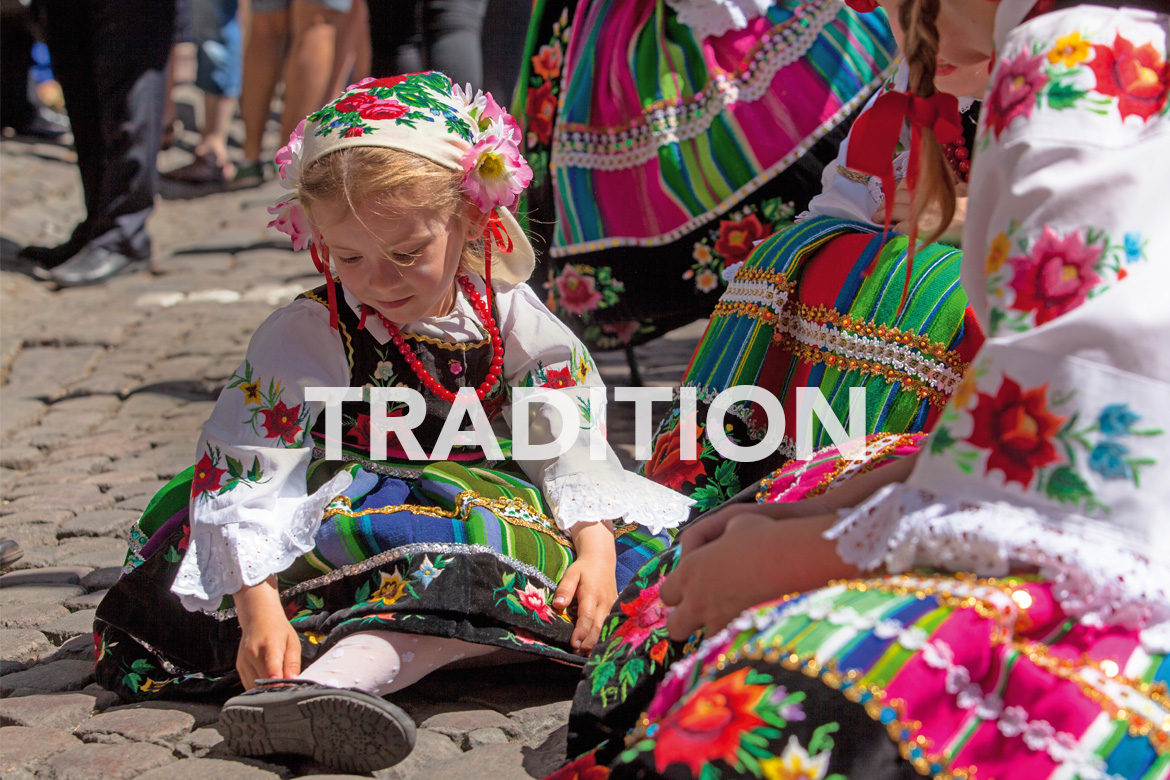
Polish roads will take you to interesting places connected with local customs and unusual traditions. The most important of these is … Polish hospitality! You will experience it, especially in the Polish countryside, where, in addition to well-organized and well-equipped agro-tourism farms, you will find beautiful landscapes, the cultural and culinary richness of the regions and a multitude of traditional and local products.
In the picturesque village of Koniaków , located in the south of Poland in the Silesian Province, you can see and buy unusual lace clothing … The village owes its uniqueness to the two-hundred-year-old, yet still alive, tradition of crocheting lace wonders. The mesh products from Koniaków have become so famous that everyone wants to own one. Tiny flowers, fanciful leaves, delicate buds … Dresses, shawls, tablecloths, napkins, or curtains are standard. But when lace makers received orders for lingerie, a lace war broke out. Although lace from altars worn under skirts still causes controversy, there are wonders on offer from Koniaków lace makers with such names as: „Subtle Heart” or „Swan Grace”.
The folklore of Łowicz is an interesting example of unusual traditions and costumes. Łowicz – a small town in the Łódzkie Province, is known for its colorful folk culture, including costumes, dialect, dance, music, festivals and Łowicz handicrafts, such as cut-outs and spiders made of colorful paper. The Łowicz costume is one of the richest and most attractive Polish folk costumes, still worn today. The beauty of the Łowicz costume was used in the fashions of other regions. The feast of Corpus Christi is celebrated exceptionally beautifully in Łowicz with a colorful procession in which the folk costume of Łowicz will catch everyone’s eye.
Of course, festive customs are most closely associated with Polish tradition. Polish Easter is traditionally accompanied by many colorful events and tourist attractions. In Poland in particular, Easter is unique, having been part of our tradition and culture for centuries. Those include Easter markets, fairs and markets, colorful processions accompanying Palm Sunday and the associated competitions for the prettiest or largest Easter palm, Easter festivals, Easter egg painting workshops, and cheerful games traditionally associated with Easter Monday. The blessing of food in colorfully decorated baskets on Easter Saturday is undoubtedly an extremely attractive tradition. Christmas in the Polish way, on the other hand, means a Christmas tree sparkling with different colors, fragrant gingerbread and Christmas carols. Unique gifts, beautiful Christmas decorations or the wonderful smells of Christmas dishes are just some of the attractions we can find at fairs that spring up before Christmas in central locations in Polish cities and towns. The Christmas fairs have become real hits, loved by tourists and locals alike.
Get inspired by those unique traditions, travel to Poland and explore many other unusual places, where you will find rich folklore and hospitable locals.
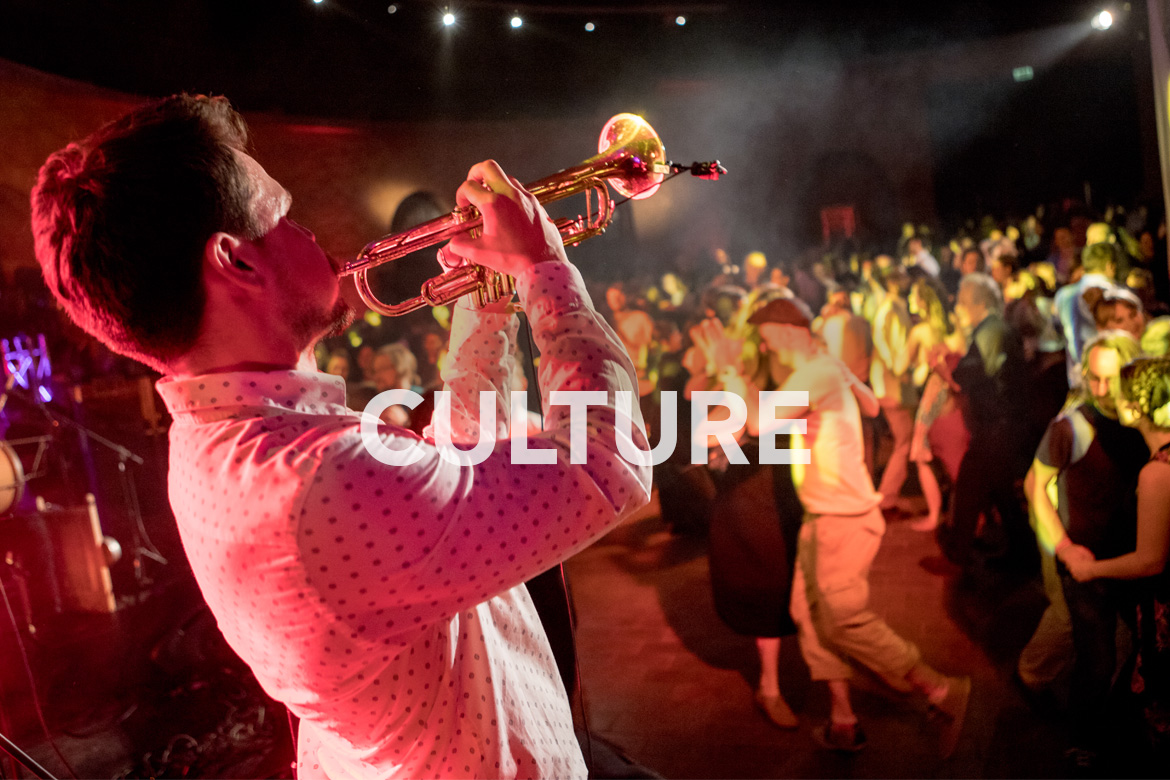
Theatrical performances, film screenings, festivals and concerts, which are a real treat for music lovers, exhibitions of paintings, posters, photographs, which will delight art connoisseurs, and to top it off, wherever you go there is fantastic historical architecture. In Poland, even the most demanding tourist will experience sublime moments and pleasurable sensations that they will not forget after returning home.
For our guests, Poland offers a wide range of places where culture can be fully experienced through the sensations of admiring art (numerous museums and galleries, e.g., n ational museums in large cities ) or music (e.g., Chopin concerts in Warsaw’s Royal Łazienki Park ).
In addition, well-known music festivals and concerts (e.g. „ Orange Warsaw Festival”, „Open’er Festival Gdynia”, „Misteria Paschalia” in Kraków ), unique re-enactments and historical shows (e.g. the re-enactment of the Battle of Grunwald, the open-air show „Eagle and Cross”, „The Siege of Malbork”, „Storming of Zamość Fortress „), amazing light events and spectacular shows (e.g. festivals of light : „Light Move Festival” in Łódź and „Bella Skyway Festival” in Toruń ), fairs and international cultural events—all this is organized in Poland—a country in the center of Europe with an interesting history and a rich cultural heritage of diverse traditions.
Everyone will find a perfect event for themselves!

33 Must-Visit Attractions in Krakow

Krakow , the second largest city in Poland , delivers fairytale views, with the towering Wawel Castle, as well as people-watching meccas such as Florianska Street and the Market Square. Dark times in the city’s recent history are evident in the Jewish ghetto memorial and Auschwitz-Birkenau concentration camp and green spaces such as Planty Park offer plenty of headspace. Get some inspiration with our guide to things to do in Krakow before planning a trip with Culture Trip to these amazing destinations .
Did you know you can now travel with Culture Trip? Book now and join one of our specially curated small-group tours to adventurous destinations around the world.

1. Market Square

2. Wawel Castle

Become a Culture Tripper!
Sign up to our newsletter to save up to 500$ on our unique trips..
See privacy policy .
4. Barbican
Building, Museum

5. St Florian's Gate

6. Ko?ciuszko Mound

7. Florianska Street
Architectural Landmark

Cutting through the very heart of the northern half of the Old Town district, the bustling drag that is Florianska Street hosts craft beer bars, souvenir emporiums and vodka tasting joints. You’ll need to be in the mood for ambling and taking in the atmosphere during the high season, as it’s often packed with tourists making their way from St Florian’s gate to the Market Square.
8. The Sukiennice

9. St Mary's Basilica

10. The Jewish Quarter

Set within walking distance of the Old Town, the historic Jewish Quarter (also known as Kazimierz ) was once a separate city in its own right, founded in the 15th century, and considered a model Jewish community. Jews were forcibly moved to a ghetto shut off from the rest of the city in 1941. Today, it retains a unique vibe with its crumbling tenement blocks, great synagogues and cool bohemian beer joints.
11. The Dragon's Den
Natural Feature

12. Vistulan Boulevards
Natural Feature, Architectural Landmark

As the winding courses of the Vistula River snake through the heart of Krakow, its banks host wide spaces of greenery, ad hoc summertime markets, beer bars and bobbing boat cafes. Hire a bike or go jogging, stop and watch passing boats on the river, or stroll along as you decide what to see in Krakow next.
13. Slowacki Chamber, Wieliczka Salt Mines

14. Auschwitz-Birkenau
Memorial, Museum

15. Wawel Cathedral
Cathedral, Church

16. Cmentarz Rakowicki

17. Ojców National Park
Forest, Park, Ruins

19. Plac Bohaterów Getta

20. Market Hall Unitarg
Market, Polish

21. Oskar Schindler’s Factory
22. museum of stained glass, 23. museum of contemporary art in krakow.
Museum, Shop
24. Lost Souls Alley
25. lovers' bridge.
Colorful, lovable and entertaining all at once, Krakow’s version of the so-called Lovers’ Bridge (a phenomenon that has spread right across the continent since first being coined in Paris) finds its home on Father Bernard’s Footbridge. Everyone knows how it works: couples come to attach a padlock on the bridge and throw the key into the Vistula below in the hope that it will cast their union in iron. A little soppy? Perhaps, but just check out the views of the river and Podgórze district across the water. Oh, and Forum Przestrzenie is always close by for an al fresco beer.
26. Wódka Café Bar
Bar, Cafe, Beer, Polish, Coffee
27. Pharmacy Museum

28. Rynek Underground
Market, Museum

Galeria Plakatu
A Haven for graphic designers, art lovers and culture buffs alike, the Polish Poster Gallery is a fantastic place to get inspired. Hosting over 2,500 Polish posters and promoting the culture around them, the petite gallery is a grass-roots organization dedicated to understanding the graphic history of the city. Covering areas like painting, theater, cinema, literature and food, the posters here are all-encompassing in their artistic merits!
Nothing short of an institution on the Krakow nightlife scene, this almost all-night watering hole is always packed out with locals, visitors and students alike. Some of the city’s cheapest vodka and beer flows from behind the bar, while plates of hearty pierogi dumplings and tartar offer some welcome late-night indulgence. Just don’t expect a smile at the bar!
29. Alchemia
Bar, Polish
30. Shop for antiques at Plac Nowy
31. church of corpus christi.
Church, Monastery
Additional words by Eliza Marin.

KEEN TO EXPLORE THE WORLD?
Connect with like-minded people on our premium trips curated by local insiders and with care for the world
Since you are here, we would like to share our vision for the future of travel - and the direction Culture Trip is moving in.
Culture Trip launched in 2011 with a simple yet passionate mission: to inspire people to go beyond their boundaries and experience what makes a place, its people and its culture special and meaningful — and this is still in our DNA today. We are proud that, for more than a decade, millions like you have trusted our award-winning recommendations by people who deeply understand what makes certain places and communities so special.
Increasingly we believe the world needs more meaningful, real-life connections between curious travellers keen to explore the world in a more responsible way. That is why we have intensively curated a collection of premium small-group trips as an invitation to meet and connect with new, like-minded people for once-in-a-lifetime experiences in three categories: Culture Trips, Rail Trips and Private Trips. Our Trips are suitable for both solo travelers, couples and friends who want to explore the world together.
Culture Trips are deeply immersive 5 to 16 days itineraries, that combine authentic local experiences, exciting activities and 4-5* accommodation to look forward to at the end of each day. Our Rail Trips are our most planet-friendly itineraries that invite you to take the scenic route, relax whilst getting under the skin of a destination. Our Private Trips are fully tailored itineraries, curated by our Travel Experts specifically for you, your friends or your family.
We know that many of you worry about the environmental impact of travel and are looking for ways of expanding horizons in ways that do minimal harm - and may even bring benefits. We are committed to go as far as possible in curating our trips with care for the planet. That is why all of our trips are flightless in destination, fully carbon offset - and we have ambitious plans to be net zero in the very near future.

Places to Stay
The best spa hotels in krakow, poland.

Hip Apartments in Krakow You'll Want to Call Home

The Best Luxury Hotels in Kraków

Where to Stay in Kraków for a Local Experience

Food & Drink
Meet the irishman who revived one of kraków’s traditional milk bars.

Restaurants
The best polish restaurants in kraków.

The Best Hostels in Kraków, Poland

Bars & Cafes
The best late-night bars in kraków, poland.

Guides & Tips
How to spend hours in krakow@@@@@@@@@@@@@@@@@@@@@@@@@@@@@@@@@@@@@@@@@@@@@.

The Top 12 Museums in Krakow

The Best Late-Night Eats in Krakow

The Best Budget Stays in Krakow, Poland
Winter sale offers on our trips, incredible savings.

- Post ID: 1271965
- Sponsored? No
- View Payload

Touropia Travel Experts
Discover the World
17 Top Attractions & Things to do in Warsaw
It has taken a while for Warsaw to get back on its feet after the devastating effects of World War II. However, the transformation is now complete.
Nestled along the banks of the Vistula River, Poland’s capital city is one of the most dynamic in Europe. Its charming old town – a UNESCO World Heritage site – features quaint cobblestone streets that accommodate beautiful medieval architecture and lively market squares.
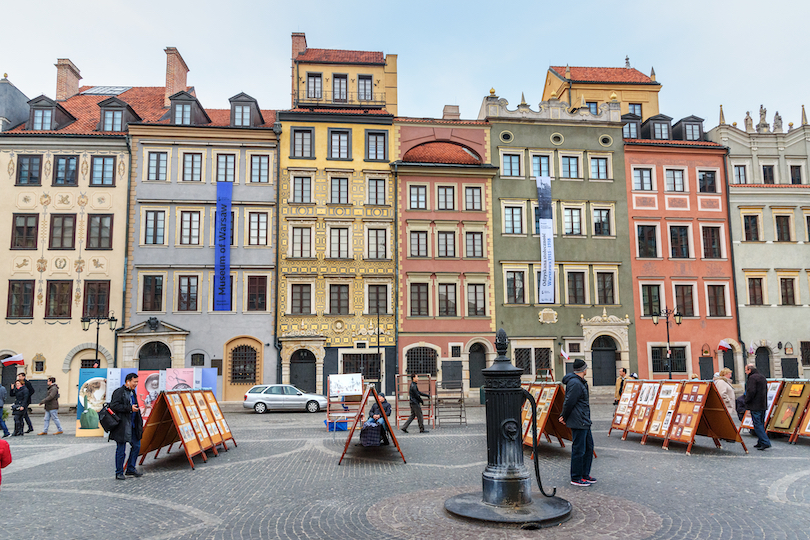
However, there are so many more things to do in Warsaw than just its historic past. It also has a thriving art scene, diverse culinary offerings (with many foreign influences), and plenty of bustling neighborhoods that champion modernity.
In short, Warsaw is a fascinating melting pot of creativity, innovation and resilience that will blow your mind. The best way to experience Warsaw is to embrace it with open arms.
17. Warsaw Barbican
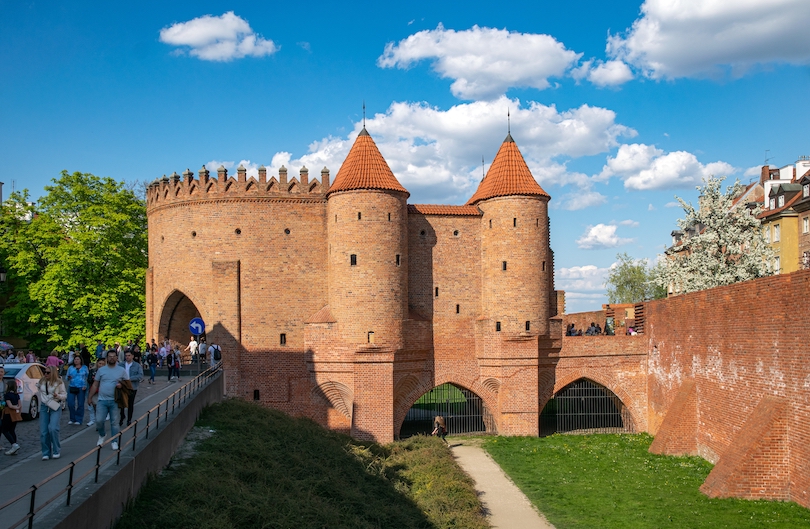
One of your first ports of call in Poland’s capital should be The Warsaw Barbican.
Built in the 16th century, this impressive defensive structure formed part of the fortifications surrounding Warsaw’s Old Town. It comprises thick walls and a series of watchtowers, that remain one of Europe’s last remaining preserved examples of such military architecture.
The structure also features turrets and a distinctive red-brick facade, which showcases Gothic and Renaissance architectural elements. It can be reached by traversing the iconic bridge that leads to it.
Inside the Barbican is a museum with exhibits that detail its history and significance. It provides a good insight into the city’s resilience and enduring spirit.
16. St Anne’s Church
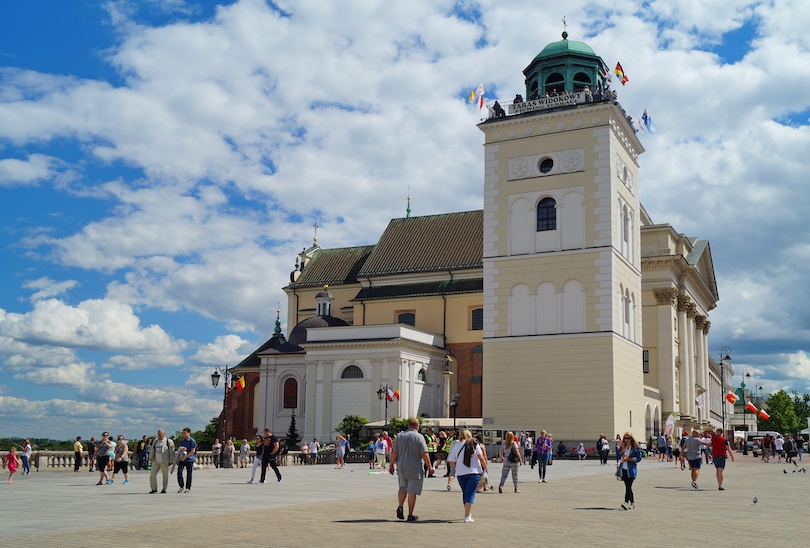
Poland is one of the world’s most religious countries and it houses several centuries-old cathedrals and churches. One of the best of them is St. Anne’s Church.
Founded in the 15th century, the church incorporates both Baroque and Gothic designs. It also features a striking facade that instantly captivates with intricate sculptures, reliefs and other ornate details.
If you like the outside of the church, you should find its interior just as compelling. The remarkable altarpiece and its intricately carved wooden decorations are just two of the features that dominate its layout. Come as soon as it opens to appreciate them at the quietest time.
Moreover, it’s worth climbing to the top of the church’s tower. From there, you’ll get superb panoramic views of Warsaw’s skyline – which you can take plenty of beautiful photos of.
15. Zlote Tarasy
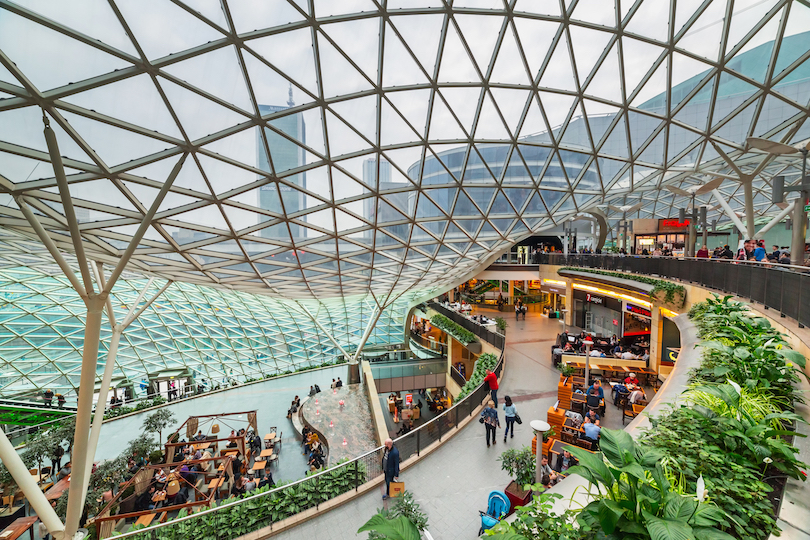
Złote Tarasy is one of Warsaw’s premier complexes for shopping and entertainment. So, if you fancy some retail therapy or want to watch a performance of note, this is the place to come.
Opened in 2007, this architectural marvel is renowned for its undulating glass roof, which is reminiscent of sea waves. It integrates seamlessly with the surrounding urban landscape and accommodates various shops, restaurants and entertainment venues. It also hosts a multi-screen cinema and a fitness center for those who fancy a workout.
As it is near the Warsaw Central Station, the Złote Tarasy is easily accessible. Its design, which features a mix of contemporary and innovative materials, reflects Warsaw’s dynamic spirit of renewal.
14. Chopin Monument
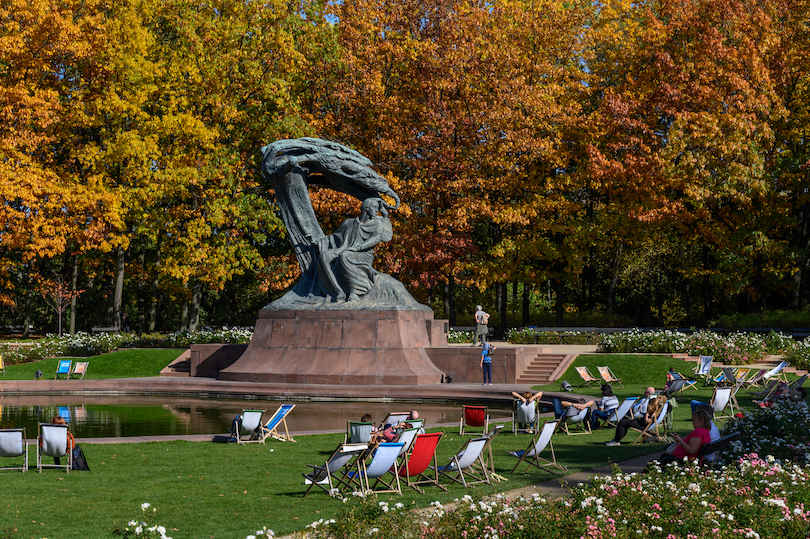
One of Poland’s most famous sons is the composer Frédéric Chopin. If you are a fan of his classical music or happen to be in the lush surroundings of Łazienki Park, it’s worth checking out the Chopin Monument.
This poignant tribute takes the form of a bronze statue that captures Chopin in a contemplative pose. It was sculpted by Wacław Szymanowski and first unveiled to the public in 1926. Surrounding the sculpture is a circular stone bench where you can sit and enjoy the serenity of his music. If you happen to do this around sunset, it is a magical experience.
Having survived the ravages of World War II, the monument has become an endearing symbol of Warsaw’s cultural identity and resilience. In the summer, regular open-air concerts are held here.
13. Castle Square
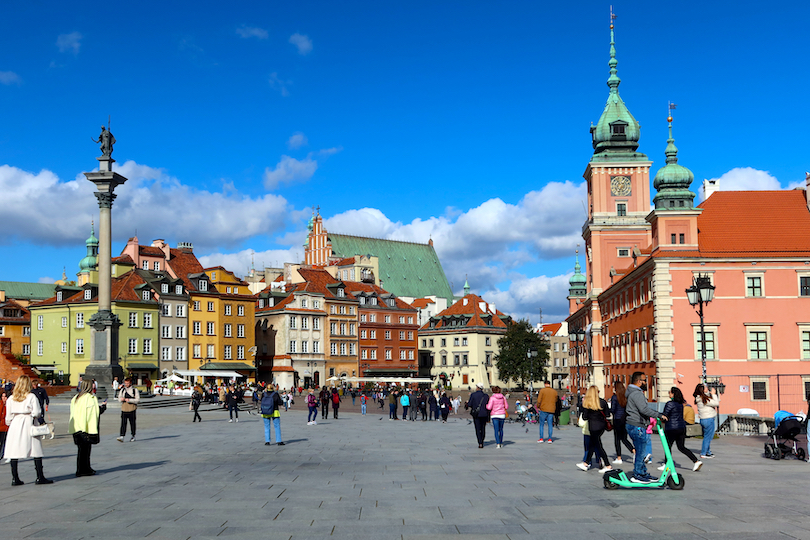
Situated right in front of the Royal Castle is Castle Square. Locally known as Plac Zamkowy it serves as a starting point for exploring the historic Old Town. At the same time, it is a popular meeting place for locals and tourists.
Surrounded by colorful townhouses, the square dates back to the 17th century. Although it was heavily damaged during World War II, both the square and the castle have been painstakingly reconstructed.
Overall, the square is a vibrant hub of charming cobblestone streets, buzzy cafes and interesting souvenir shops, which makes it a pleasant place to explore. At the center of it is Sigismund’s Column, a prominent landmark that pays homage to King Sigismund III Vasa.
12. Warsaw Uprising Monument
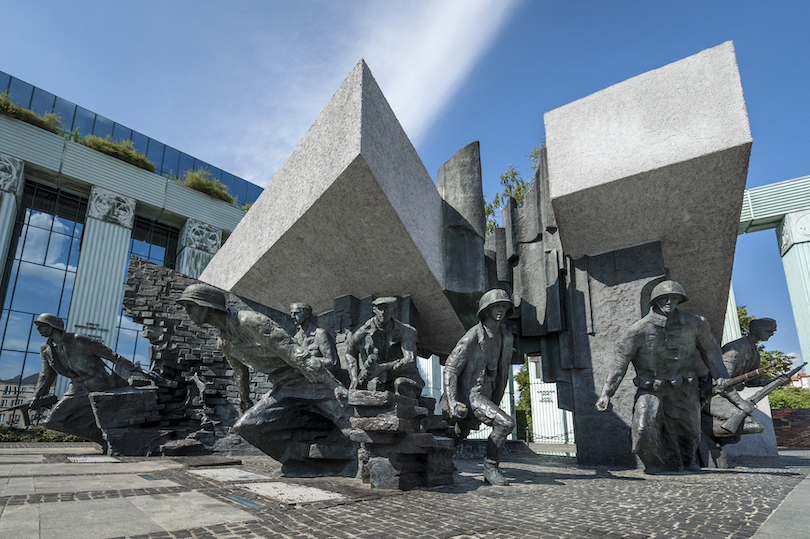
Another intriguing monument to see during your time in the city is the Warsaw Uprising Monument. It provides a solemn tribute to the resilience and sacrifice that the Polish people made during the Warsaw Uprising of 1944.
The bronze memorial was unveiled in 1989 on the 45th anniversary of the uprising. It was created by Wincenty Kućma and honors the brave men and women who fought against Nazi occupation. To see it, you’ll have to make your way to the southern end of Krasinski Square.
The memorial site also includes an underground museum that provides more information about the finer points of the uprising. Whilst there, visitors can witness the stark reality of wartime struggles and pay respects to those who endured unimaginable hardships.
11. Chopin Museum
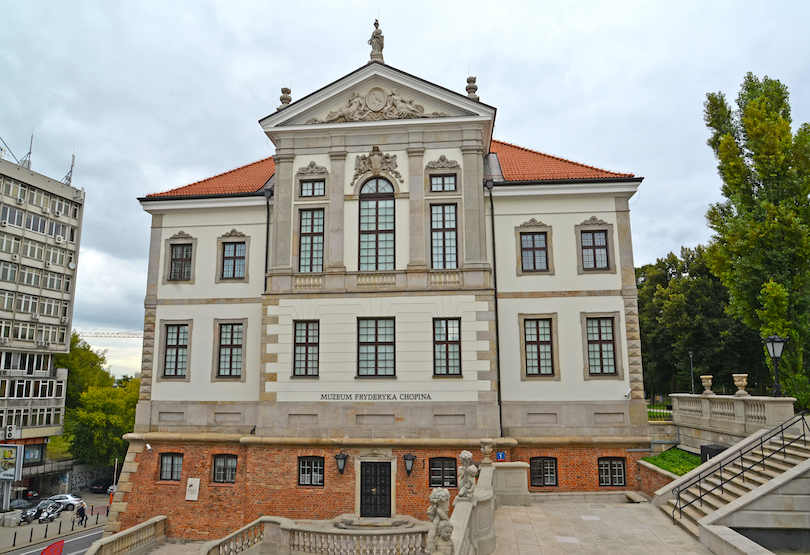
As well as the Chopin Monument, it is worth checking out The Chopin Museum if you are a fan of classical music.
This brilliantly thought-out and well-maintained museum takes you on a captivating journey through the life and works of this genius composer. It is housed in the Ostrogski Palace and opened its doors in 2010 after an extensive renovation.
The museum features interactive exhibits that provide an immersive experience to visitors. They allow them to explore Chopin’s world through multimedia displays, original manuscripts and even his personal belongings.
Showcasing the composer’s life from childhood to his international acclaim, the museum offers a profound insight into his creative process and the cultural context of his time.
Thanks to innovative audio-visual installations and touch-sensitive screens, you should get a really good understanding of the man and his music.
10. Krakowskie Przedmieście
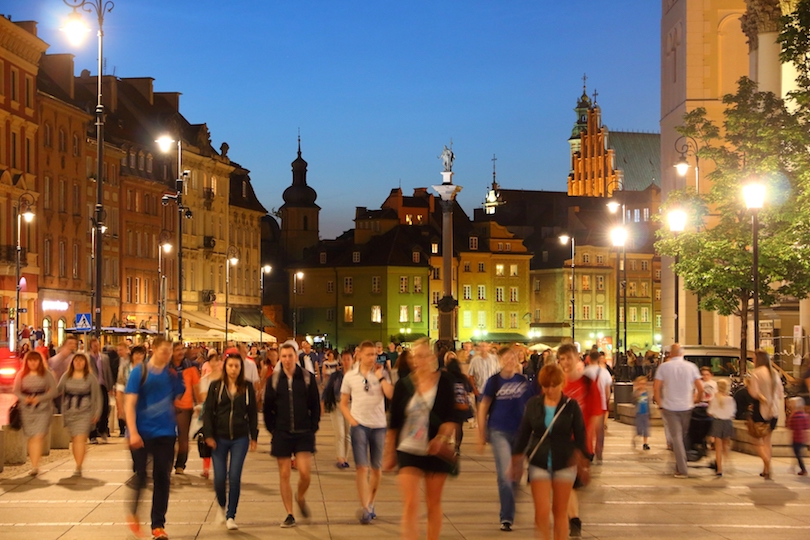
Connecting the historic Old Town with Wilanów Palace, Krakowskie Przedmieście forms part of the northern section of the famous ‘Royal Route’. It is renowned for its regal history and incredible architecture, including a parade of aristocratic residences, palaces, churches and elegant townhouses that exude a timeless charm.
For centuries, this grand boulevard has been a focal point of Warsaw’s cultural and social life and you get a real sense of this as you traverse the street. Notable landmarks like the Presidential Palace, the University of Warsaw and St. Anne’s Church can all be easily visited. Don’t be surprised if you spend a lot of quality sightseeing time here.
9. Copernicus Science Centre
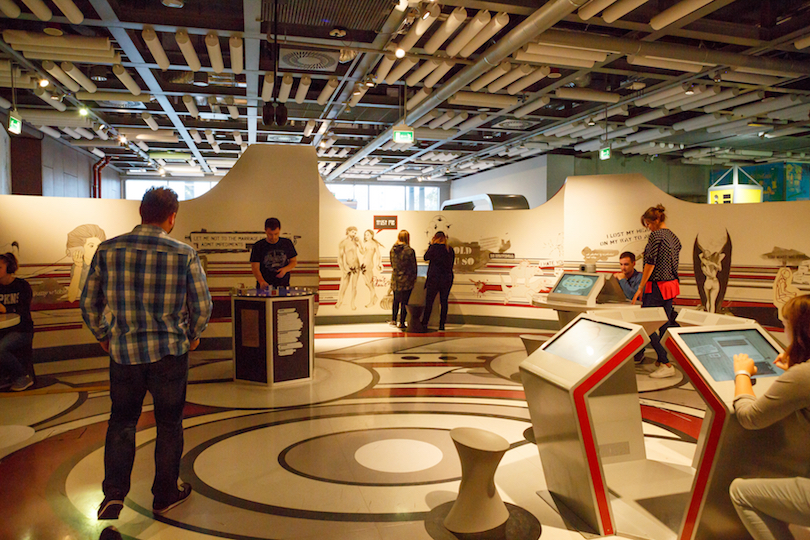
If you are into science, you’ll want to visit The Copernicus Science Center. This cutting-edge institution is named after the renowned astronomer Nicolaus Copernicus and is dedicated to promoting scientific curiosity and education.
The center boasts modern architecture that features a distinctive spherical structure. It also houses more than 450 interactive exhibits that span various scientific disciplines.
Wandering through the center, visitors can engage in hands-on experiments, explore the wonders of physics, biology and technology and participate in live demonstrations. The center is particularly family-friendly and encourages visitors of all ages to discover the joy of learning through play.
The planetarium and robotic theater are two must-visit destinations at the center.
8. POLIN Museum of the History of Polish Jews
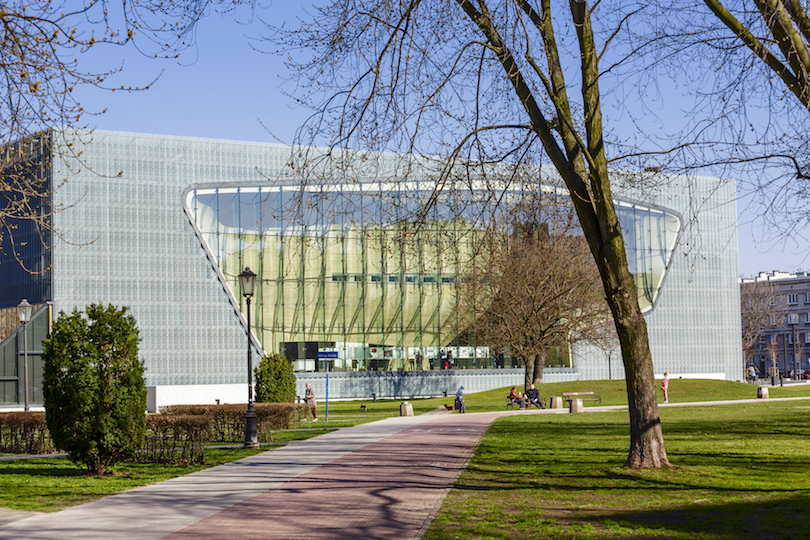
One of the most fascinating attractions in Warsaw is The POLIN Museum of the History of Polish Jews.
Located on the site of the former Warsaw Ghetto, the institution is the first and only one of its kind in the country. It focuses on honoring the memory of the community created by Jews in Poland. It opened in 2013 and is notable for its unique design, which resembles an open book that symbolizes a dialogue between past and present.
Once inside the museum, you’ll find immersive exhibitions that trace the history of Polish Jews from medieval times to the present day. They highlight the contributions, struggles and cultural richness these people brought.
Overall, the multimedia displays, artifacts and interactive installations provide a comprehensive and emotionally evocative experience for the visitor. The museum also hosts cultural events, lectures, and workshops regularly throughout the year.
7. Palace of Culture and Science
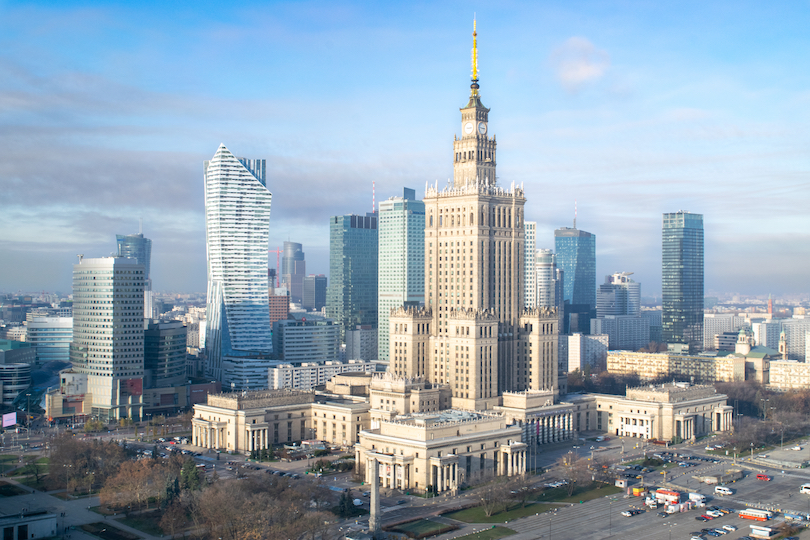
Dominating the skyline in Warsaw is the Palace of Culture and Science, which just happens to be the second tallest building in the country.
Completed in 1955 the structure was designed by Soviet architect Lev Rudnev, who blended various architectural styles, including Socialist Realism. Its design was inspired by the high-rise Art Deco buildings of America and historical Polish architecture.
It was previously known as ‘Joseph Stalin’s Palace of Culture and Science’, however, this name was later dropped during the time of destalinization.
Today, it houses various cultural institutions, theaters, museums and conference halls which you can visit. Tourists can also ascend to its panoramic terrace to enjoy breathtaking views of Warsaw.
6. Warsaw Uprising Museum
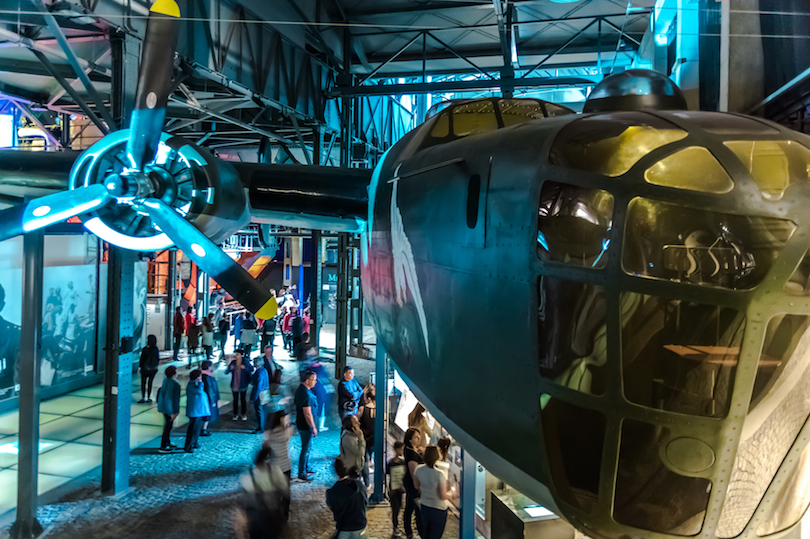
If you know your World War II history, you will understand how important the Warsaw Uprising Museum will be to visit. If you don’t, then that is all the more reason to go there.
As its name implies, the museum pays a poignant tribute to the heroic spirit of the Polish resistance during the Warsaw Uprising of 1944. It is housed in a former tram power station and features exhibits that depict the daily life, struggles, and sacrifices of the insurgents.
Through multimedia displays, personal testimonies, and a replica of the underground city where the resistance operated, you’ll gain a good understanding of their experiences.
Visitors can explore an extensive collection of artifacts, including weapons, documents and photographs. At the same time, a reconstructed B-24 Liberator bomber aircraft is a notable highlight.
5. Wilanow Palace
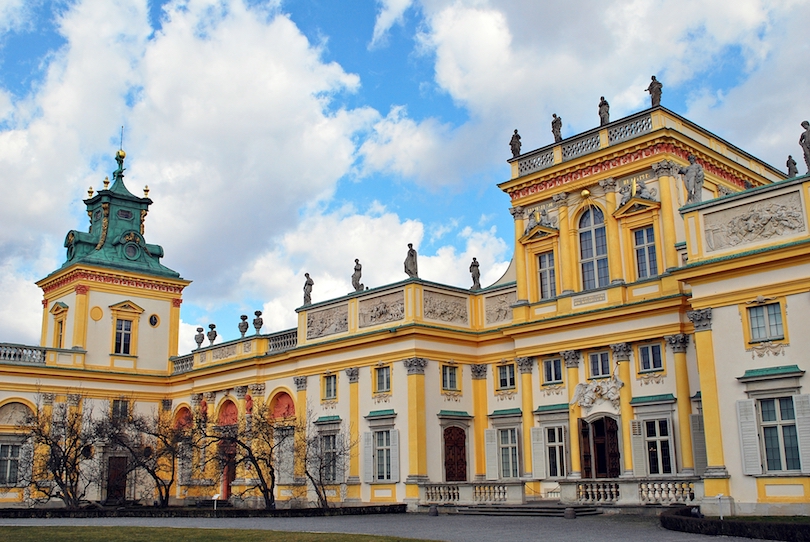
Nestled in the Wilanów district of Warsaw resides one of the country’s most significant historical buildings – Wilanów Palace.
Commissioned by King John III Sobieski in the late 17th century, the palace served as a royal residence and embodied the splendor of Poland’s golden age. It is beautifully set among stunning gardens and parks replete with fountains, sculptures and manicured lawns that are an attraction in themselves.
What makes Wilanów Palace immediately stand out is its seamless blend of Baroque, Rococo and Neoclassical architectural styles. You’ll want to snap plenty of photos from different angles to capture its true beauty.
Once inside, you’ll see an impressive collection of art, furnishings and period artifacts that offer a glimpse into the opulent lifestyle of Polish royalty.
4. Nowy Swiat
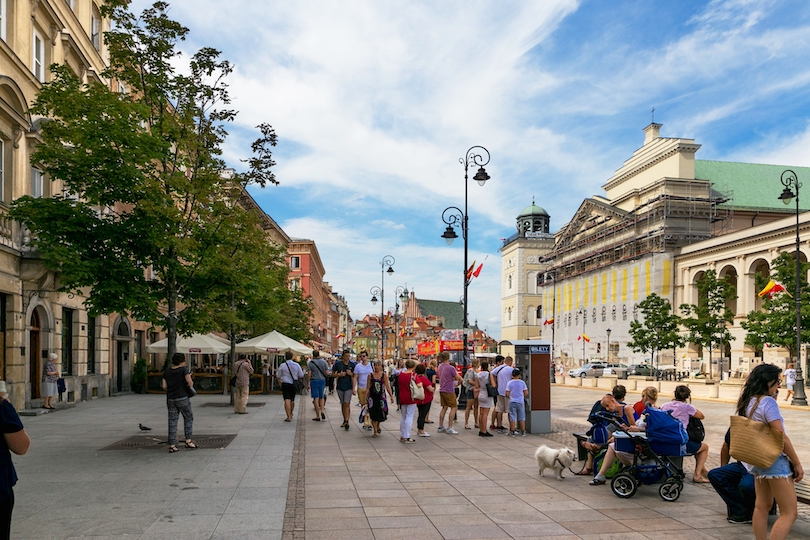
Dating back to the 17th century Nowy Świat is one of the main thoroughfares in Warsaw. Its name translates to ‘New World Street’ in English and it connects Castle Square with Charles de Gaulle Roundabout.
Noted for its historic buildings, boutique shops and inviting cafes, Nowy Świat boasts a cosmopolitan atmosphere. It also provides a picturesque route to navigate your way through the heart of the city.
Surviving wars and countless reconstructions, the street possesses an architectural diversity that features styles from different periods. It also has many restaurants that provide excellent opportunities to try local delicacies like Kopytka (dumplings) and Gulasz (stew). In addition, you’ll find plenty of shops that will enable you to do a bit of retail therapy.
3. Royal Castle
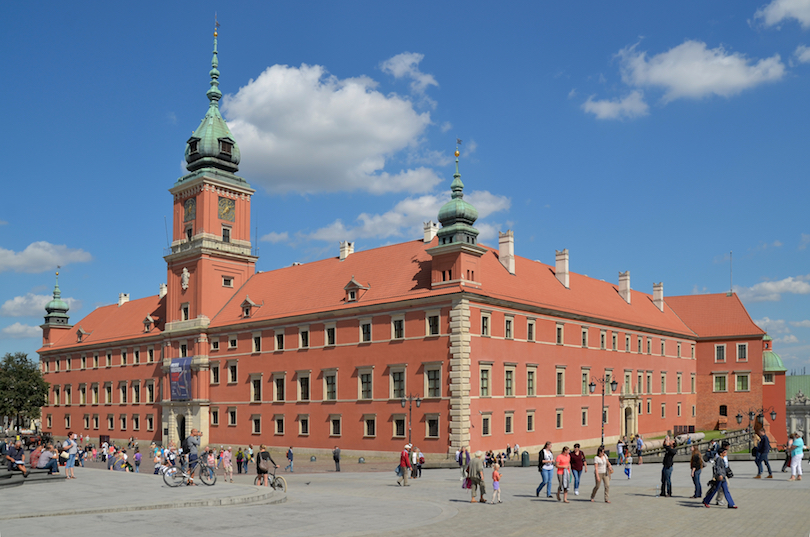
Perched atop Castle Square in the heart of the Old Town is Warsaw’s famous Royal Castle. Originally built in the 14th century, it stands as a symbol of Poland’s regal heritage and resilience.
Over the years it has witnessed centuries of Polish history, serving as the residence of monarchs and as a political center. Unfortunately, it was severely damaged during World War II. However, it has been meticulously restored to its former glory, thanks to reconstruction efforts.
Tourists can explore opulent chambers, like the Great Apartment and the Throne Room, which are adorned with period furnishings and artwork. They can also enjoy the castle’s impressive collection of paintings, sculptures and royal memorabilia that relate the story of the city’s cultural legacy.
2. Lazienki Park
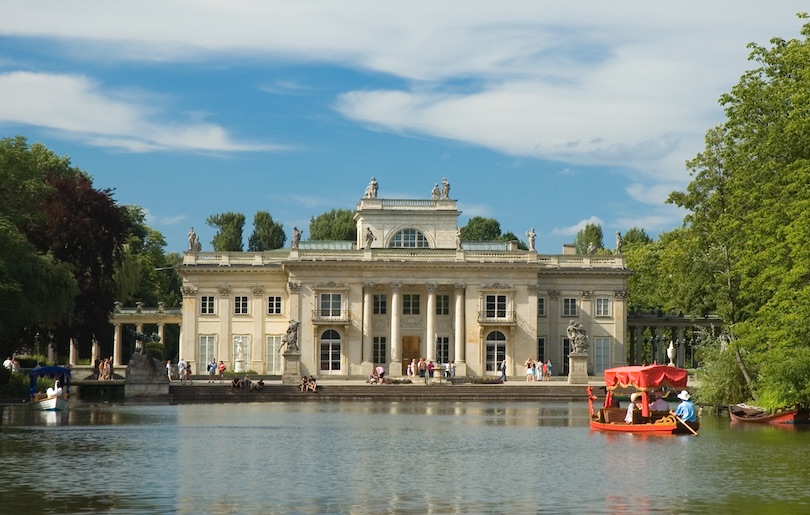
Warsaw doesn’t just have splendid architecture, it also accommodates beautiful greenspace too. One of the finest examples is Łazienki Park, which resides in the Downtown district, just off of Ujazdów Avenue.
Also known as ‘Royal Baths Park’, it is the largest park in the city and is celebrated for its scenic beauty and cultural significance. It was originally designed in the 17th century and later transformed into a summer residence for King Stanisław August Poniatowski.
The park encompasses the neoclassical Palace on the Isle, a picturesque amphitheater and charming pavilions scattered amidst lush landscapes. It also hosts outdoor concerts, cultural events and the annual Chopin Concerts – which take place at the foot of the monument which resides within it.
1. Old Town Market Square
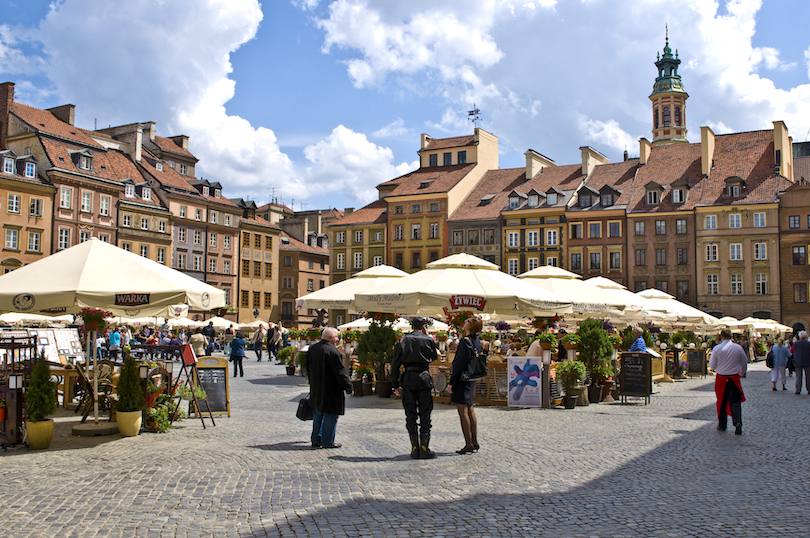
For most visitors to Warsaw, the Old Town Market Square (Rynek Starego Miasta) is somewhere they will spend quite a bit of time.
This remarkable square bristles with charm, historical and cultural significance. Originally it was constructed in the 13th century, but much of the city was destroyed during World War II. However, the area has been so well restored it’s almost impossible to tell it was previously damaged.
The square is surrounded by colorful townhouses and boasts a lively ambiance with outdoor cafes, restaurants and various street performers. It also features the imposing Warsaw Mermaid statue and is home to landmarks like the Adam Mickiewicz Museum and the Historical Museum of Warsaw.
While the square is buzzy all day, it is worth heading down there in the evening, as that is when things really liven up.
Best Time to Visit Warsaw
Straddling the Vistula River, Poland’s capital Warsaw enjoys a continental climate with cold, cloudy winters and relatively warm, sunny summers. May to September is the most popular time to visit when temperatures average from 18 to 24°C (64 to 75°F).
While July and August are the busiest, most expensive months, there are lots of fun events like the Warsaw Summer Jazz Days and Chopin Summer Concerts to attend. The whole city has a lovely vibe with its numerous parks and green spaces looking their best.
Either side of summer, Warsaw is still very pleasant to visit though huge crowds still throng about the center. As October sees the prestigious Warsaw Film Festival take place, it is only in the much-colder November that the city finally falls quiet.
December, however, immediately sees a return to business as people flock here for its cozy, traditional Christmas market – one of the biggest and best in Poland. The city then slumbers until spring when the fresh flowers make its river and parks very pretty to walk about again.
Where to Stay in Warsaw
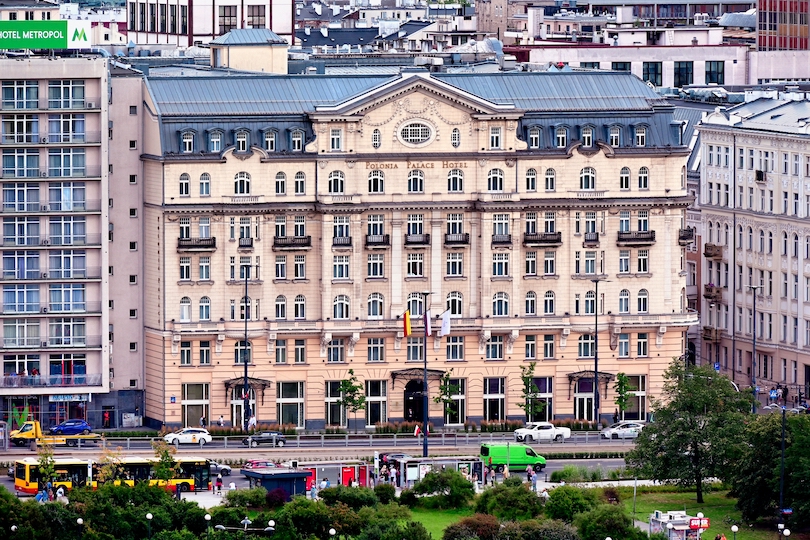
When it comes to finding somewhere to stay in Warsaw, there are plenty of options available to you.
But if it is your first time in the city, you should base yourself in Śródmieście, or more specifically the Old Town. This area is the heart of Warsaw and you’ll be close to lots of art galleries, theaters, museums, restaurants, shops and some of the city’s main attractions.
The historic Hotel Polonia Palace is a terrific accommodation choice in this area. It is located directly opposite the Palace of Culture and Science and features an excellent restaurant that serves European and Polish cuisine. It also has comfortable rooms and a nice lobby bar to relax and unwind.
Not far from the Hotel Polonia Palace is the Hotel Metropol . This budget option is just a 5-minute walk from the Palace of Culture and Science. It is known for its superb breakfasts and dinners which you can get from the on-site Metro Jazz Bar & Bistro Restaurant. It also has rooms with ensuite bathrooms.
How to get there
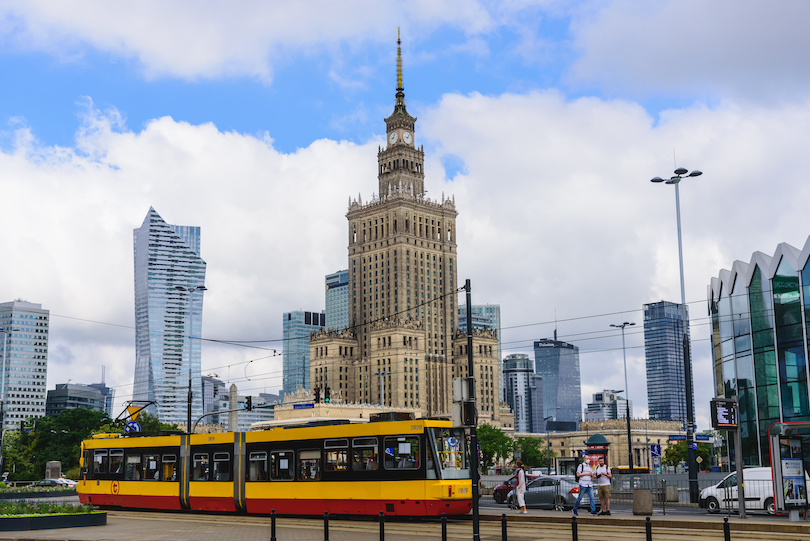
Like most capital cities in Europe, Warsaw is a relatively easy destination to get to via air and rail.
Warsaw Chopin Airport is the primary international gateway to fly into. It is situated about 10 km southwest of the city center and receives multiple flights a day from Europe, the USA and Asia.
American Airlines, British Airways, Lufthansa and Qatar Airways are some of the many airlines that fly there. Additionally, for budget carriers like Easyjet and Ryanair, Modlin Airport is another point of entry – about 40 kilometers north of Warsaw.
If you would prefer not to fly, the city is well-connected by an extensive train network. Warszawa Centralna (Warsaw Central Station) serves as the major hub for domestic and international rail travel.
Map of Tourist Attractions in Warsaw
Share this post:
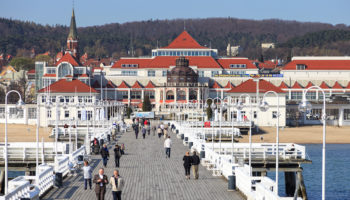
15 Best Cities to Visit in Poland
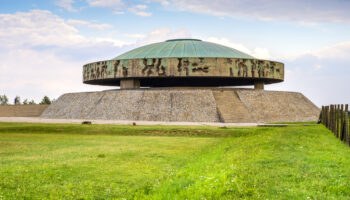
16 Fun Things to Do in Lublin, Poland
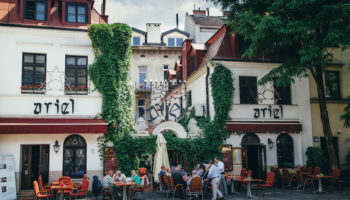
Where to Stay in Krakow: Best Neighborhoods & Hotels
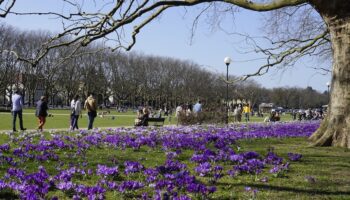
16 Fun Things to Do in Szczecin, Poland
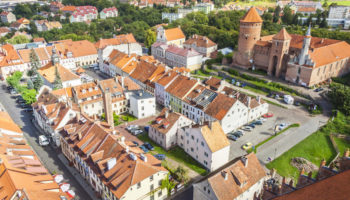
14 Stunning Small Towns in Poland

17 Top Attractions & Things to do in Poland

16 Most Beautiful Regions in Poland
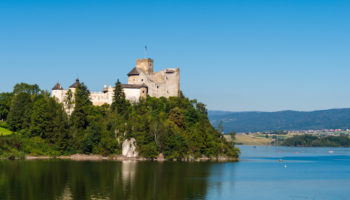
16 Most Beautiful Castles in Poland
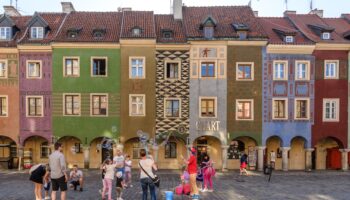
17 Best Things to Do in Poznan, Poland
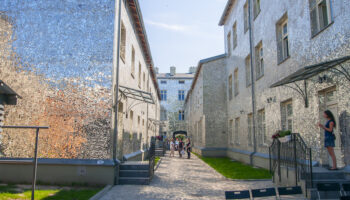
16 Fun Things to Do in Lodz, Poland
Reader interactions.
December 15, 2019 at 4:43 am
What bout Warsaw and its nightlife? I’ve been to Warsaw twice and it was the most crazy time in my life! I can recommend you mazowiecka street and new orleans in the centre!
Leave a Reply Cancel reply
Your email address will not be published. Required fields are marked *
This site uses Akismet to reduce spam. Learn how your comment data is processed .
Things to Do in Kotelniki, Russia - Kotelniki Attractions
Things to do in kotelniki.
- 5.0 of 5 bubbles
- 4.0 of 5 bubbles & up
- Good for a Rainy Day
- Good for Kids
- Budget-friendly
- Good for Big Groups
- Adventurous
- Hidden Gems
- Good for Couples
- Honeymoon spot
- Good for Adrenaline Seekers
- Things to do ranked using Tripadvisor data including reviews, ratings, photos, and popularity.
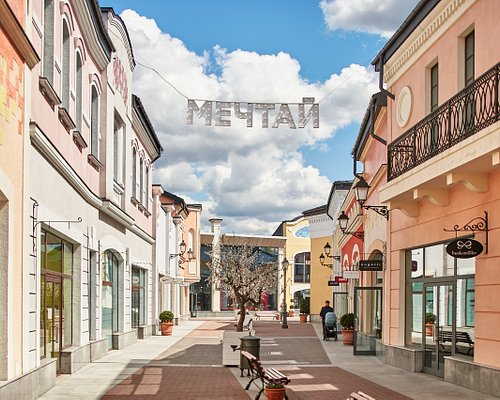
1. Outlet Village Belaya Dacha

2. Belaya Dacha Museum

3. Church of the Kazan Icon of God's Mother

5. Bolshoi Lyuberetskiy Mine

6. Arena Space

7. L'Etoile City of Dreams
- Outlet Village Belaya Dacha
- Church of the Kazan Icon of God's Mother
- Belaya Dacha Museum
- Bolshoi Lyuberetskiy Mine

13 Best Things to Do in Krakow
Written by Joni Sweet Updated Mar 24, 2023
Effortlessly beautiful and steeped in history, Krakow often doesn't get the glory it deserves on tourists' European vacations. But the Polish city rewards those who visit with unrivaled sightseeing opportunities, a vibrant live music scene, pretty parks, and impeccably preserved medieval attractions. It's one of the best places to visit in Poland .
Krakow's Old Town is one of the first ever UNESCO World Heritage Sites and remains the top place to visit in the city today. It's conveniently located at the base of Wawel Royal Castle , where you can see lovely gardens and private apartments once used by royal guests. You'll want to leave room on your itinerary to visit Kazimierz , the former Jewish district, and explore Jewish history. You can also see Schindler's Factory , a World War II museum housed in the former factory that was previously owned by Oskar Schindler, who saved more than 1,000 Jews from death.
Krakow's efficient public transportation system and park-lined streets make it a pleasant place for many hours of sightseeing. Whenever you need a break, you'll easily be able to relax and refuel at one of the city's abundant pierogi joints or trendy cafés. Krakow also makes a convenient home base for exploring other important tourist attractions around Poland , including the Auschwitz-Birkenau Memorial camps and the Wieliczka Salt Mine .
Make the most of your Poland travel itinerary with our list of the best things to do in Krakow.
1. Tour Krakow's Old Town
2. marvel at st. mary's basilica, 3. wander wawel royal castle, 4. descend into the rynek underground museum, 5. play at the krakow pinball museum, 6. visit oskar schindler's enamel factory, 7. stroll through planty park, 8. immerse yourself in the eagle pharmacy museum, 9. see the ghetto heroes square, 10. see a fragment of the ghetto wall, 11. watch a performance at the juliusz slowacki theatre, 12. head to the auschwitz-birkenau memorial and museum, 13. take a day trip to the wieliczka salt mine, map of things to do in krakow, krakow, poland - climate chart.
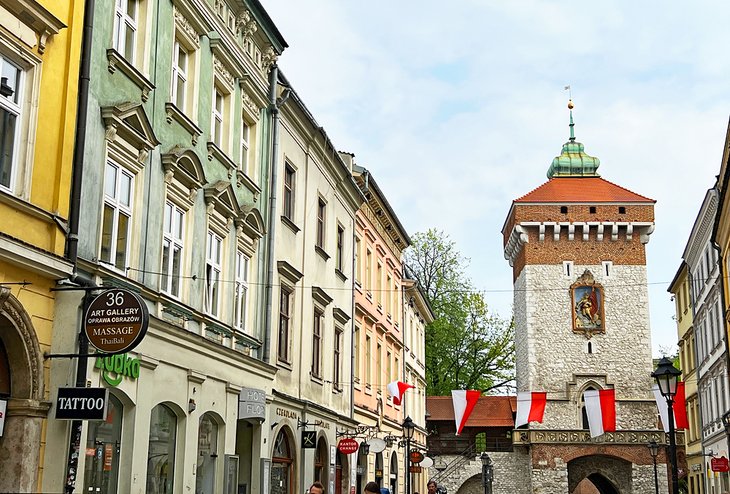
If you only have time for one thing to do in Krakow, seeing the city's Old Town should be top of your list. A UNESCO World Heritage Site since 1978, this attraction has been a thriving commercial center for roughly 1,000 years.
While Krakow's Old Town has a maze of cobblestone streets, it's always easy to find your way back to its center: Rynek Glowny (Market Square), Europe's largest medieval town square. Check out the Cloth Hall , an iconic Renaissance-style structure that brims with souvenir shops–a throwback to its golden age some 600 year ago, when the building bustled with international traders swapping exotic imports with Polish salt from the Wieliczka Salt Mine.
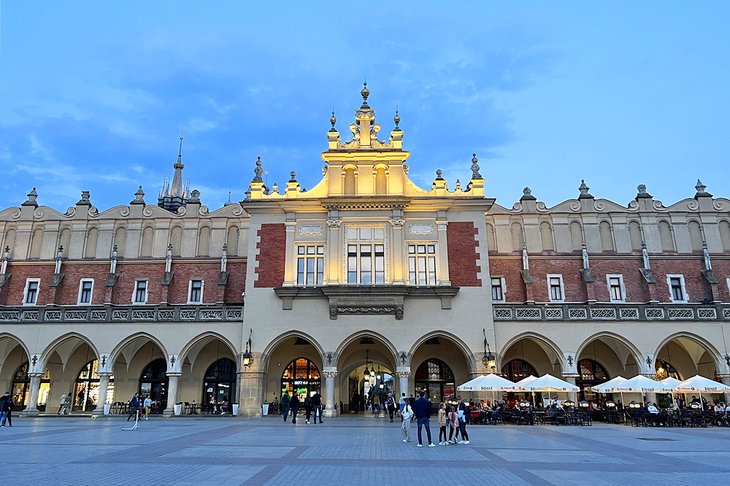
Situated just outside the Cloth Hall, the Town Hall Tower offers panoramic views of Krakow from its highest floor. You can also see the mechanism behind the structure's antique clock, which relies on radio waves from Mainflingen, Germany to stay accurate.
Other Old Town highlights include Royal Road (a thoroughfare flanked by historic sites that starts at St. Florian's Gate ), St. Mary's Basilica, the Pharmacy Museum , and the Church of St. Anne. But beyond offering hours of touring, the Old Town is simply a great place to relax with some coffee and cake at one of the many outdoor cafés in the area.
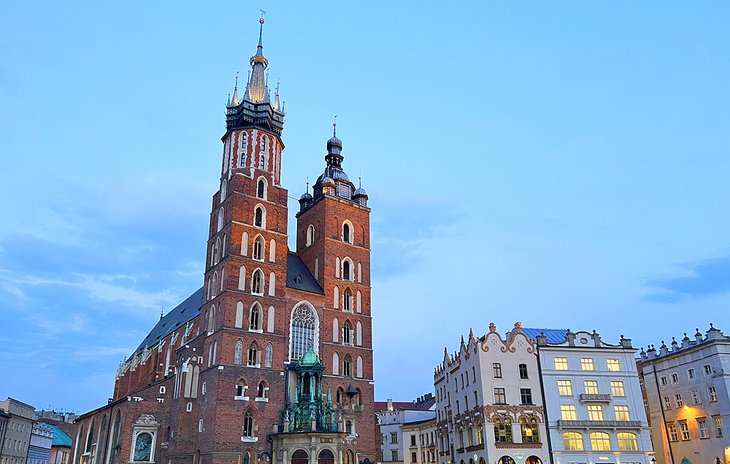
Situated on the eastern corner of Rynek Glowny is one of the most iconic symbols of Krakow: St. Mary's Basilica. The attraction has had a presence in Krakow since the 1220s, although the structure you see today has been rebuilt and renovated over the centuries.
The Gothic-style brick church features two bell towers, one of which is topped by a gilded crown that dates back to 1666. Historically, the taller of the bell towers would ring at the opening and closing of the city, and to alert residents of a fire or attack from a foreign invader.
Tourists can appreciate the bell today when it plays "Hejnal Mariacki" ("St. Mary's Trumpet Call") every hour on the hour. Listen for the five-note bugle call to stop abruptly–it's a tribute to a trumpeter who was killed after attempting to warn city dwellers of a siege.
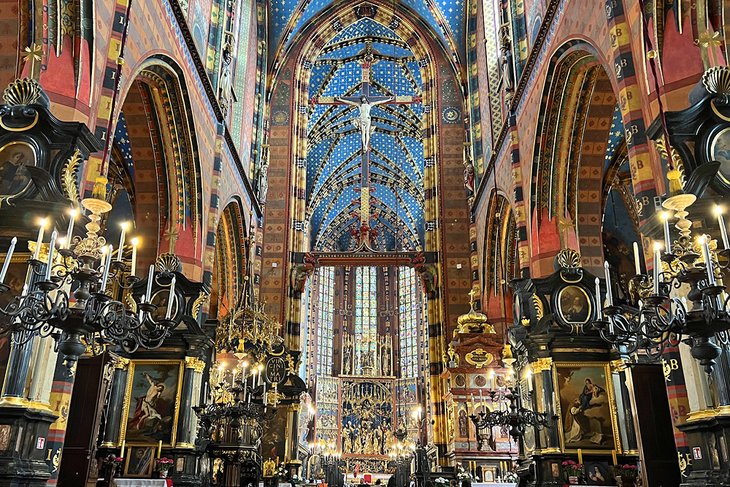
It's definitely worth touring the interiors of the church, which feature exquisite stained-glass windows and a nave decked out in gold stars. There's also a massive, intricately carved altarpiece that's considered to be one of the most important pieces of medieval art in Poland. You can learn more about its restoration at the Rynek Underground Museum.
Address: Plac Mariacki 5, 31-042 Kraków
Official site: https://mariacki.com/en/
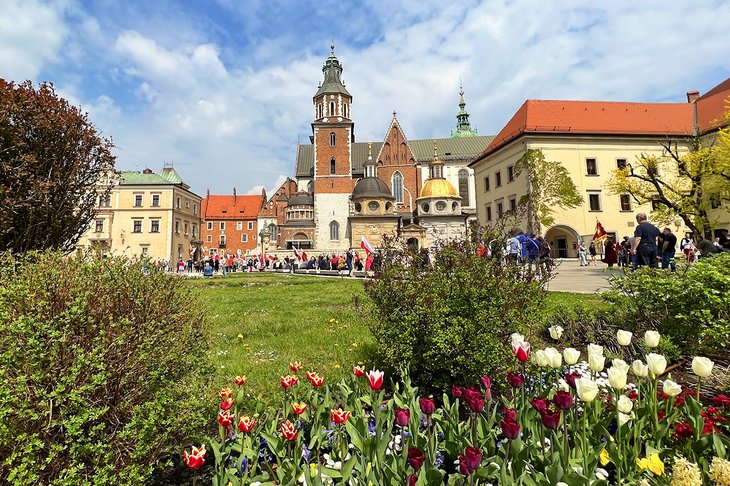
Reserve at least half a day in your Krakow itinerary to explore Wawel Royal Castle–a historical and cultural treasure for Poland. The 16th-century castle has been converted into a museum with a series of permanent exhibitions, each of which has their own entrance fee. The most impressive exhibits include the State Rooms and the Royal Private Apartments, where you can see magnificent antique tapestries and lavish furniture.
The castle grounds are home to the Wawel Cathedral, as well, although it's operated as a separate institution. The Gothic cathedral brims with art and contains the crypts of national heroes, royal figures, and revolutionaries.
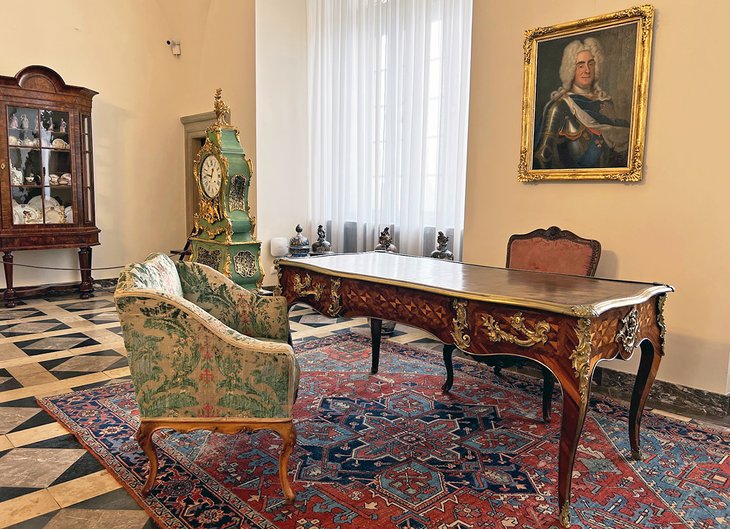
It's also worth climbing the wooden stairs to the top of the Sandomierska Tower for incredible views across the Vistula River. Don't miss the Dragon's Den nearby. Legend has it that this murky cave below Wawel Hill once held a mean dragon who ate maidens. Once you exit the underground chambers, you'll be met with a 50-year-old statue of a dragon that breathes real fire.
Address: Wawel 5, 31-001 Kraków
Official site: https://wawel.krakow.pl/en
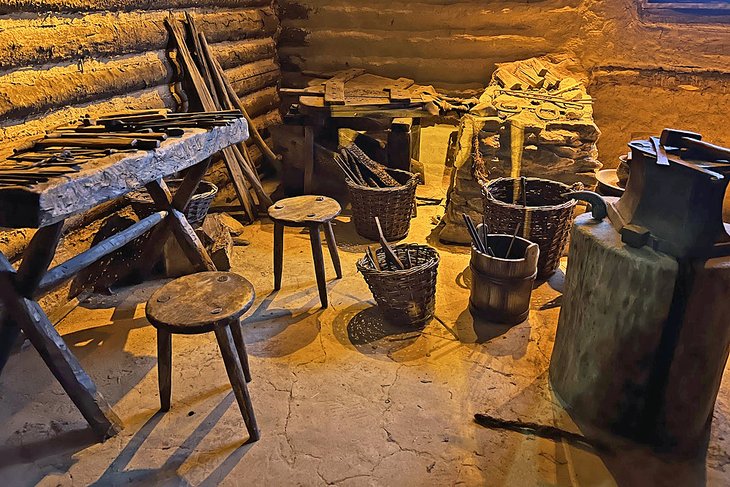
The highlights of Rynek Glowny aren't solely at ground level. Descend the stairs from the Cloth Hall to enter the Rynek Underground Museum, a popular attraction dedicated to preserving and teaching the history of Krakow. The museum is filled with high-tech novelties, including a film projected on a plume of smoke, touchscreen monitors that provide insight on centuries-old artifacts (including coins and jewelry), and even a children's show narrated by an animatronic crow.
But perhaps the most fascinating displays are the remains of the medieval city, including merchants' stalls excavated around 20 years ago and an 11th-century grave of a supposed vampire . Consider spending some extra time at the end of your journey through the museum watching its short documentaries, which take you through various stages of Krakow's history.
Address: Rynek Główny 1, 31-042 Kraków
Official site: https://muzeumkrakowa.pl/en/branches/rynek-underground
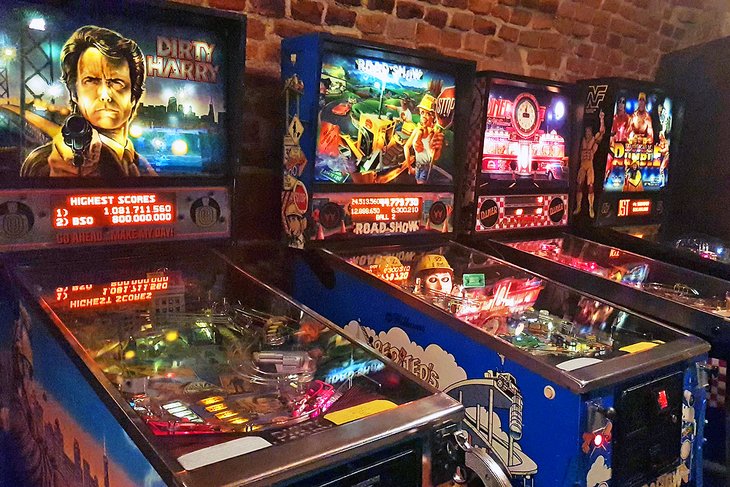
Around 90 pinball machines and arcade games wait for players to achieve new high scores at the Krakow Pinball Museum. Located next to the Atlantic Squash Club , the arcade museum contains some of the world's most popular pinball machines, including Indiana Jones, the Addams Family, and Cactus Canyon, some of which date back to the 1950s. The entry fee includes unlimited free plays on all games, so you can keep playing until your thumbs get tired.
Address: Stradomska 15, 31-068 Kraków,
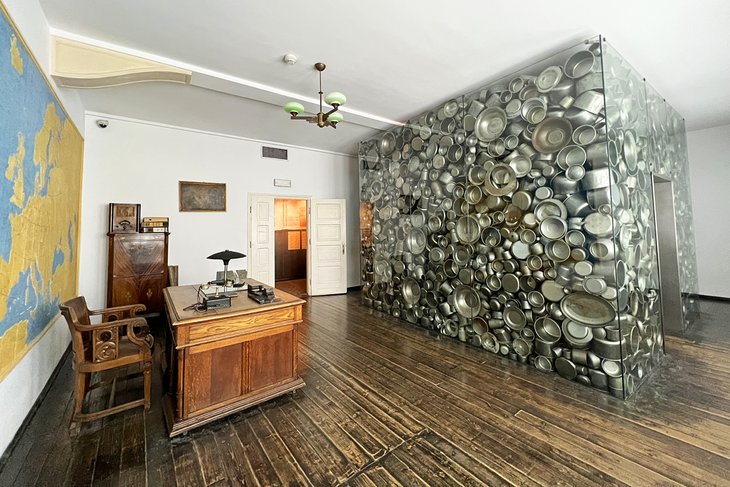
More than 1,200 Jews were spared from concentration camps during the Holocaust when their employer, Oskar Schindler, insisted they were essential workers at his enamelware factory. That site now houses a museum that explores the tumultuous history of World War II and the German occupation of Krakow.
The museum contains dozens of rooms that aim to recreate different aspects of life at that point in history, including narrow alleyways of the ghetto with the sounds of dogs barking and Nazi officers yelling, basements where Jews hid from the Nazis, a railway station lobby flanked by troop mobilization posters, and prison cells that held members of the resistance and academics. Tourists can also see the desk used on the set of Steven Spielberg's 1993 film Schindler's List , along with a giant cube filled with enamelware produced at the factory.
Address: Lipowa 4, 30-702 Kraków,
Official site: https://muzeumkrakowa.pl/en/branches/oskar-schindlers-enamel-factory
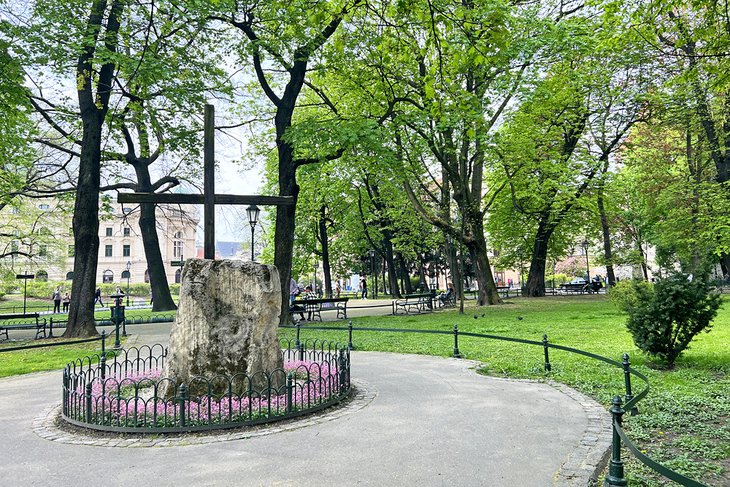
Planty Park, one of Krakow's largest city parks, encircles its Old City. It contained the city's defensive fortifications many centuries ago, but in the mid-19th century, its walls were razed and moats were filled to make way for the green belt you see today.
The park's lush array of trees and flowers make it one of the best places to take a stroll in the city and watch everyday life unfold. Keep your eyes peeled for the many monuments dedicated to Polish authors, intellectuals, and scientists, including Nicolaus Copernicus .
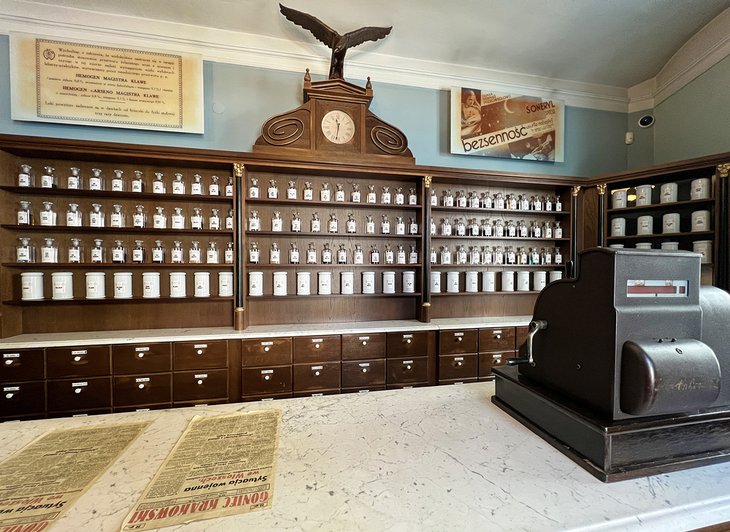
Of the four pharmacies that stood in Krakow's Podgórze district , Eagle Pharmacy was the only one to remain open when the Germans converted the area into a ghetto for Jews in March 1941. With the help of his loyal staff, pharmacy owner Tadeusz Pankiewicz dedicated himself to helping the ghetto inhabitants. The pharmacy offered medications, shelter, food, and news from the outside world, despite the risk of severe consequences from the Nazis for doing so.
The pharmacy has since been converted into a remarkable museum that welcomes visitors to dig through its drawers, open up its cabinets, and watch recorded interviews with those who lived in the ghetto.
The museum's atmosphere of exploration helps enlighten the hidden history of this pharmacy and deepen your understanding of what life was like for the Jewish community at this time.
Address: Plac Bohaterów Getta 18, 30-547 Kraków
Official site: https://muzeumkrakowa.pl/en/branches/eagle-pharmacy
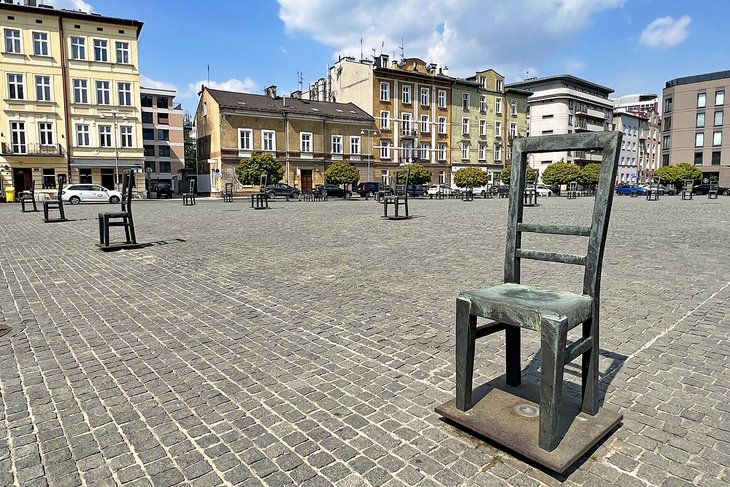
You'll notice a series of empty bronze chairs standing in the square outside the Eagle Pharmacy Museum. The installation, known as Ghetto Heroes Square, serves as a memorial to the victims of the Krakow ghetto whose furniture would get piled up in this area when they were forcibly relocated.
The empty chairs are a symbol of the devastation of Krakow's Jewish community, whose population dropped from around 70,000 before World War II to somewhere between 100 and 2,000 today.
Address: Plac Bohaterów Getta, 30-547 Kraków
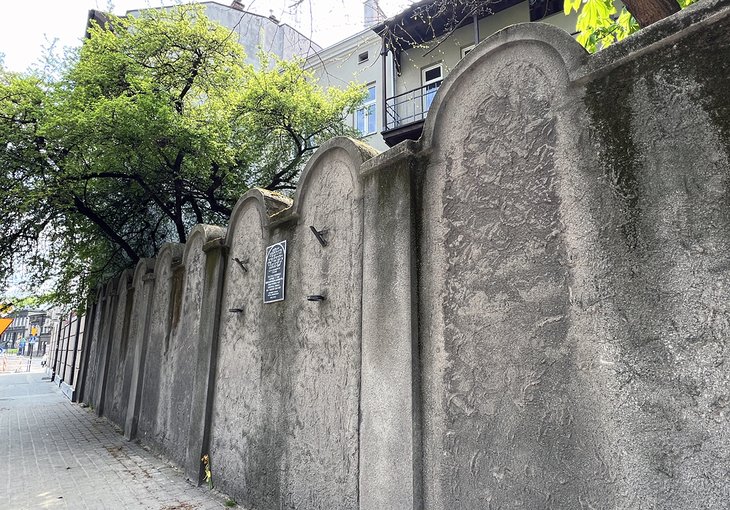
When the Nazis turned the Podgórze district into a ghetto, they surrounded it with a stone wall to contain some 20,000 Jews and separate them from the rest of the city. The ominous wall, which was described by one victim as having the shape of the tombstones Jews would eventually occupy, has largely been torn down, but you can still see a fragment that remains on Lwowska Street. It has a plaque that memorializes the victims who endured immense suffering and death at the hands of the Nazis.
Address: Lwowska 29, 30-548 Kraków
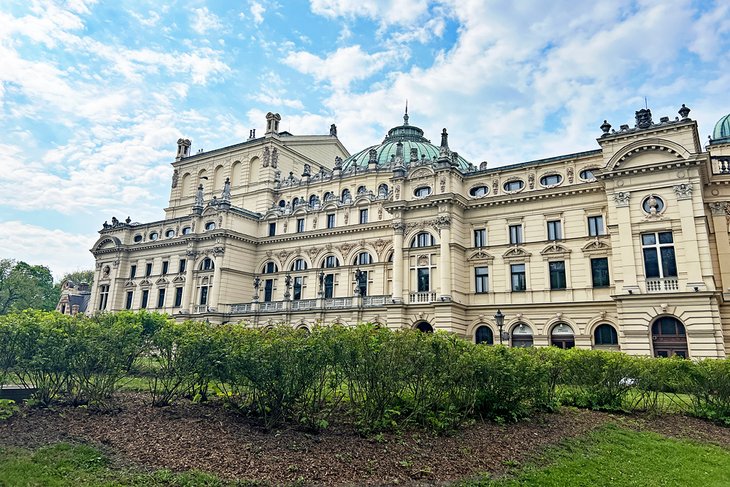
Considered to be the place where modern Polish theater was born, the Juliusz Slowacki Theatre has staged plays regularly since it debuted in the late 19th century. The Baroque-style theater features an elegant entry hall and four lavishly decorated stages, which nearly always have theatrical and operatic performances–check the website for the most up-to-date listings.
But even if you can't get inside to see a show, you can still appreciate the theater from the outside on a walk through Planty Park. Plan to go late in the day to see its facade glimmer in the golden sun, then light up beautifully after dark.
Address: Plac Świętego Ducha 1, 31-023 Kraków
Official site: https://teatrwkrakowie.pl/en
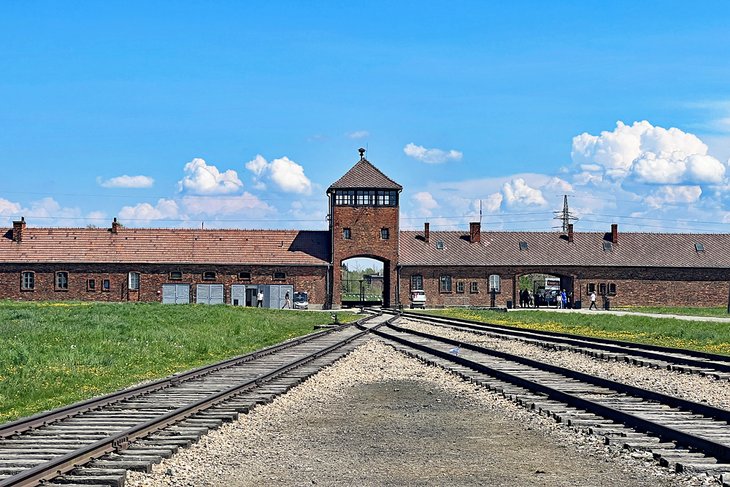
While emotionally demanding, taking a day trip to the Auschwitz-Birkenau Memorial and Museum is one of the most important things to do while in Krakow.
The former concentration camp is about 90 minutes away by bus and offers guided tours in English and several other languages throughout the week. The tours, which take around four hours, include stops at both Auschwitz I and the sprawling Birkenau (also known as Auschwitz II) camps. You'll see the decrepit conditions where the camp's 1.3 million residents were kept and, for the vast majority, murdered.
Exhibits of victims' belongings, including shoes, pots and pans, and a room full of hair that was cut from victims' heads and intended to be sold, help deepen visitors' understanding of the human toll at this horrific place.
Visiting this memorial is a heartbreaking experience, but one that's an essential part of remembering the victims and making sure that history doesn't repeat itself.
Official site: https://www.auschwitz.org/en/visiting/
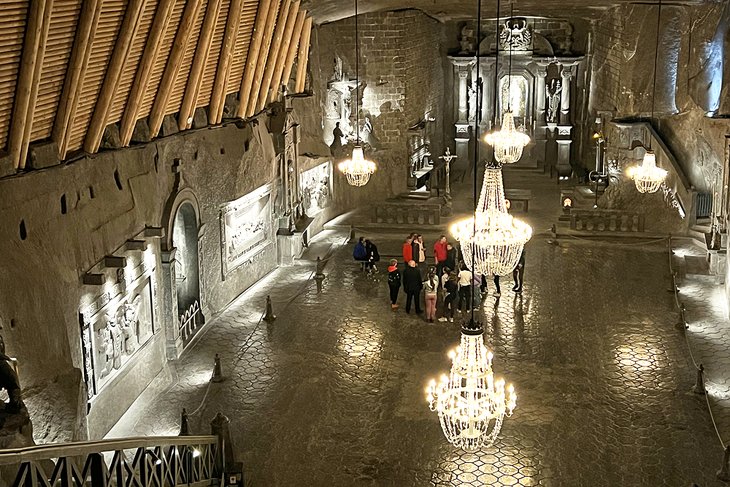
Less than an hour away by bus, the Wieliczka Salt Mine makes a fun day trip on the outskirts of Krakow. Both a UNESCO World Heritage Site and an official Polish Historic Monument, this is one of Poland's top attractions . It has produced salt since the Neolithic times (although commercial salt mining ceased in 1996).
Tourists can make their way down some 800 stairs to explore the mine's maze-like passageways, many of which contain quirky rock salt statues carved by miners, and an underground lake.
The crown jewel of the attraction, however, is the underground Chapel of St. Kinga . The chapel, including its chandeliers, tiled floor, and walls, are sculpted entirely in salt. Be sure to look out for a salt mural of da Vinci's The Last Supper on the left wall.
Address: Daniłowicza 10, 32-020 Wieliczka
Official site: https://www.wieliczka-saltmine.com/

THE 10 BEST Things to Do in Elektrostal
Things to do in elektrostal.
- 5.0 of 5 bubbles
- 4.0 of 5 bubbles & up
- Good for a Rainy Day
- Good for Kids
- Good for Big Groups
- Adventurous
- Budget-friendly
- Hidden Gems
- Good for Couples
- Honeymoon spot
- Good for Adrenaline Seekers
- Things to do ranked using Tripadvisor data including reviews, ratings, photos, and popularity.

1. Electrostal History and Art Museum

2. Statue of Lenin

3. Park of Culture and Leisure
4. museum and exhibition center.

5. Museum of Labor Glory

7. Galereya Kino
8. viki cinema, 9. smokygrove.

10. Gandikap
11. papa lounge bar, 12. karaoke bar.
- Statue of Lenin
- Electrostal History and Art Museum
- Park of Culture and Leisure
- Museum and Exhibition Center
- Museum of Labor Glory
- Bahasa Indonesia
- Slovenščina
- Science & Tech
- Russian Kitchen
Moscow metro to be more tourist-friendly
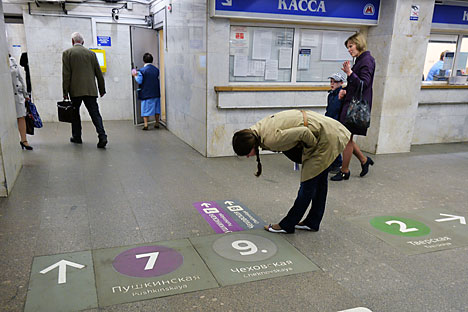
A new floor sign system at the Moscow metro's Pushkinskaya station. Source: Vladimir Pesnya / RIA Novosti
For many years now, Moscow has lagged behind St. Petersburg when it comes to making life easy for tourists, especially where getting around the city is concerned. Whereas the northern capital installed English-language maps, signs and information points throughout its subway system in the late 2000s, the Russian capital’s metro remained a serious challenge for foreign visitors to navigate.
Recent visitors to Moscow may have noticed some signs that change is afoot, however. In many stations of the Moscow subway, signs have appeared on the floor – with large lettering in Russian and English – indicating the direction to follow in order to change lines. Previously, foreign visitors using the Moscow metro had to rely solely upon deciphering the Russian-language signs hanging from the ceilings.
Student volunteers help tourists find their way in Moscow
However, this new solution has a significant drawback. “The floor navigation is visible only to a small stream of people – fewer than three people per meter. During peak hours, this navigation will simply not be noticed,” said Konstantin Trofimenko, Director of the Center for Urban Transportation Studies.
One of the biggest problems for tourists in the Russian capital remains the absence of English translations of the names of subway stations in the station vestibules and on platforms. The Department of Transportation in Moscow has not commented yet as to when this problem will be solved. However, Latin transliterations of station names can already be found in the subway cars themselves.
Finding the right exit
At four of the central stations – Okhotny Ryad, Teatralnaya, Ploshchad Revolyutsii, Lubyanka and Kuznetsky Most – the city authorities have now installed colorful stands at the exits with schematic diagrams of the station’s concourse and surrounding area, which provide information about the main attractions and infrastructural facilities.
The schematic diagrams are the work of British specialists from the City ID and Billings Jackson Design firms, who have already implemented successful projects in New York and London.
According to Alexei Novichkov, expert at the Design Laboratory at the Higher School of Economics, the design of these information booths raises no objections: The color solutions, font, layout and icons are consistent with international standards.
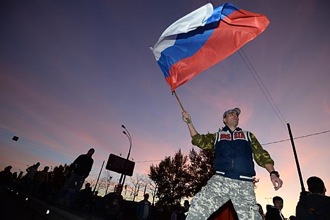
However, the stands do have some shortcomings. “Many questions are raised about the fact that the developers of these maps did not apply orientation to the north, and have provided layouts of the surrounding areas with respect to the exits,” says Novichkov. “A system like that is used for road navigators, but most of the ‘paper’ guides and maps are oriented strictly to north. The subway map is also oriented to north, so people may become confused.”
Muscovites and foreign visitors are generally positive about these navigation elements, with most of them citing the numbered exits from the subway as the most useful feature.
The fact is that many Moscow subway stations have several exits. One of the busiest central stations of the Moscow subway in particular, Kitay-Gorod, has more than a dozen exits. Previously, these exits were differentiated from each other only with signs in Russian referring to the names of streets and places of interest to which they led – making it easy for tourists and those with poor navigation skills to get confused.
Now, when making an appointment to meet a friend, instead of struggling to find the right spot when they tell you: “I'll meet you at the exit to Solyanka Street,” you can just propose to meet under a specific exit number.
“I’ve lived in Moscow for seven years,” says Angelika, a designer from Voronezh, “but I still don’t always know where to go to find the place I need, so the new schematic diagrams will be very useful. Previously, some subway stations had maps, but not with so much detail.”
Teething problems
Foreigners, meanwhile, focus their attention on other elements. “It is good that the new information boards have QR-codes, which can be ‘read’ by smartphones,” says Florentina, a writer from Vienna. But there are also shortcomings. “The English font of the information on posters and in the captions to theaters and museums is too small – you have to come very close to see it well,” she says.
Pleasant encounters on the streets of Moscow
Florentina was also dissatisfied with the fact that such posters are not provided at all subway stations: “When I was trying to find Tsaritsyno Park (a museum and reserve in the south of Moscow) at a subway station with the same name, it turned out to be quite difficult,” she says.
“There are no maps with landmarks for other areas, such as those already in the city center. There were no clear pointers in the English language, and the passers-by I met did not speak in English, so they could not help me,” she adds.
Officials say that the navigation system is gradually being redeveloped and improved. According to Darya Chuvasheva, a press representative for the Department of Transport of Moscow, the introduction of a unified navigation system will take place in stages.
“By the end of 2014, the system will first appear on the first subway stations on the Circle Line. By the end of 2015, we plan to install the system at all major stopping points, subway stations and transport interchange hubs,” says Chuvasheva.
All rights reserved by Rossiyskaya Gazeta.
to our newsletter!
Get the week's best stories straight to your inbox
This website uses cookies. Click here to find out more.

IMAGES
VIDEO
COMMENTS
14. Slowinski Sand Dunes. 15. Biskupin Settlement. Map of Tourist Attractions in Poland. 1. Wieliczka Salt Mine, Wieliczka. Wieliczka salt mine. The 13 th -century Wieliczka salt mine is just as important for the locals today as it was hundreds of years ago, but for a very different reason.
12. Energylandia. Try all of Energylandia's—Poland's largest theme park—123 attractions spread across 6 distinctive zones: Fairytale Land, Family Zone, Extreme Zone, Water Park, Dragon Zone, and Aqualantis. Ride the popular Hyperion, Speed, and Space Booster rollercoasters; and watch shows like 'Extreme show' and 'The Egypt ...
Map of Tourist Attractions in Poland. 17. Zakopane. A two-hour drive from Krakow, Zakopane is a delightful town up in the mountains. It's a beloved year-round spot for locals who enjoy the summertime fun such as a hike to Morskie Oko, while in the summer the tumbling snow makes for some great skiing.
7. Ojcow. Ojcow National Park. The tiny village of Ojcow, just 16 kilometers outside Krakow, is the gateway to Ojcow National Park. Poland's smallest national park at just 21.46 square kilometers, Ojcow is heavily forested and home to towering limestone cliffs, over 400 caves, and two river valleys.
Knock back a vodka shot. Poles love vodka and one of the joys of venturing abroad is to join in with the locals. Clear vodkas, like top-shelf Wyborowa and Belvedere, are drunk icy and neat, but Poles like to experiment as well. Wiśniówka is cherry-flavoured, sweet and painfully easy to over-indulge in. More palatable, particularly mixed with ...
Discover the best attractions in Poland including Malbork Castle, Wieliczka Salt Mine, and Museum of WWII. Discover the best attractions in Poland including Malbork Castle, Wieliczka Salt Mine, and Museum of WWII. ... Poland's spiritual capital began with the arrival of the Paulite order from Hungary in 1382, who named the 293m hill in the ...
4. Gdansk. Gdansk is one of Poland's most popular tourist destinations, located on the Baltic coast. When you think of Poland, beaches and seaports don't necessarily come to mind, which is why Gdansk is one of the best places to visit in Poland. Situated in the north of Poland, Gdansk is a port city on the Baltic Coast.
Salt mine in Wieliczka. Ancient salt mines (in operation for 700 years). The small Krakow's suburb ranks to the most famous tourist destinations in Eastern Europe. Often described as a fairy tale kingdom made of salt. A mysterious labyrinth of 300 kilometres of halls and corridors hewn in pure salt (the lowest are 372 meters underground).
Try all of Energylandia's—Poland's largest theme park—123 attractions spread across 6 distinctive zones: Fairytale Land, Family Zone, Extreme Zone, Water Park, Dragon Zone, and Aqualantis. Ride the popular Hyperion, Speed, and Space Booster rollercoasters; and watch shows like 'Extreme show' and 'The Egypt Theatre'.
Poland is filled with must-see destinations and things to do. One of the most popular countries to visit in Eastern Europe, Poland offers not only great sightseeing but also lots of historical locations, fun markets, great outdoor destinations, and plenty of fun cuisine. Even better, some of the best places to visit in Poland are outside the biggest cities, so you'll get a chance to experience ...
The restored Castle (pictured) is on the German side. The Park is one of the top tourist attractions in Poland and most easily reached by car if you're visiting from the Polish side. You may also be interested in: Pruhonice Park Prague. Famous Landmarks In Poland - Western Poland (Wielkopolska) 1. Poznan Town Hall
This is most certainly one of the most interesting Polish tourist attractions. This UNESCO World Heritage Site is over 700 years old, has 9 levels, 26 shafts, and its deepest point is 327 meters. In recent years it has been transformed from an industrial plant to a famous tourist attraction and health resort. The Wieliczka Salt Mine has a ...
1. Wroclaw. Source: Audrius Venclova / shutterstock. Wroclaw. Pronounced VRAHTS-wahv, Wroclaw is the fourth-largest city in Poland. Built in the medieval period, the city covers several islands and maintains several beautiful bridges and stunning architecture. Wroclaw has been busy racking up recognition lately.
Polish Easter is traditionally accompanied by many colorful events and tourist attractions. In Poland in particular, Easter is unique, having been part of our tradition and culture for centuries. Those include Easter markets, fairs and markets, colorful processions accompanying Palm Sunday and the associated competitions for the prettiest or ...
It remains one of the most important things to see in and near Krakow, offering an informative and sensitive insight into the horrors of the Holocaust and the destruction wrought by the Nazis on the Jews and other minority groups. The memorial and museum are around an hour from the city centre. 15. Wawel Cathedral.
7. Energylandia. Try all of Energylandia's—Poland's largest theme park—123 attractions spread across 6 distinctive zones: Fairytale Land, Family Zone, Extreme Zone, Water Park, Dragon Zone, and Aqualantis. Ride the popular Hyperion, Speed, and Space Booster rollercoasters; and watch shows like 'Extreme show' and 'The Egypt Theatre'.
Old Town Market Square. How to get there. Map of Tourist Attractions in Warsaw. 17. Warsaw Barbican. One of your first ports of call in Poland's capital should be The Warsaw Barbican. Built in the 16th century, this impressive defensive structure formed part of the fortifications surrounding Warsaw's Old Town.
In the 21st century, Poland is one of the safest countries in Europe, frequently visited by tourists. Poland, especially after joining the European Union in 2004 and acceding to the Schengen Agreement in 2007, became a place frequently visited by tourists. Most tourist attractions in Poland are connected with natural environment, historic sites and cultural events.
Kidburg. 5. Bolshoi Lyuberetskiy Mine. 6. Arena Space. 7. L'Etoile City of Dreams. What are the top attractions to visit in Kotelniki? Things to Do in Kotelniki, Russia: See Tripadvisor's 797 traveler reviews and photos of Kotelniki tourist attractions.
Effortlessly beautiful and steeped in history, Krakow often doesn't get the glory it deserves on tourists' European vacations. But the Polish city rewards those who visit with unrivaled sightseeing opportunities, a vibrant live music scene, pretty parks, and impeccably preserved medieval attractions. It's one of the best places to visit in Poland.
In 1938, it was granted town status. [citation needed]Administrative and municipal status. Within the framework of administrative divisions, it is incorporated as Elektrostal City Under Oblast Jurisdiction—an administrative unit with the status equal to that of the districts. As a municipal division, Elektrostal City Under Oblast Jurisdiction is incorporated as Elektrostal Urban Okrug.
Top Things to Do in Elektrostal, Russia: See Tripadvisor's 801 traveller reviews and photos of Elektrostal tourist attractions. Find what to do today, this weekend, or in April. We have reviews of the best places to see in Elektrostal. Visit top-rated & must-see attractions.
Previously, foreign visitors using the Moscow metro had to rely solely upon deciphering the Russian-language signs hanging from the ceilings. However, this new solution has a significant drawback ...